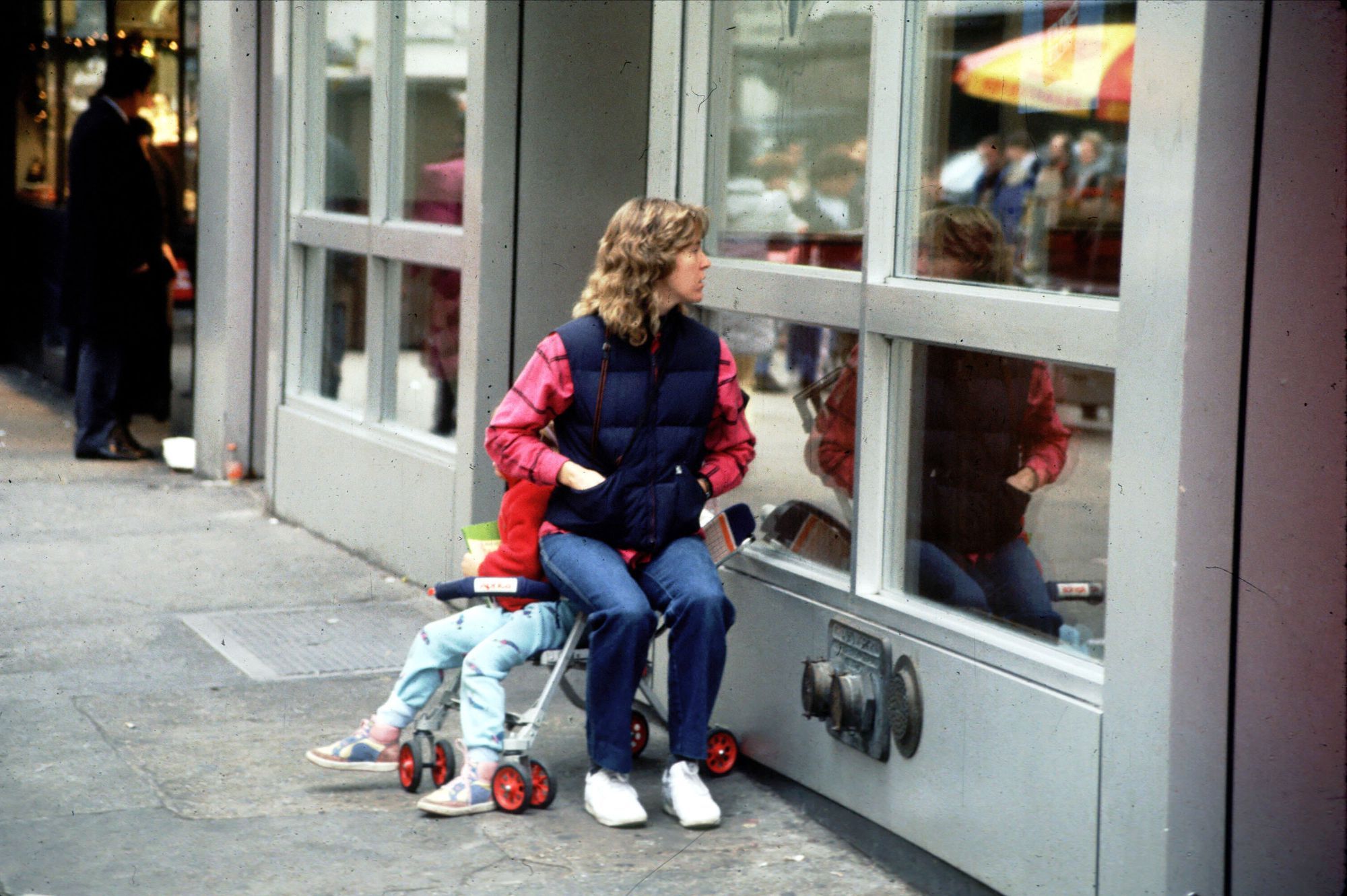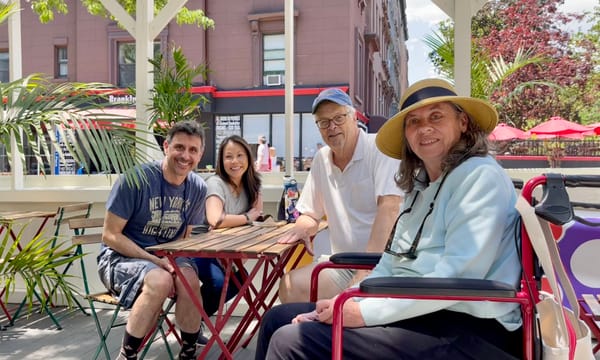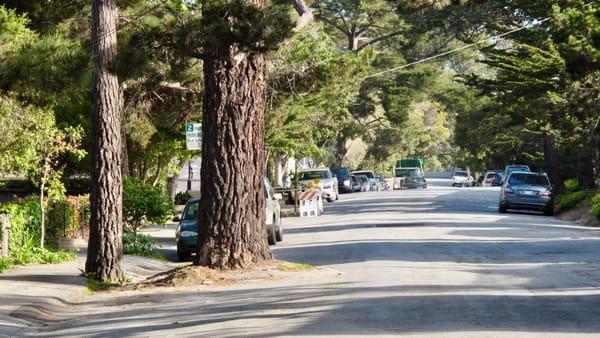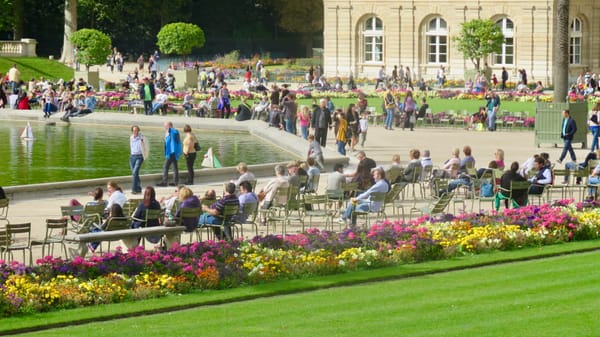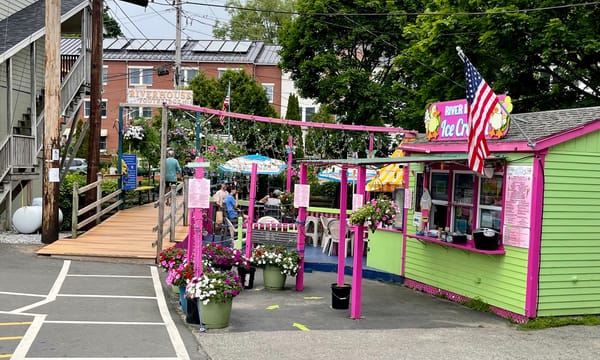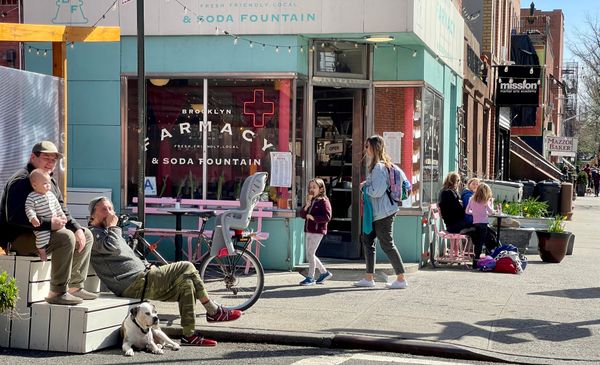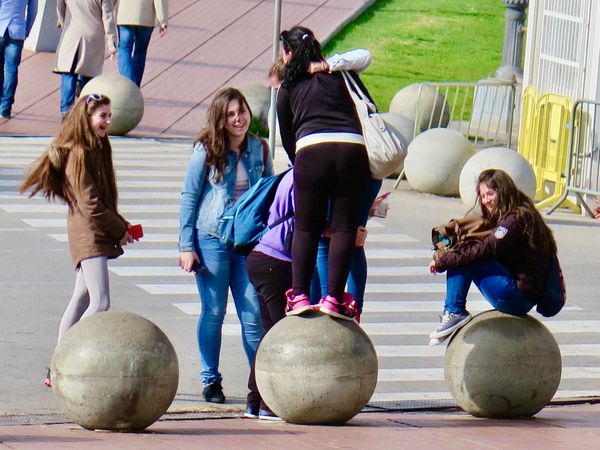Benches and seating are not just objects; they are mirrors to our social behavior. The ways people interact with seating can reflect their personalities, their sense of belonging and security in public spaces, and their openness to other people. To look closely at how people use something as simple as a bench is to shed light on the ways that we interact; the intricacies of how humans share spaces, even when it is time to sit down for a rest.
Seating has always been a key issue for us in every community we have visited or worked in. The very idea conjures up all kinds of reactions. Just putting a seat out makes a strong statement... including whether you are welcome or not.
Below are images from our archives. In our more than 50 years of exploring communities around the world, we have accumulated close to a million images, of which there are easily 50 thousand images of seating. Each of those images tells a story, from where the bench or seat is placed and why was it placed there, to how it is designed and for whom is it meant. But perhaps most interestingly, these images answer an important question: How is the seating being used?
Seating Images from Our Early Years
Each image below tells us a story: The humor of one person's improvised seating atop their child in a stroller; the endless variety of ways people use a simple bench; the importance of triangulation with other places to sit (like on a bollard); the benefits of seating to people of all ages; and the universal value of having one's own special place to chat.
But one thing they have in common is showing that sometimes the simplest seating makes for the best resting place.
Highlights
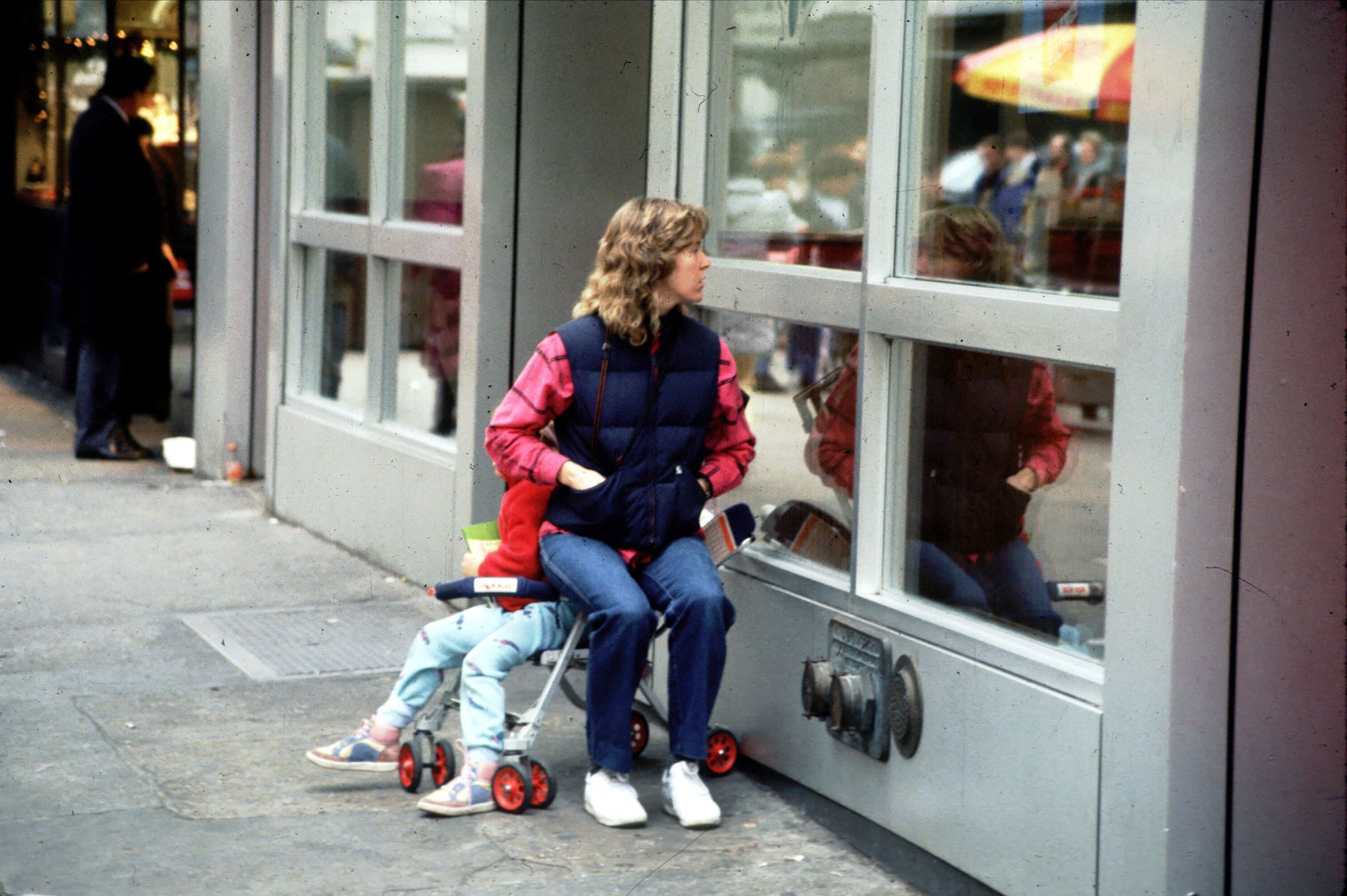
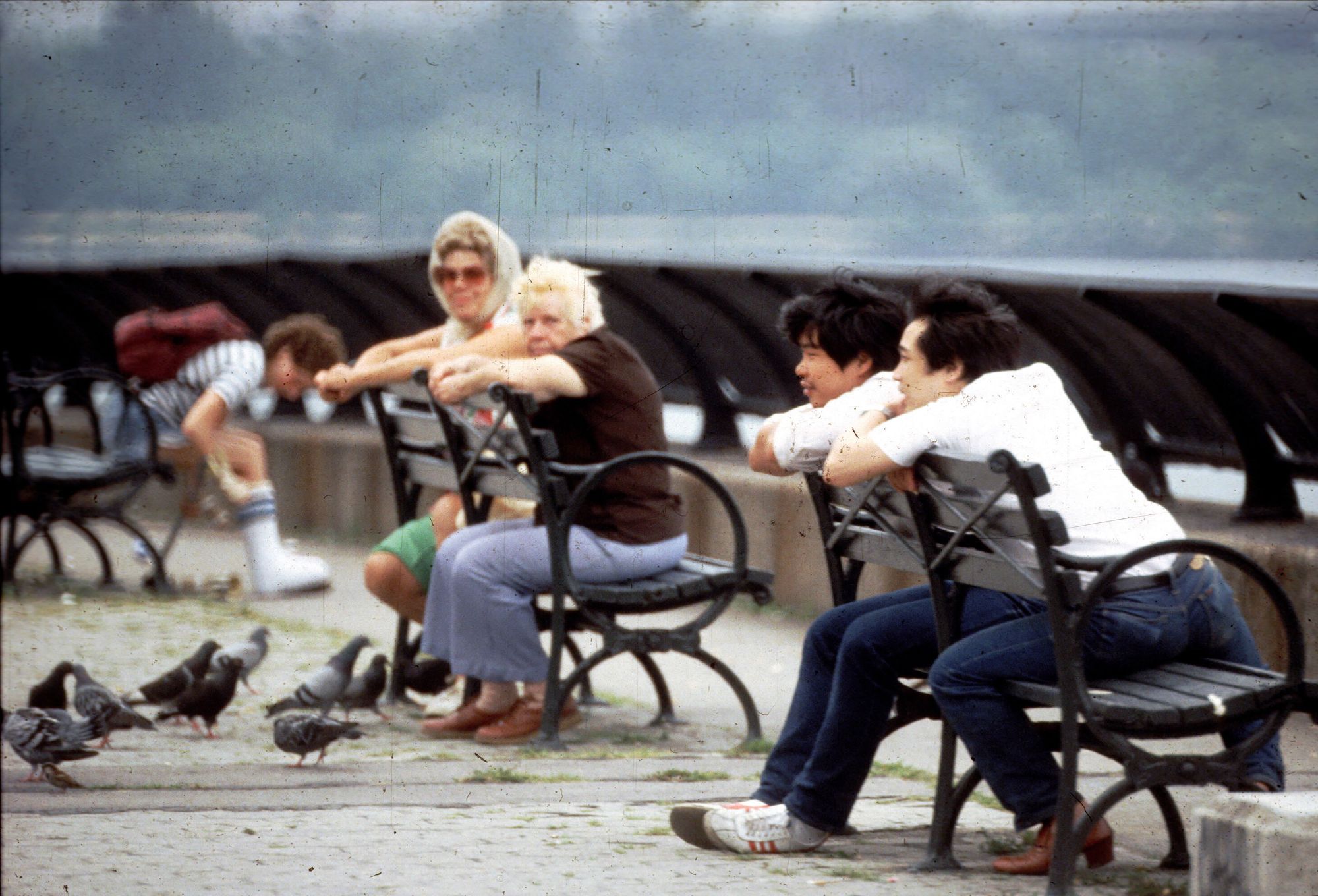
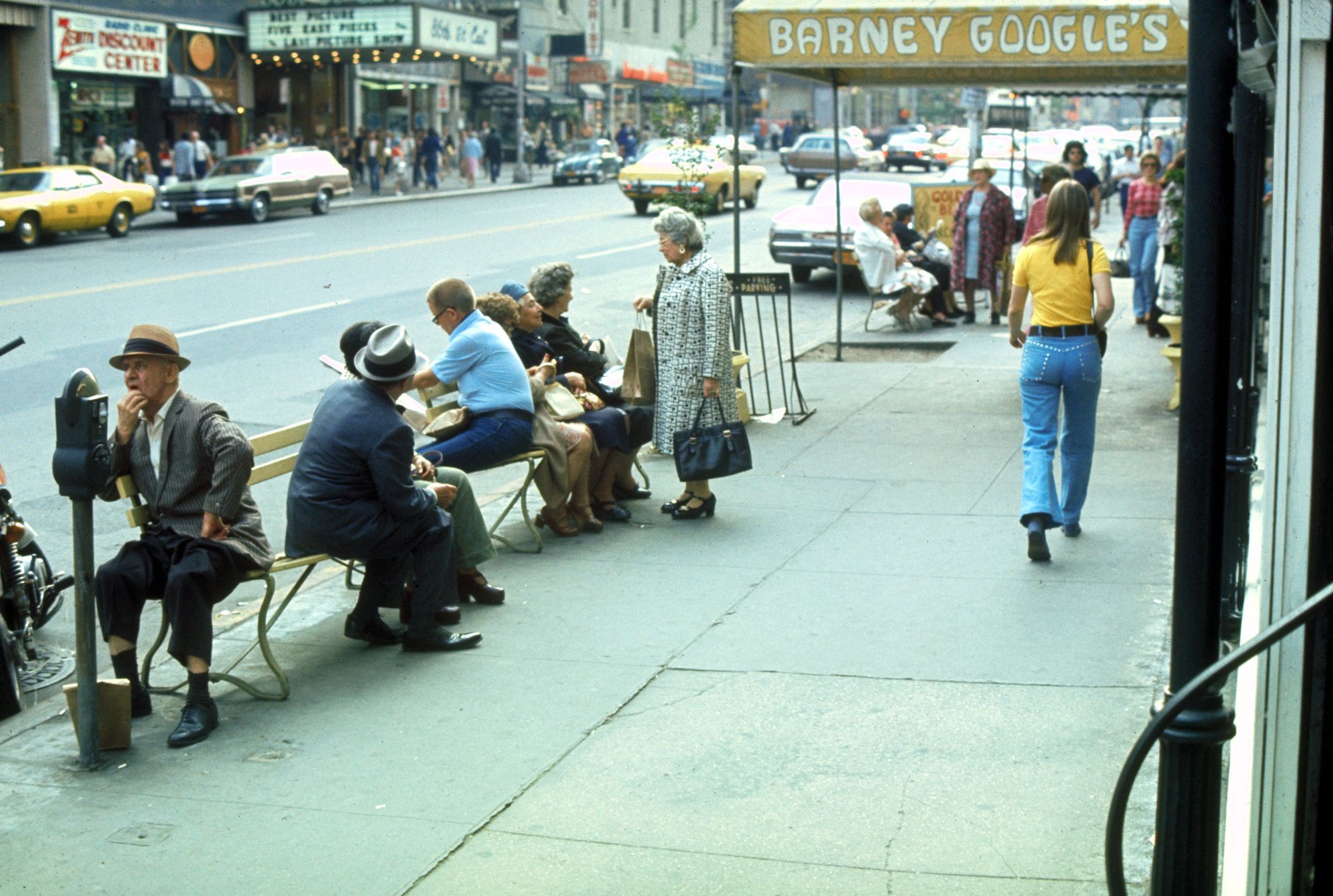
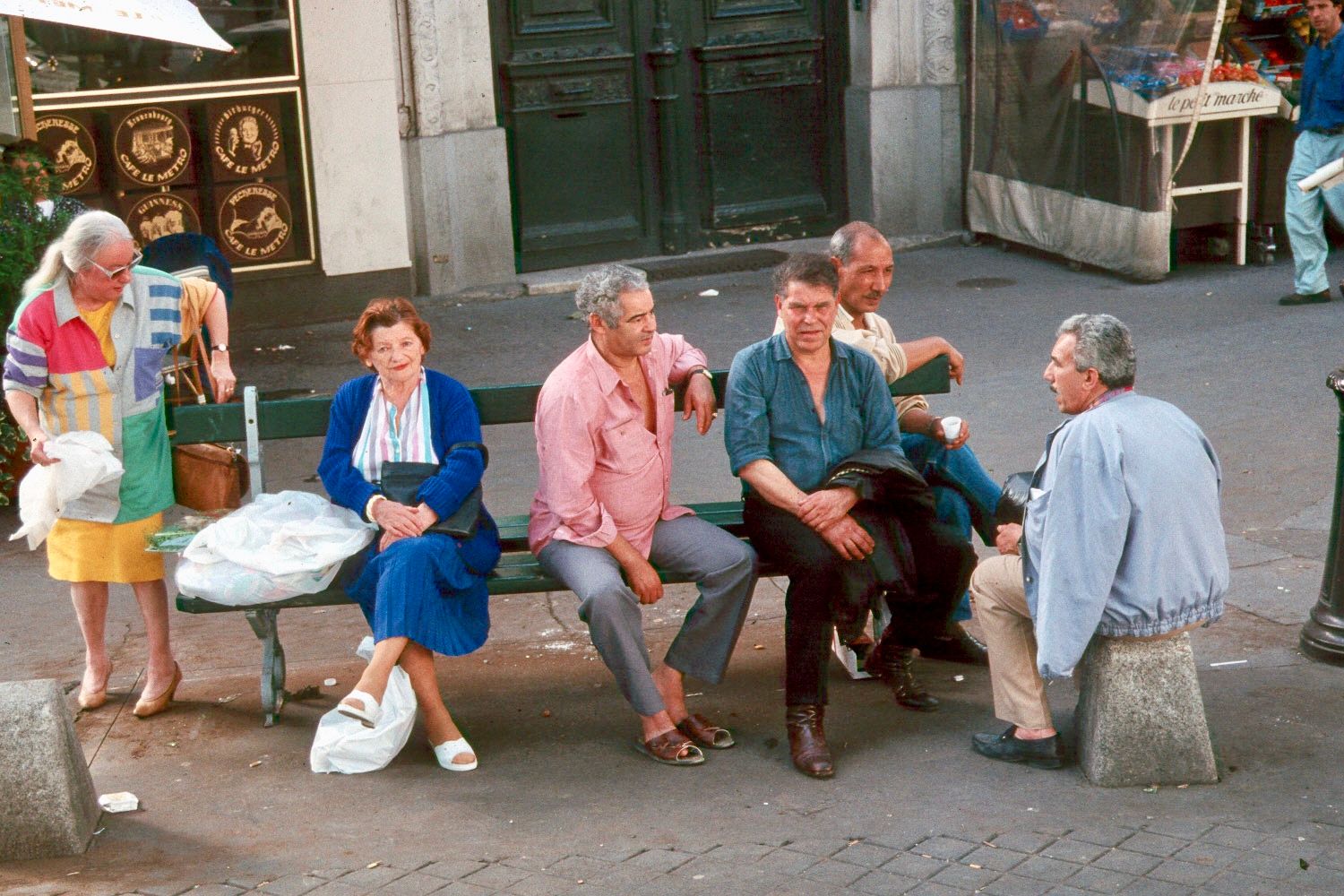
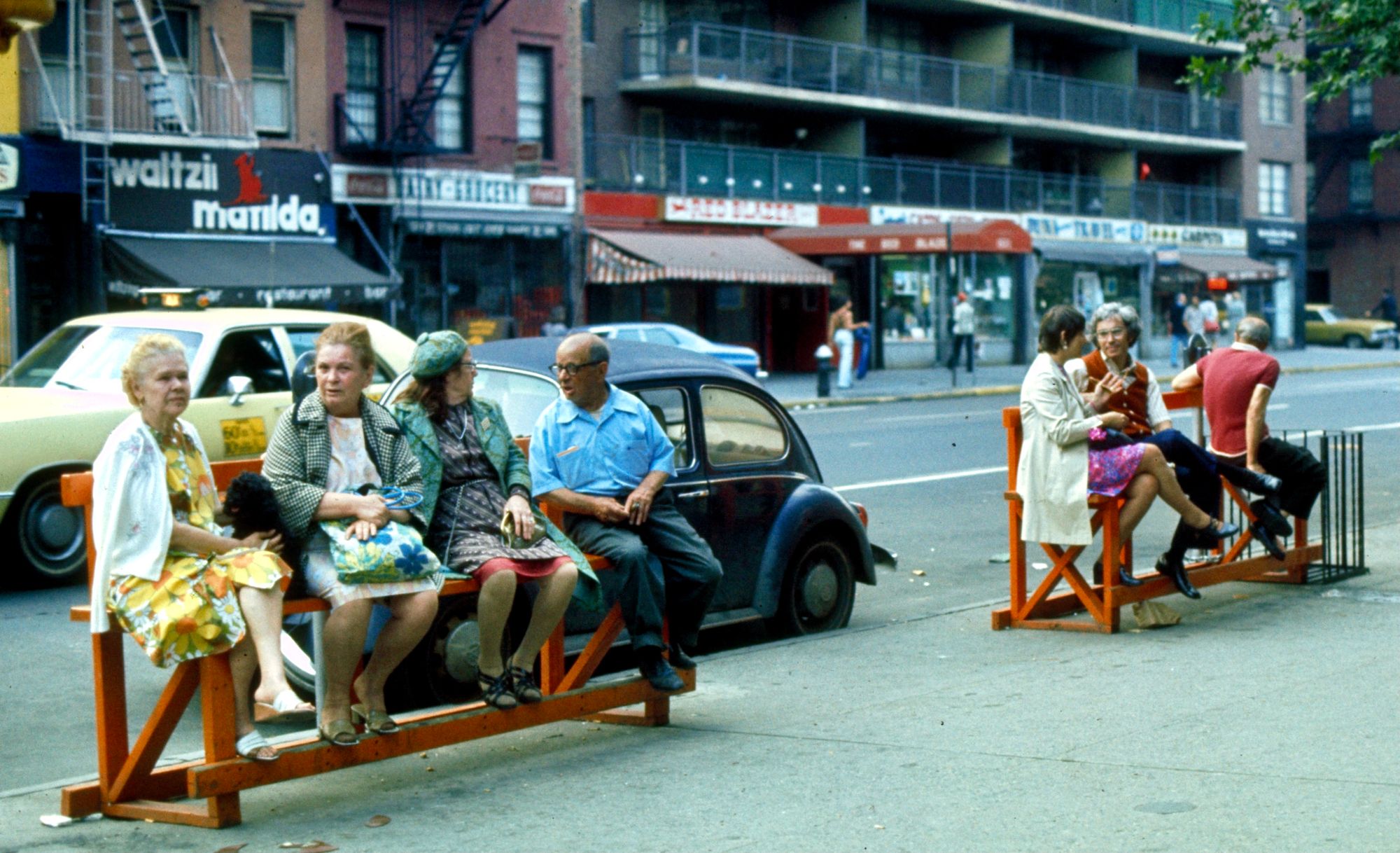
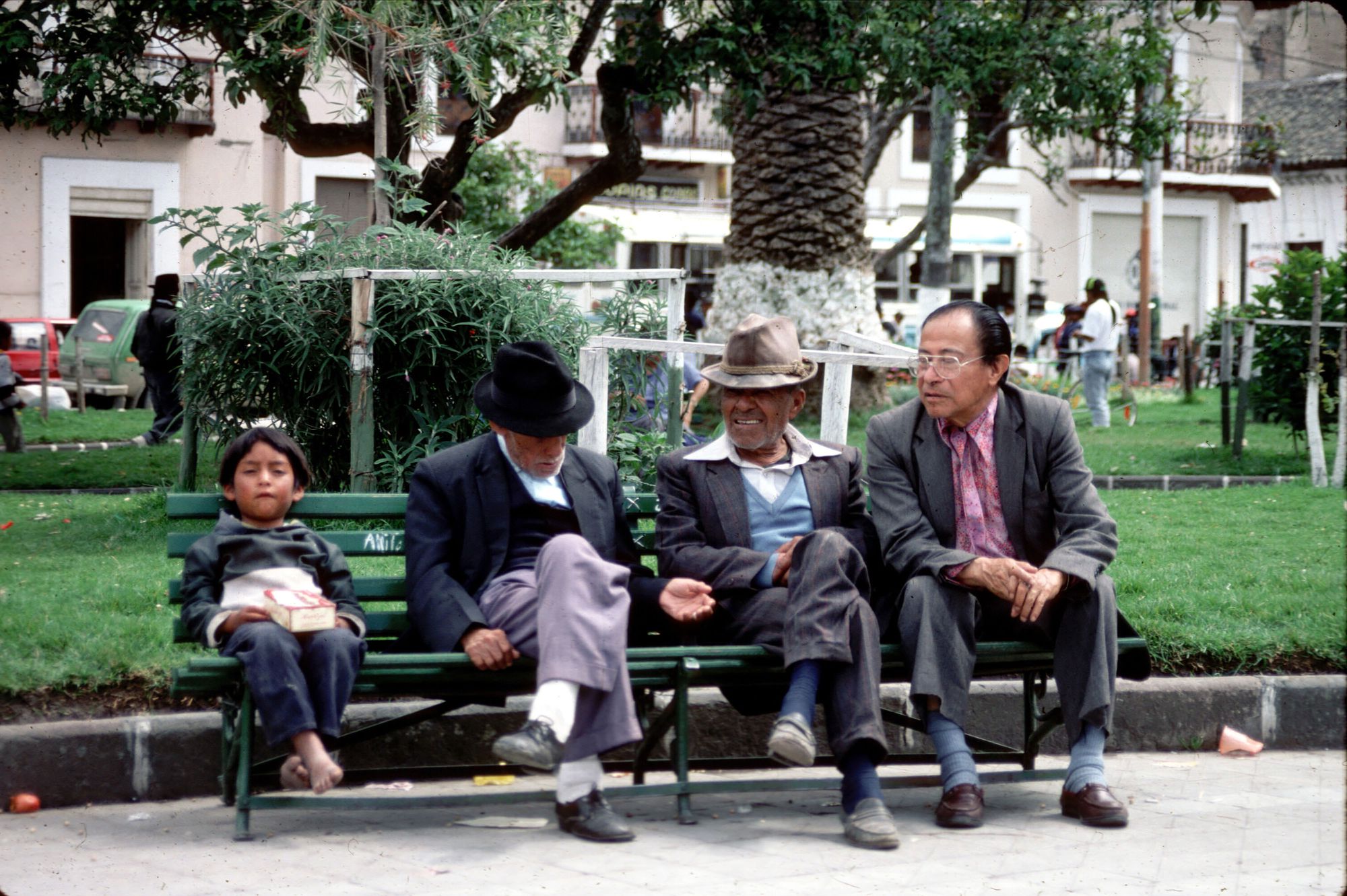
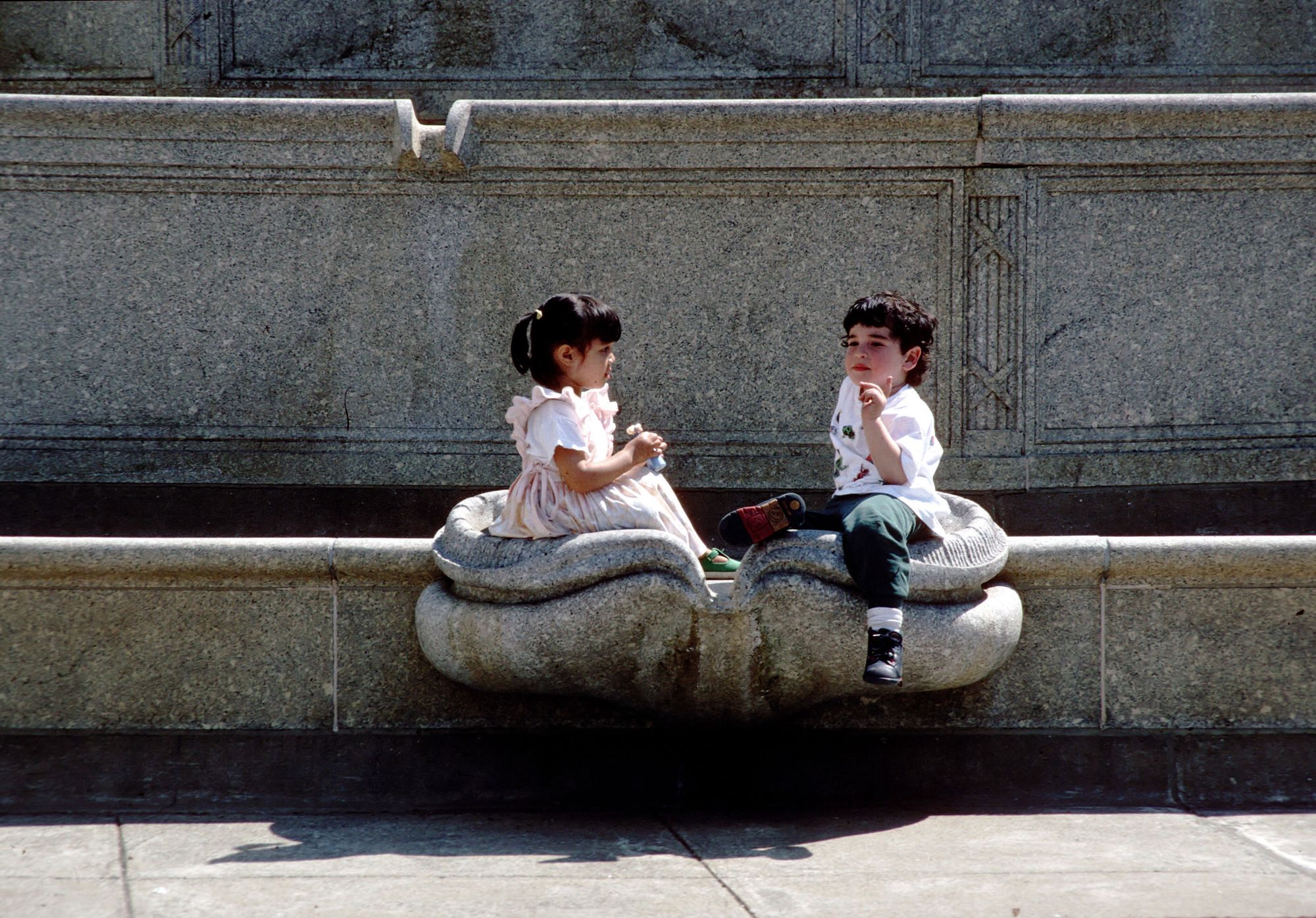
Take these images (below) of what we would call the perfect wall: It's the right height, clearly inviting people to use it as a seat. Its pillars make it a great setting for groups to gather, and even provide a place to lean an elbow or put down a drink.
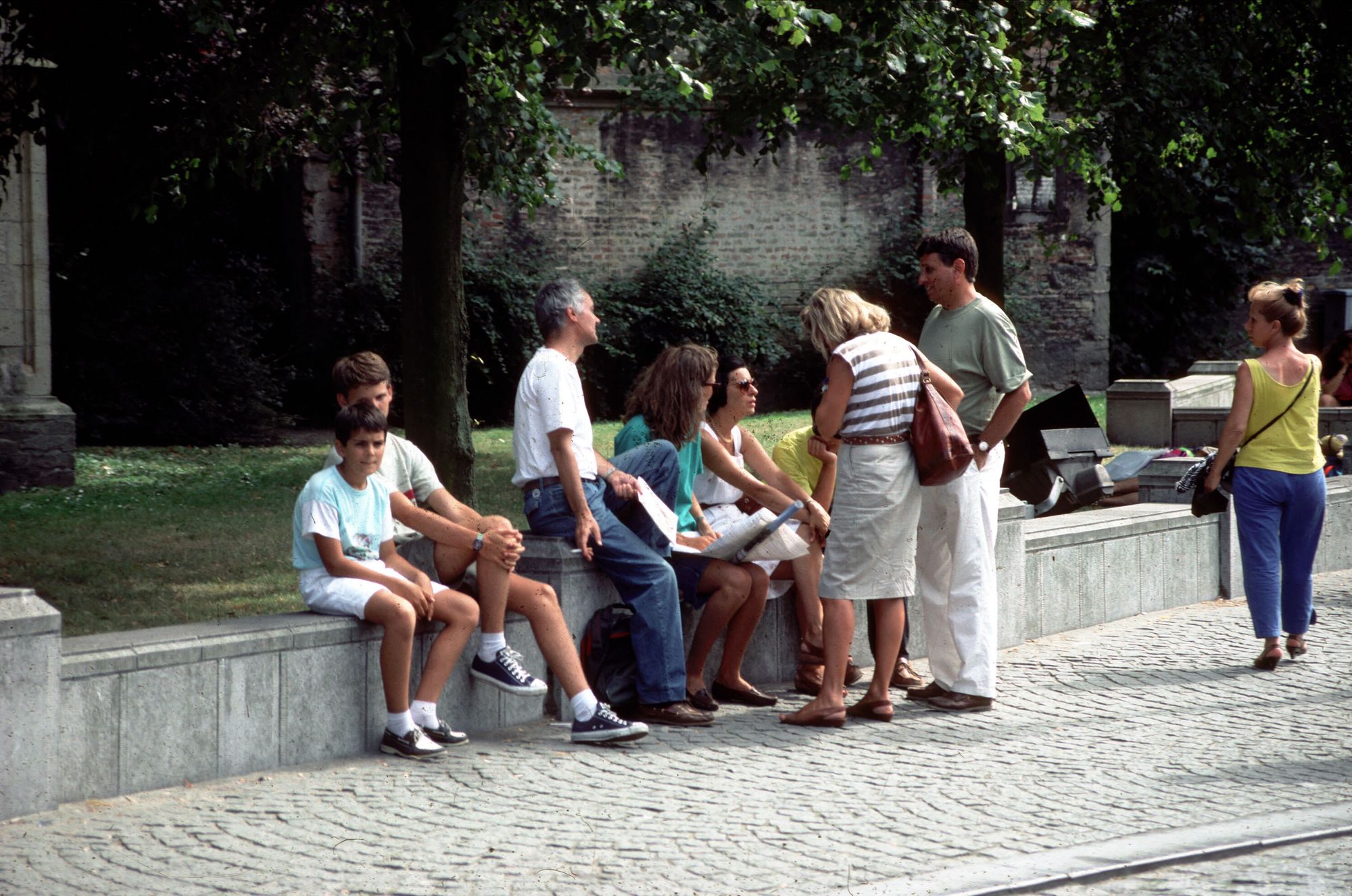
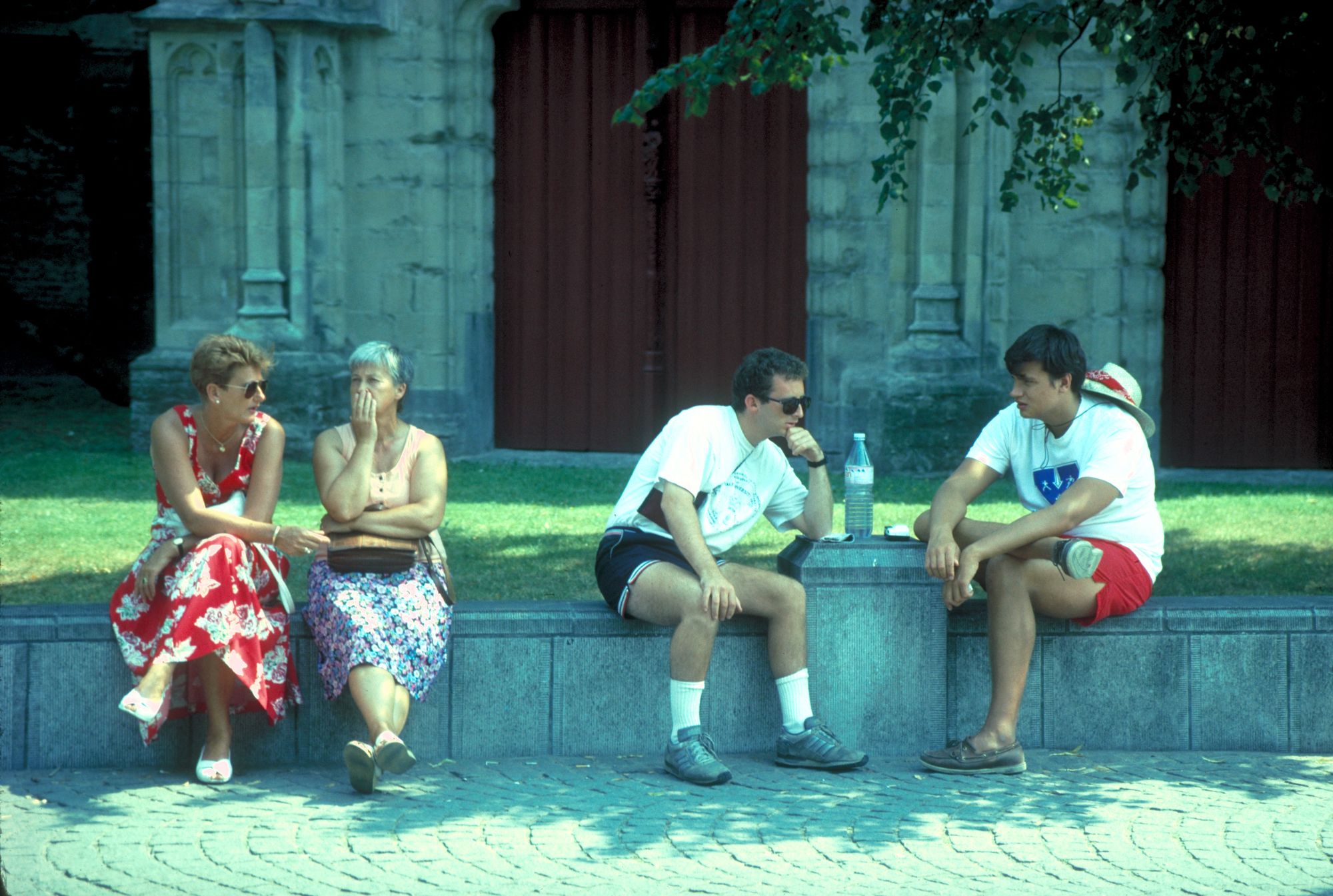
Hostile Spaces: No Place to Sit
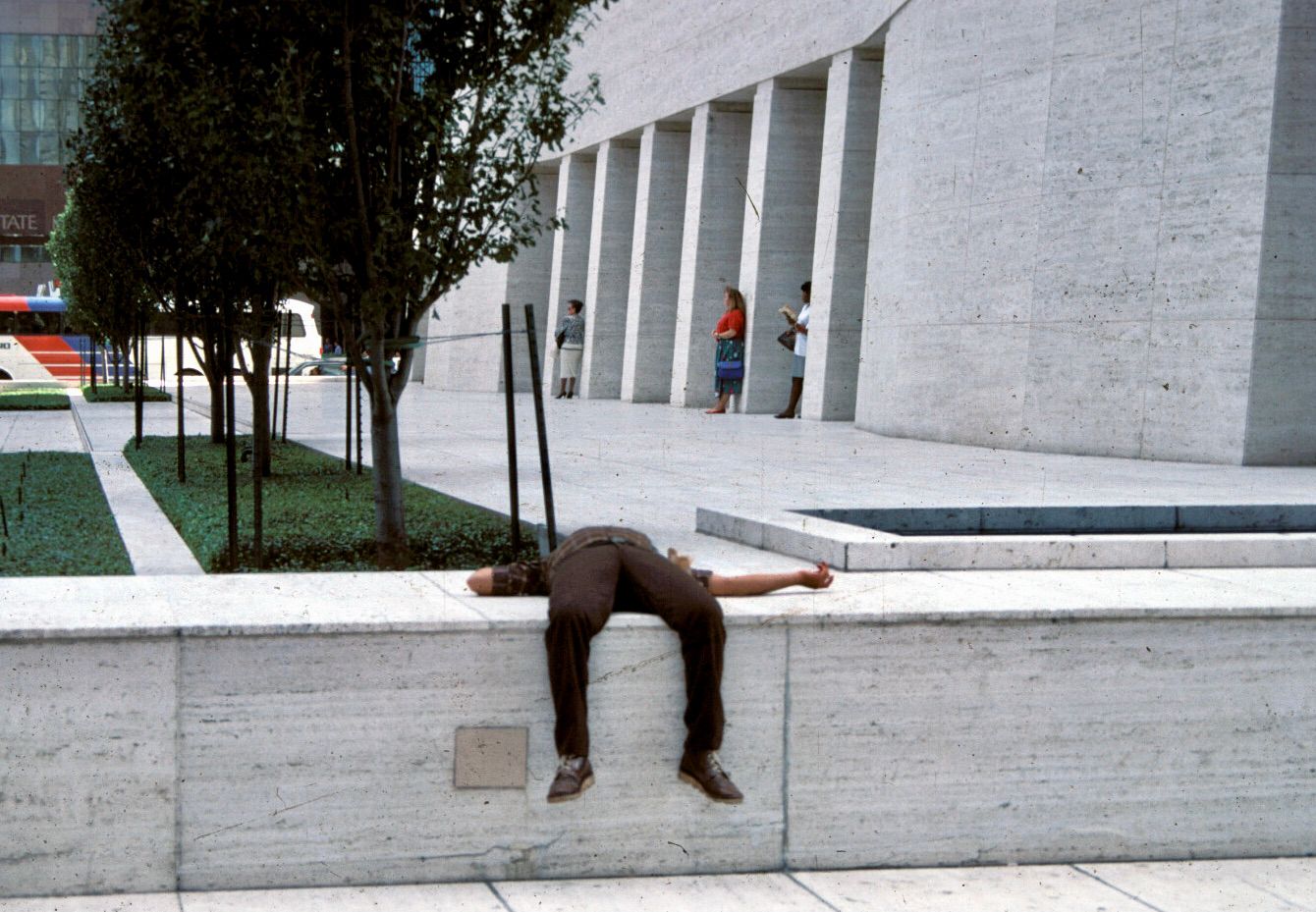
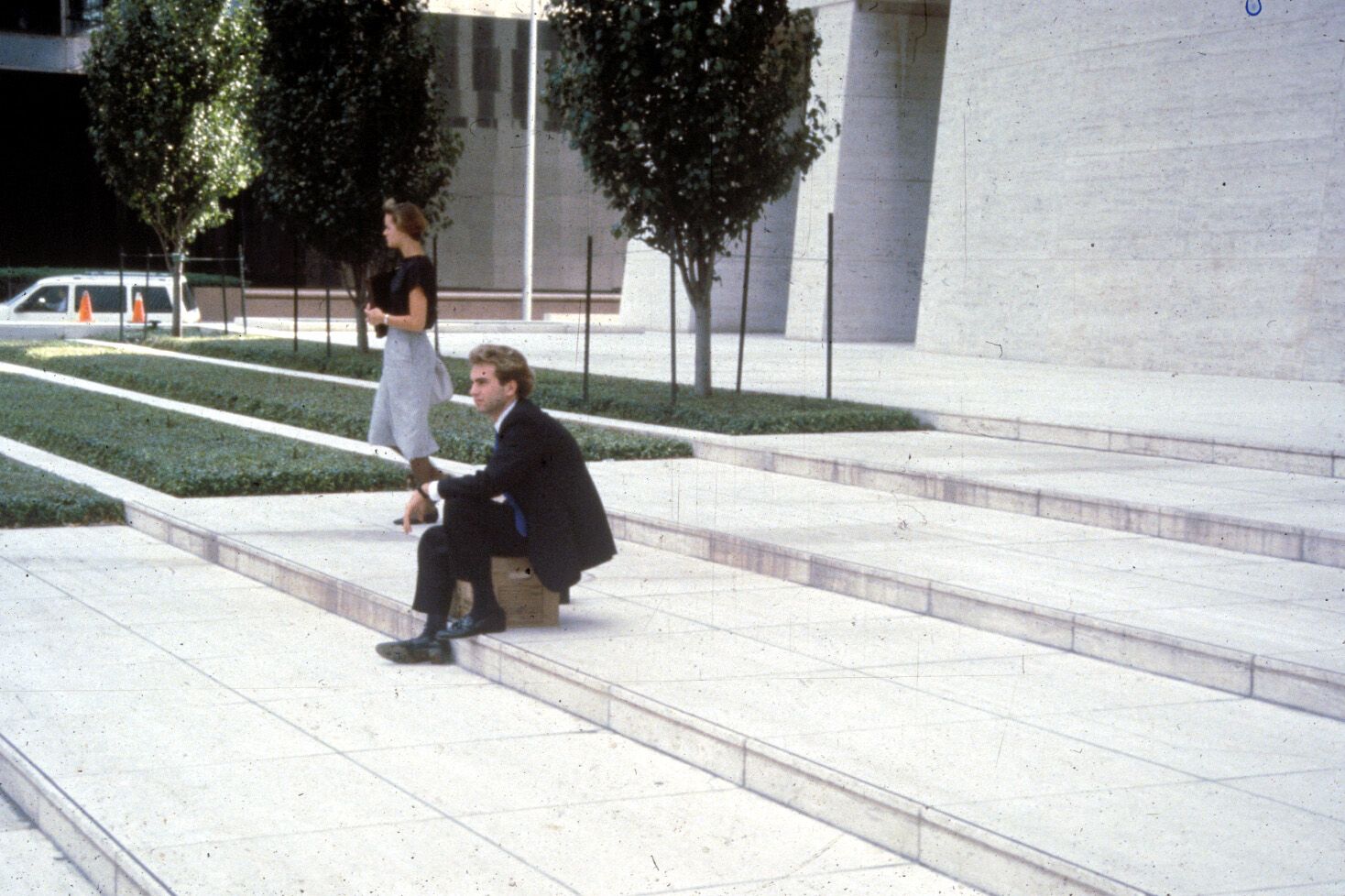
In Houston's Shell Plaza, people had to bring their own seat, and there was nowhere to sit under the trees for shade.
At the same time we were visiting Zurich and other European cities, where amenities such as seating were a basic part of what cities offered to residents and visitors, we were working on many cities all over North America. As an example of this hostility, the Shell Plaza (above) in Houston was one of many plazas in downtowns across the country, in which there was every attempt to keep people from sitting or even using the trees for shade. The idea of seating was often a threat to building owners, many of whom were worried about who might sit on the plaza in front of their building.
This was not an isolated idea: Most cities followed this philosophy in some way or another. In The Social Life of Small Urban Spaces, William "Holly" Whyte wrote of the hostility that confronted people trying to find a simple place to sit:
Benches are artifacts, the purpose of which is to punctuate architectural photos. They are not so good for seating. There are too few of them; they are too small; they are often isolated from other benches or whatever action there is on the plaza.
— William H. Whyte, The Social Life of Small Urban Spaces
Seating Images from the Last 20 Years
The following images show how some cities have gotten seating right. These particular galleries are from our travels in Vail, Stockholm, Barcelona, Venice, Oslo, Paris, New York and Detroit. All boast unique and diverse seating options. The proof is in their patterns of use and enjoyment.
With so much changing about how we will be living in the future, whether that has to do with more people working from home or new norms around personal space, we are asking ourselves: What is the future of public seating in a post-COVID world?
Will our communities be able to support the recovery of social life meaningfully, benches, chairs and all? Will chance encounters and connections take place on park benches, at picnic tables, and on café chairs as before? Only if we make sure people have a place and a reason to stop and linger... starting with a place to sit.
Highlights
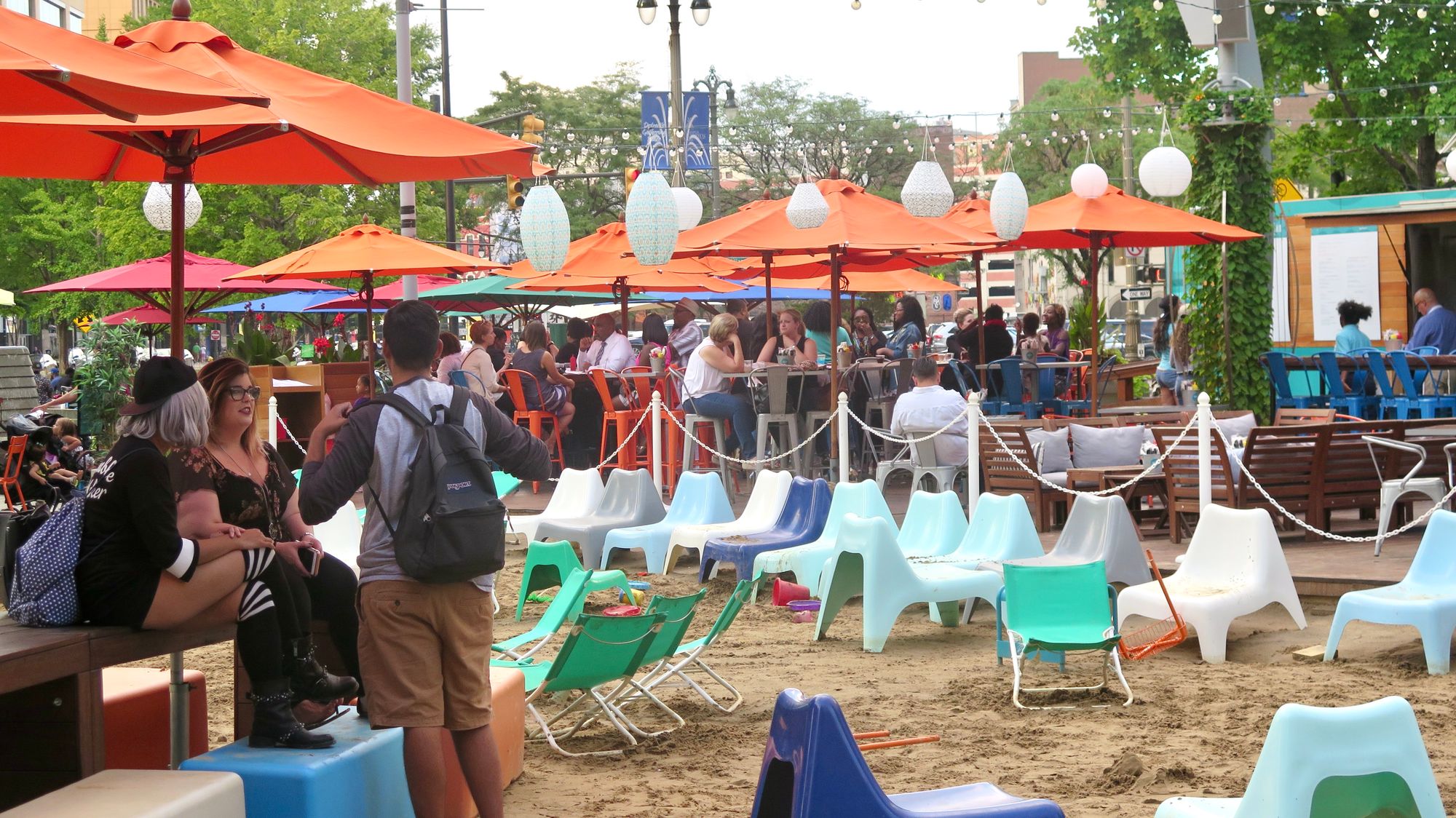
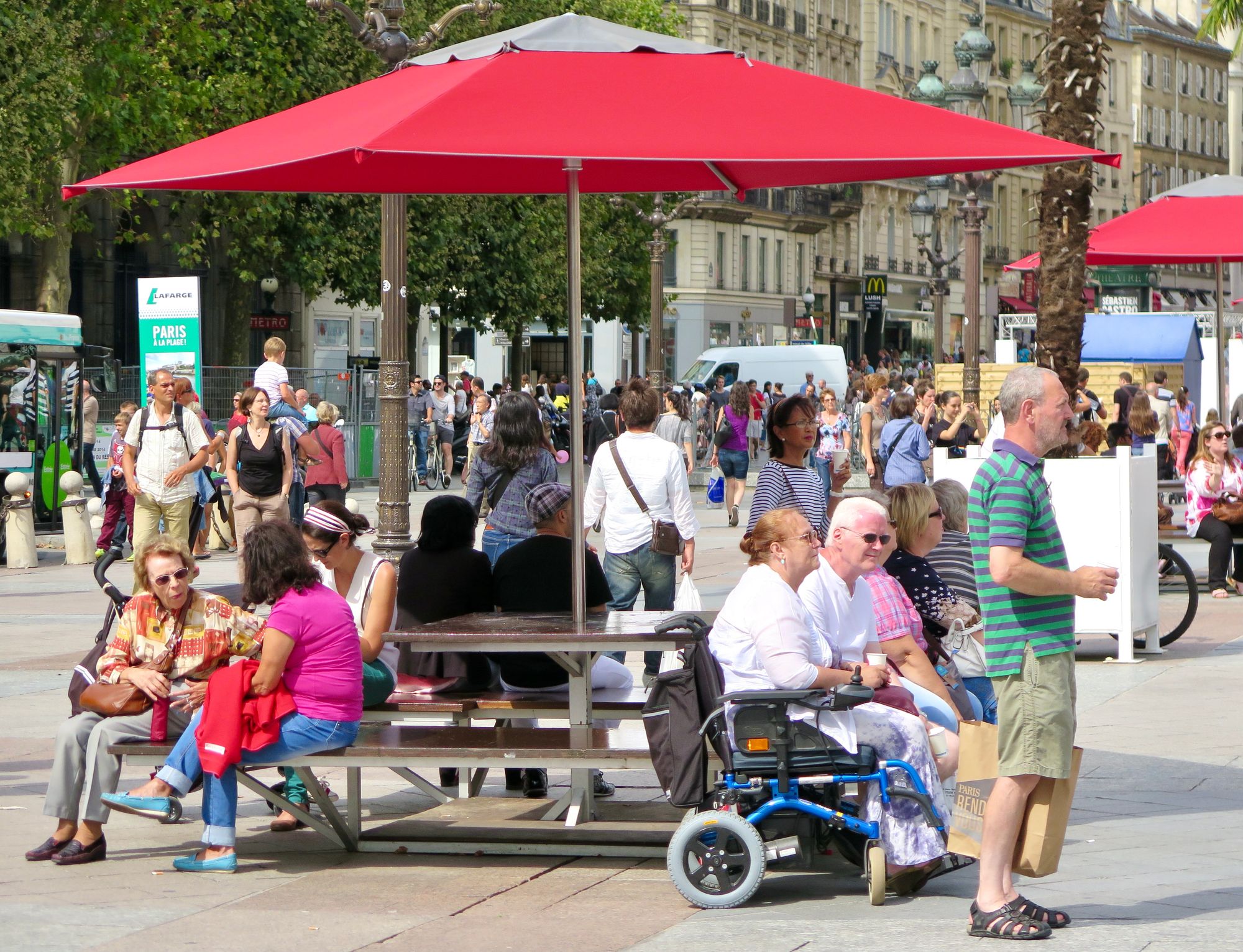
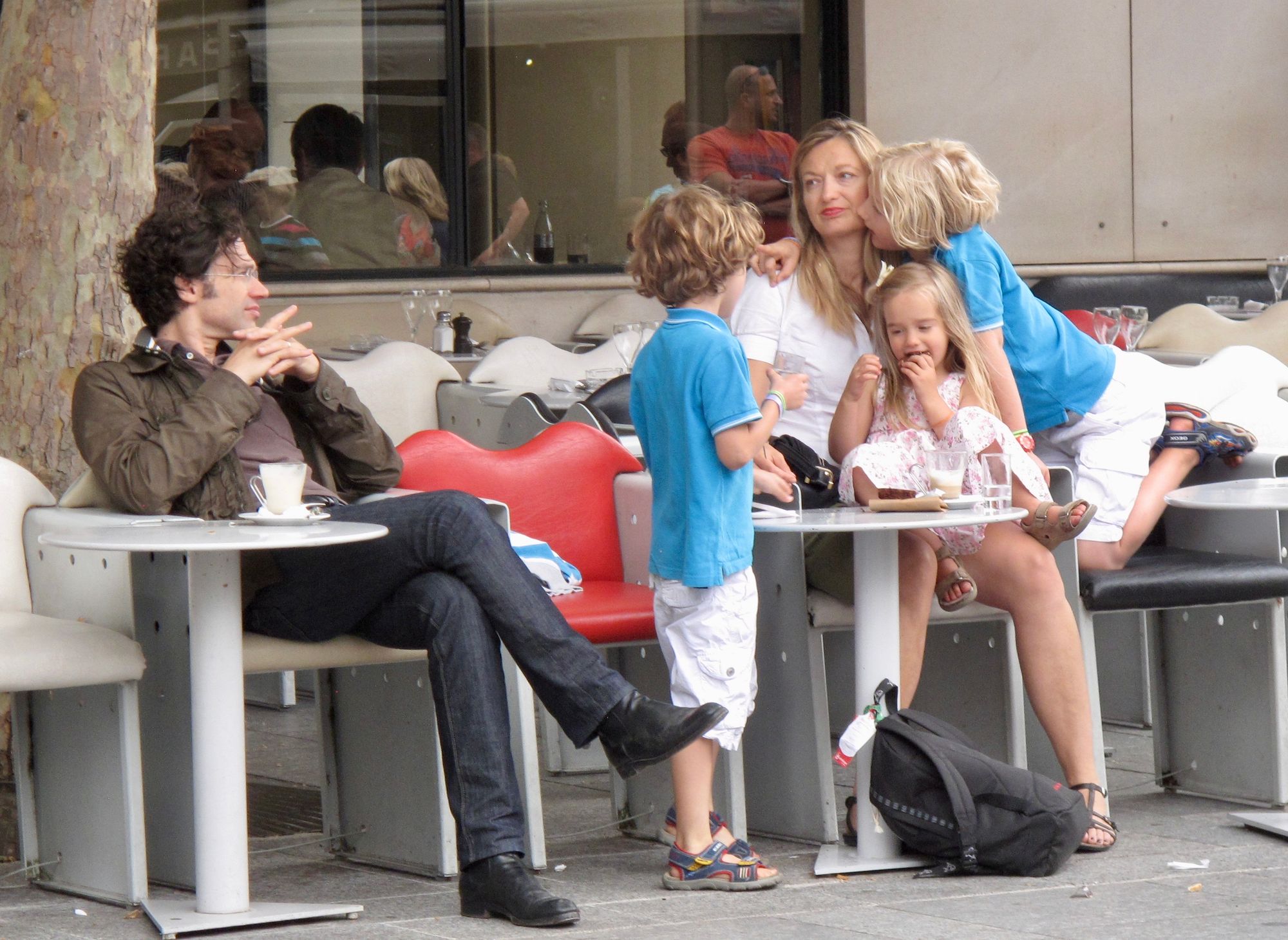
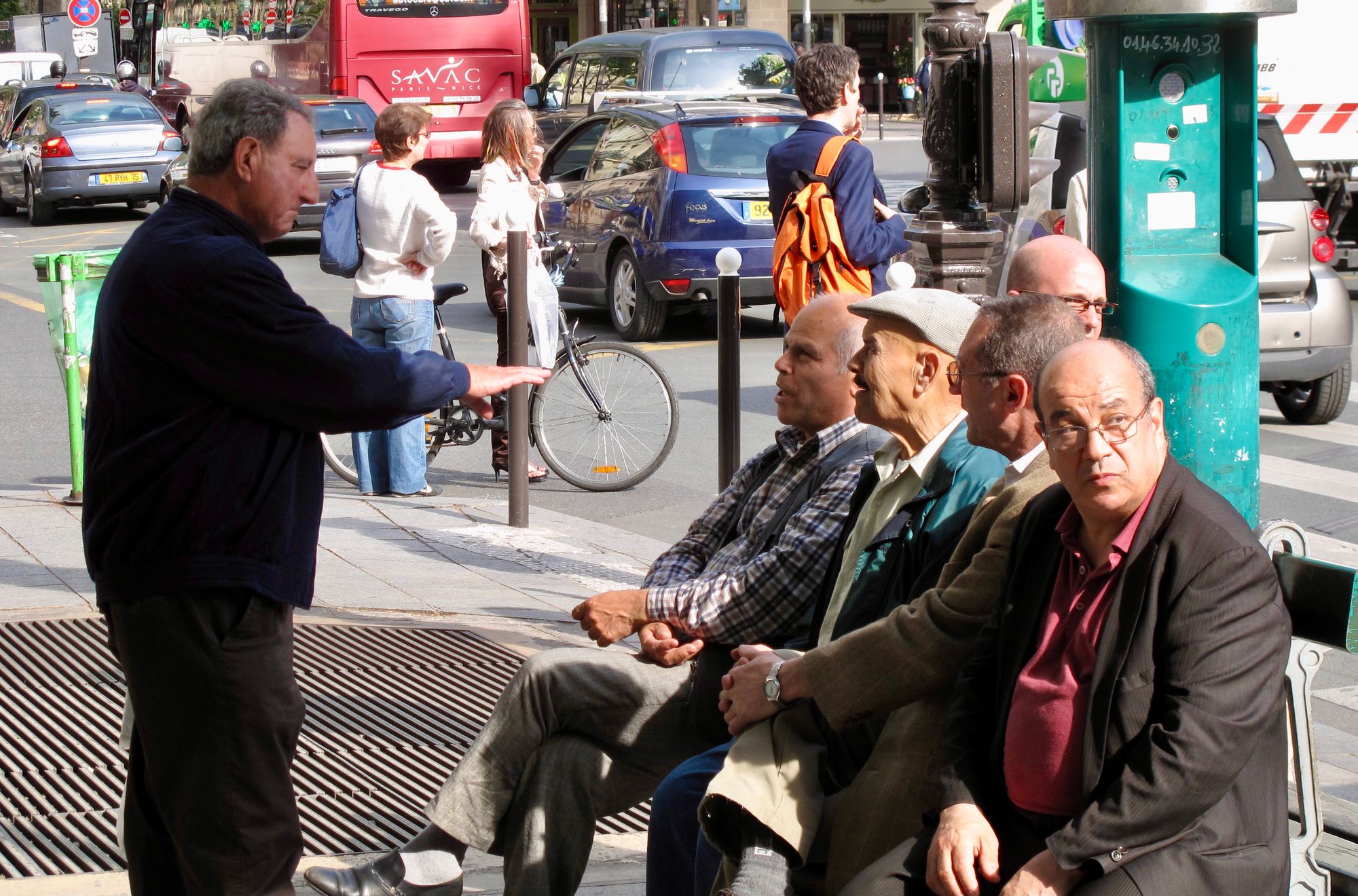
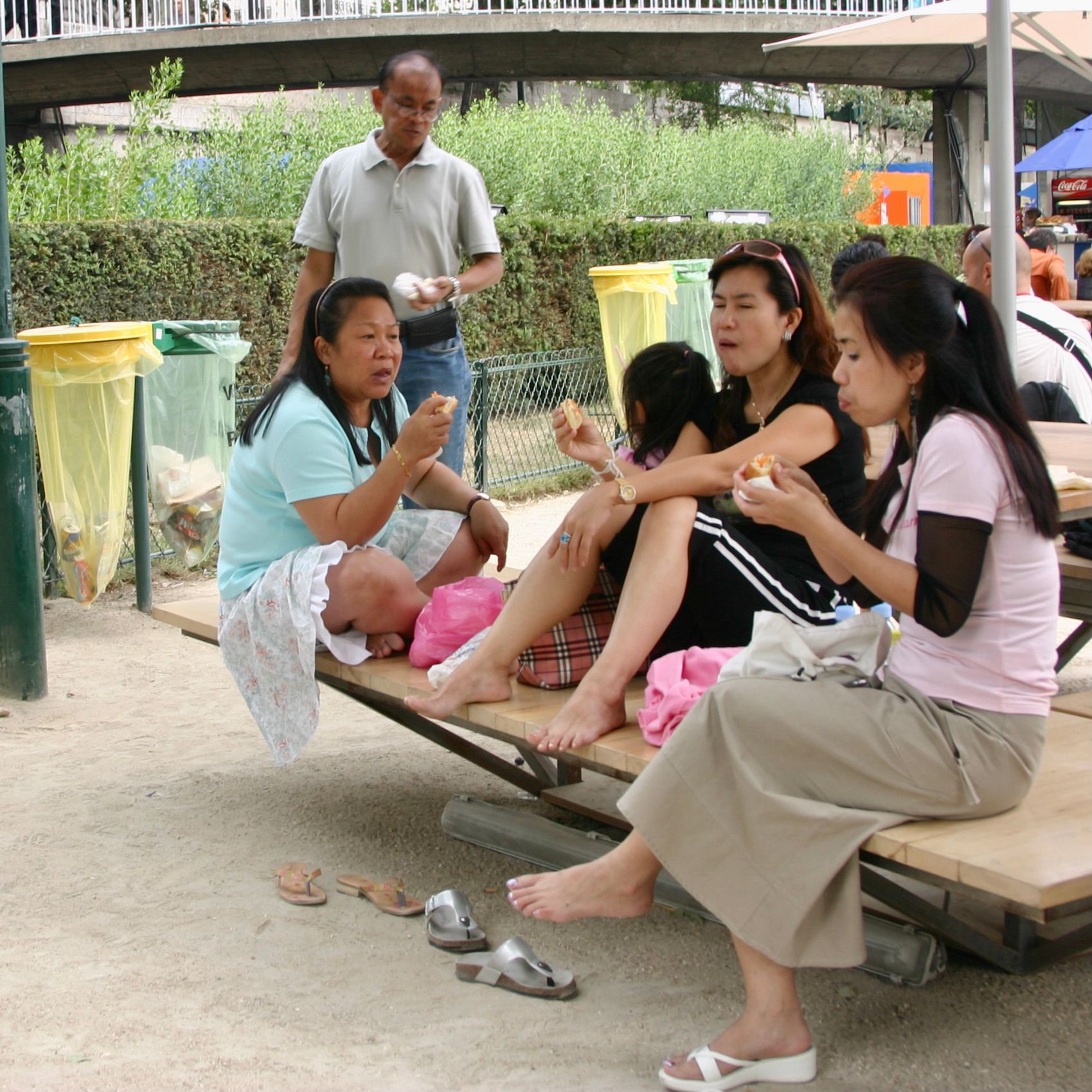
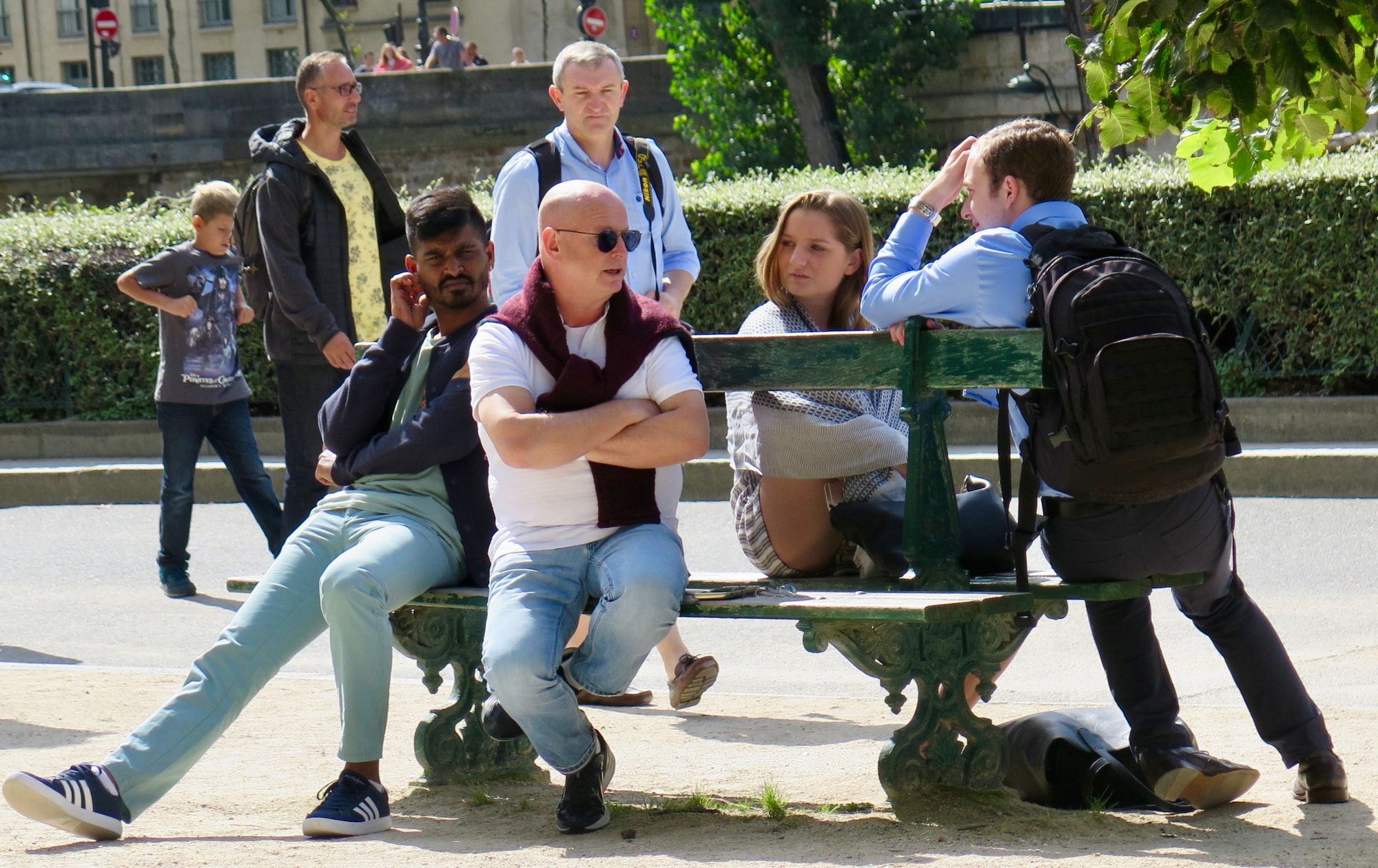
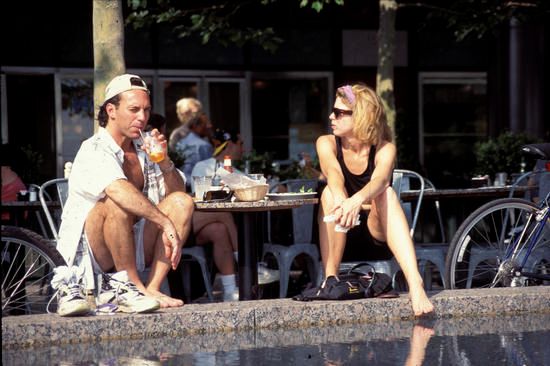
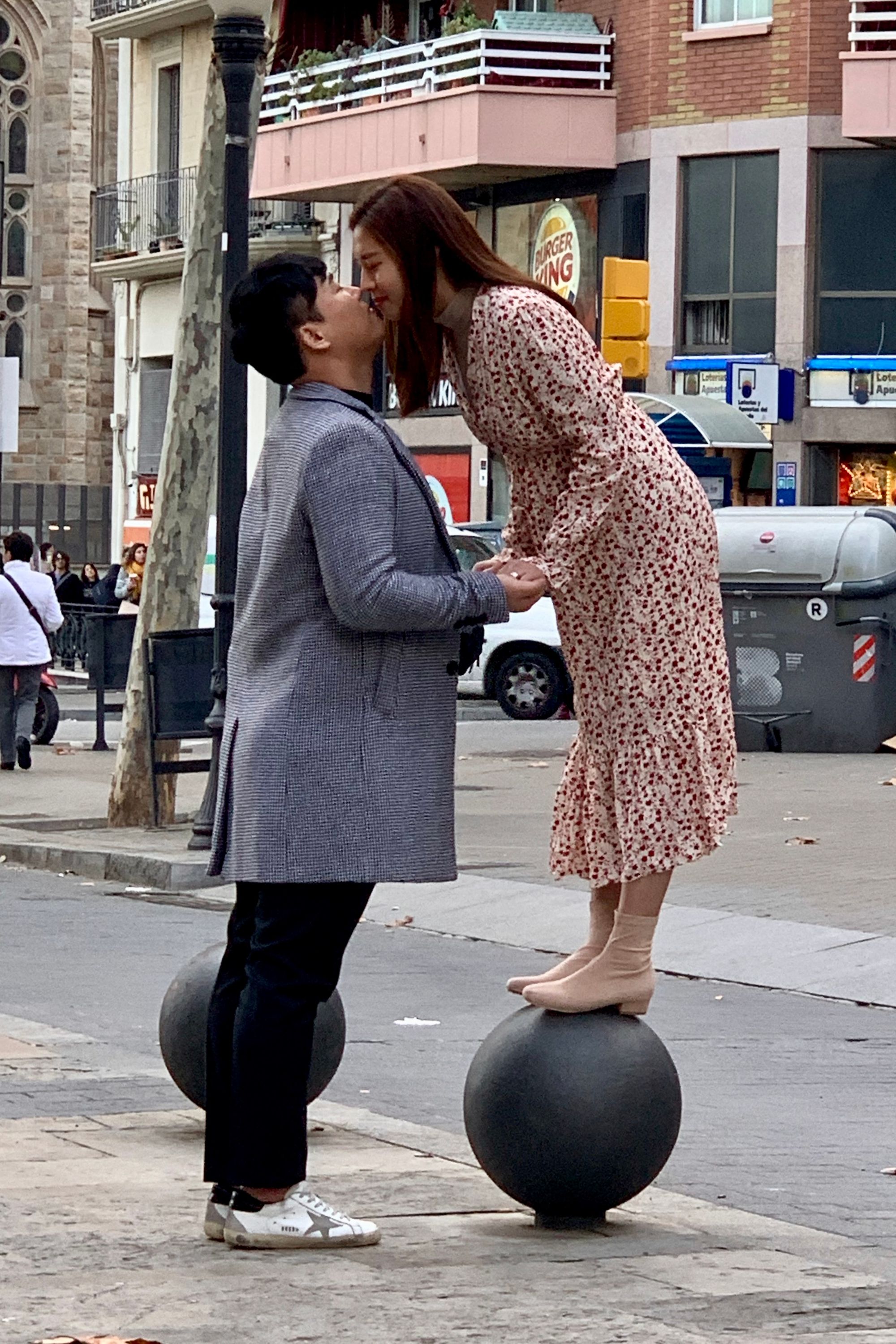
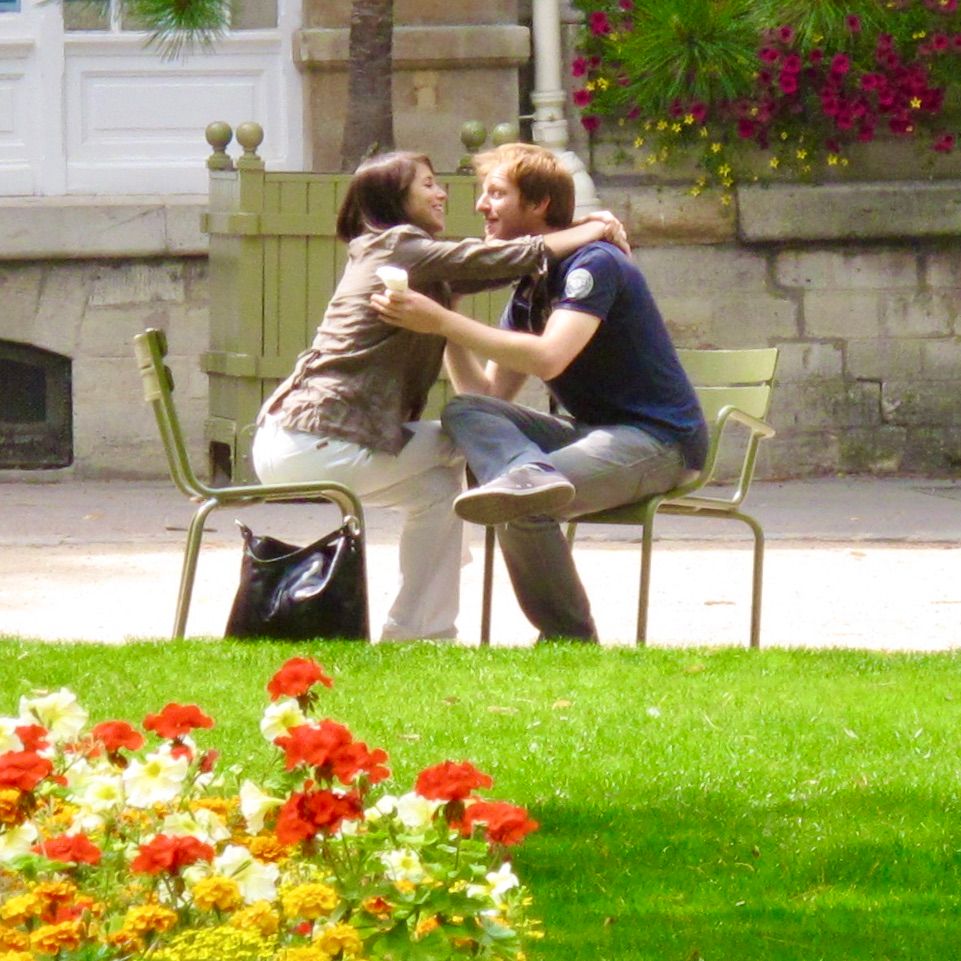
Detroit,Paris, New York and Barcelona
Zurich: Why a Simple Bench Can Be a Canvas for Social Life
One place that always comes to mind when it comes to seating is Zurich. In 2001, we stumbled upon a collaborative exhibit by the City, in which box structures were provided to artists, who would in turn design benches to be placed around town.
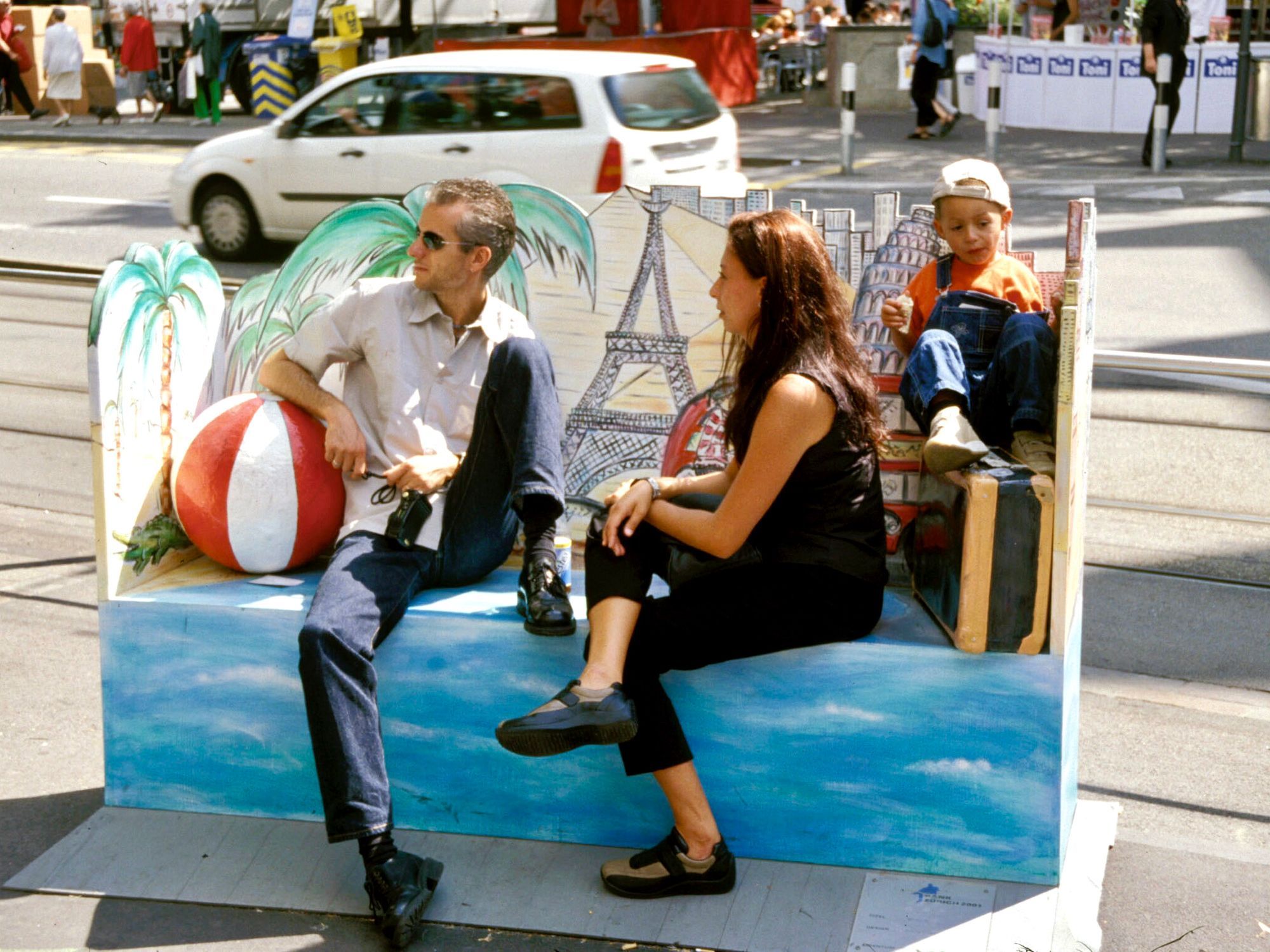
What we found is that a diversity of seating options allows for people to live out a diversity of experiences. With no two benches alike, we saw in real time how a bench is a mirror to our interactions and behaviors in public spaces. What is welcoming for one person may be uninteresting to another: This exhibit was a delightful experiment in seating!
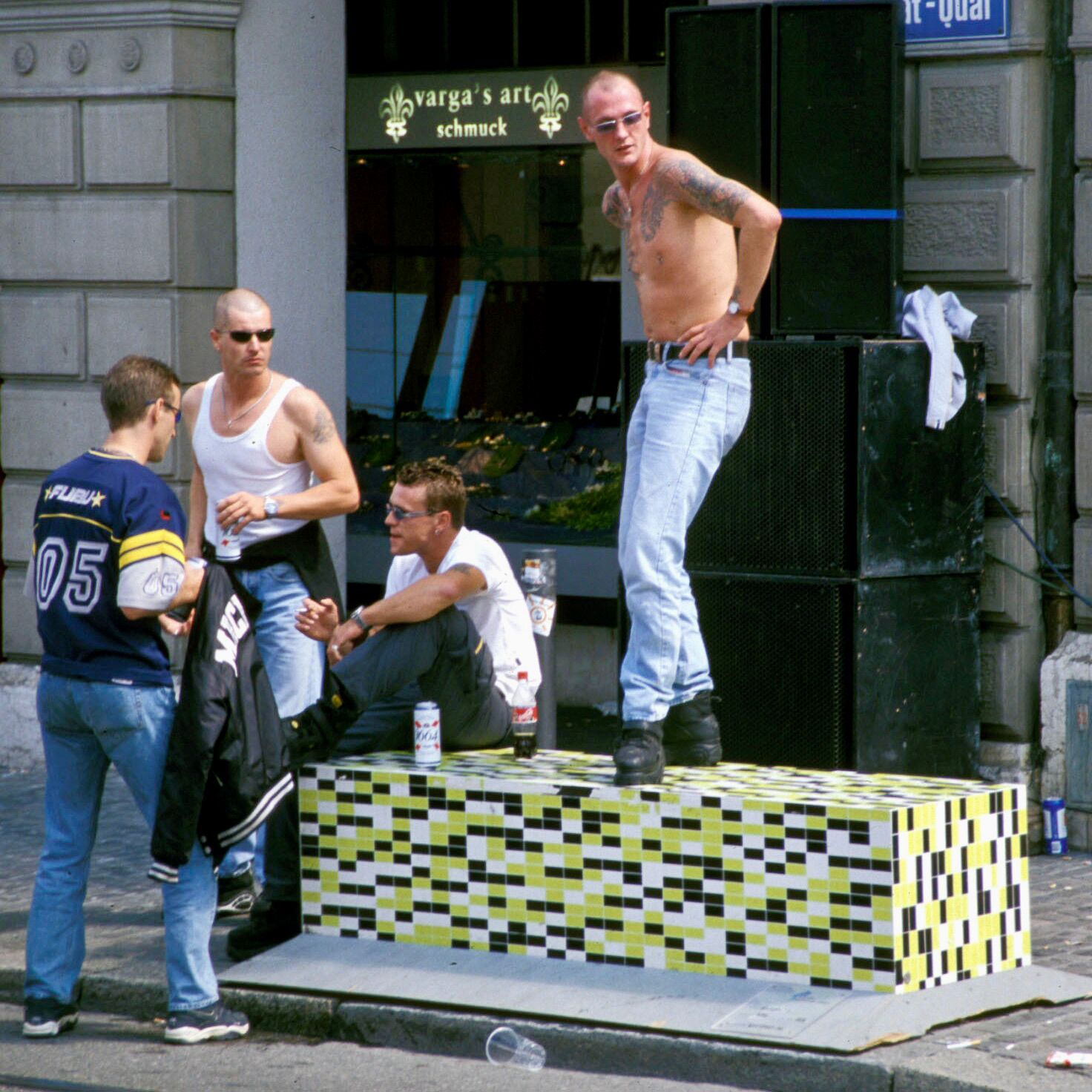
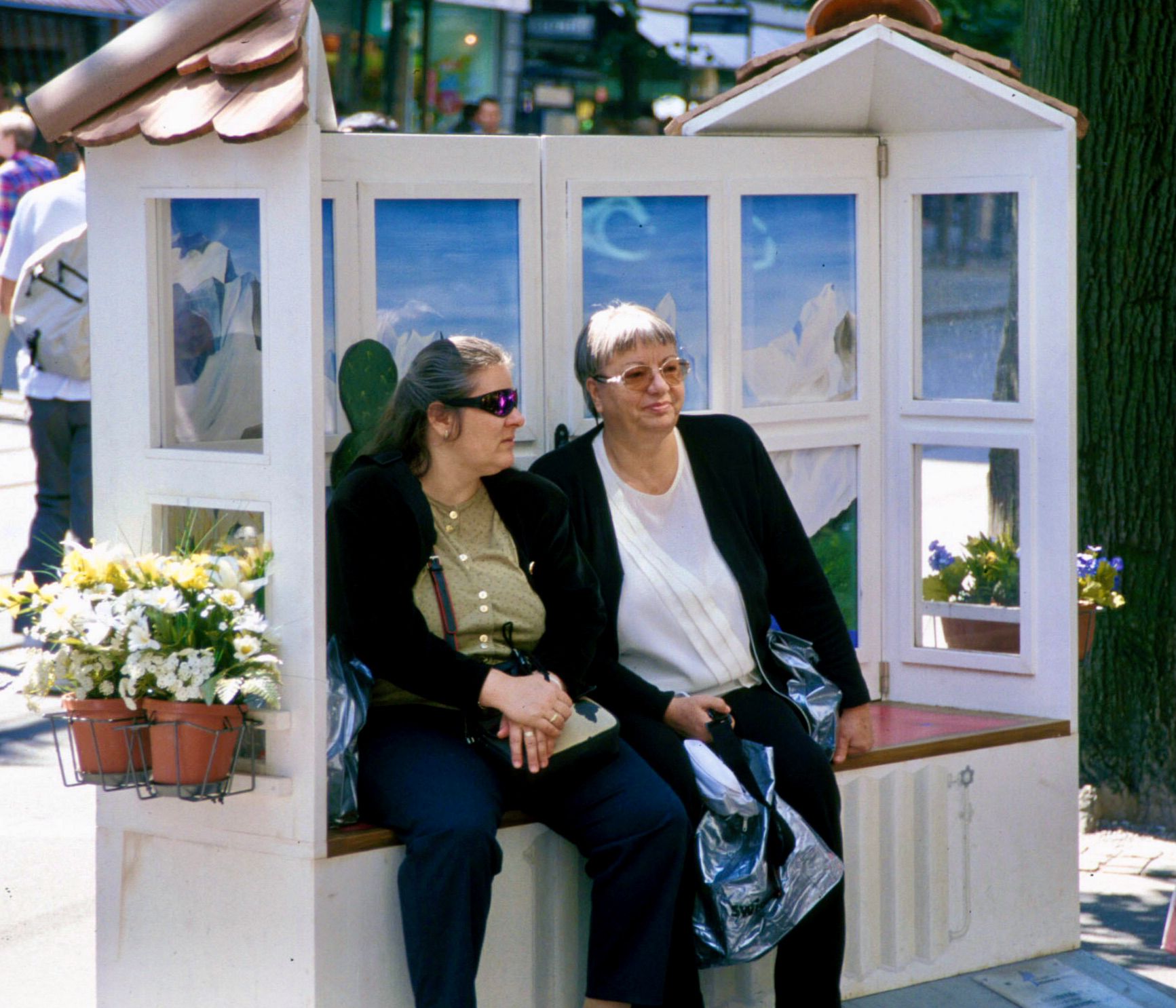
These two cultures would probably never consider the other bench to enjoy... Each seems tailor-made to their respective needs.
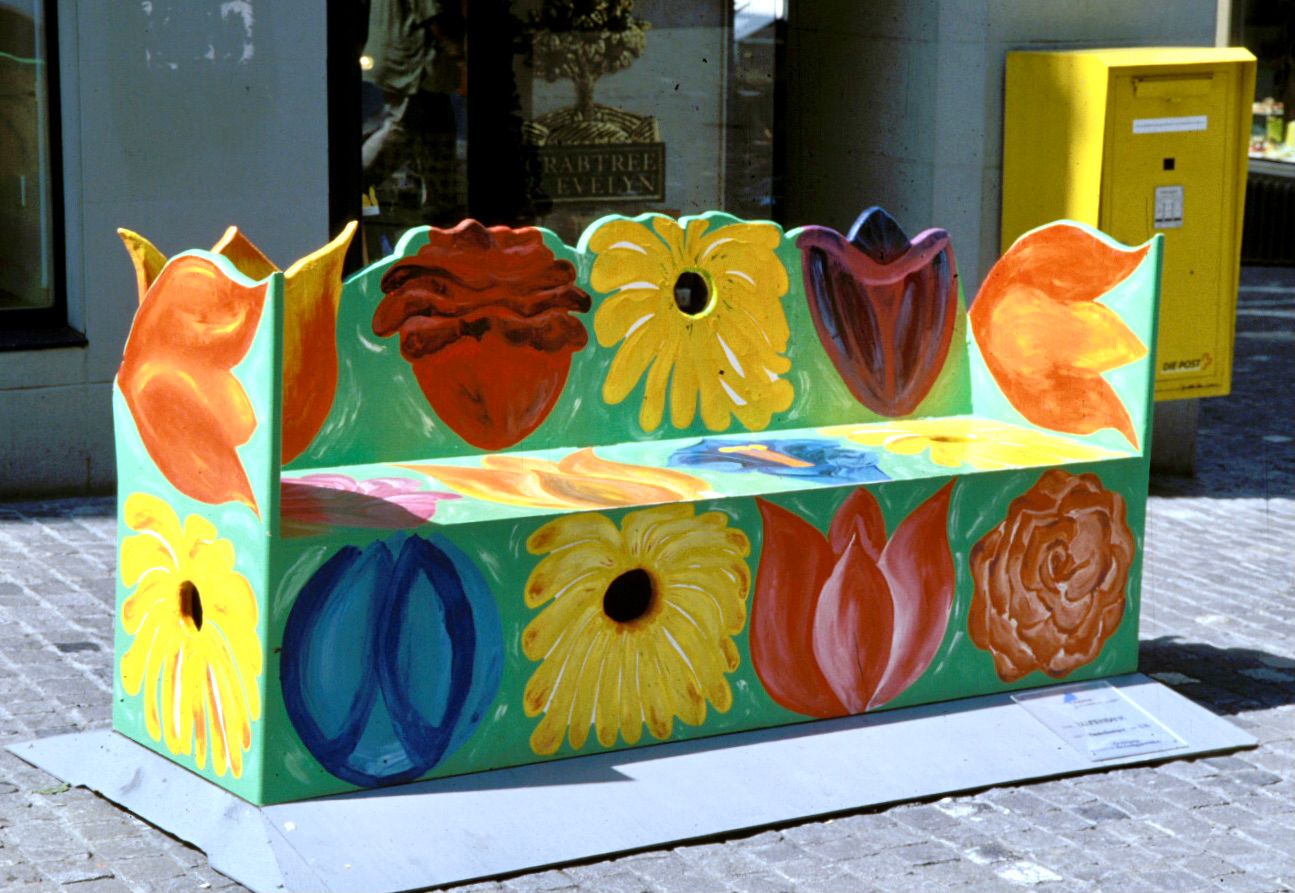
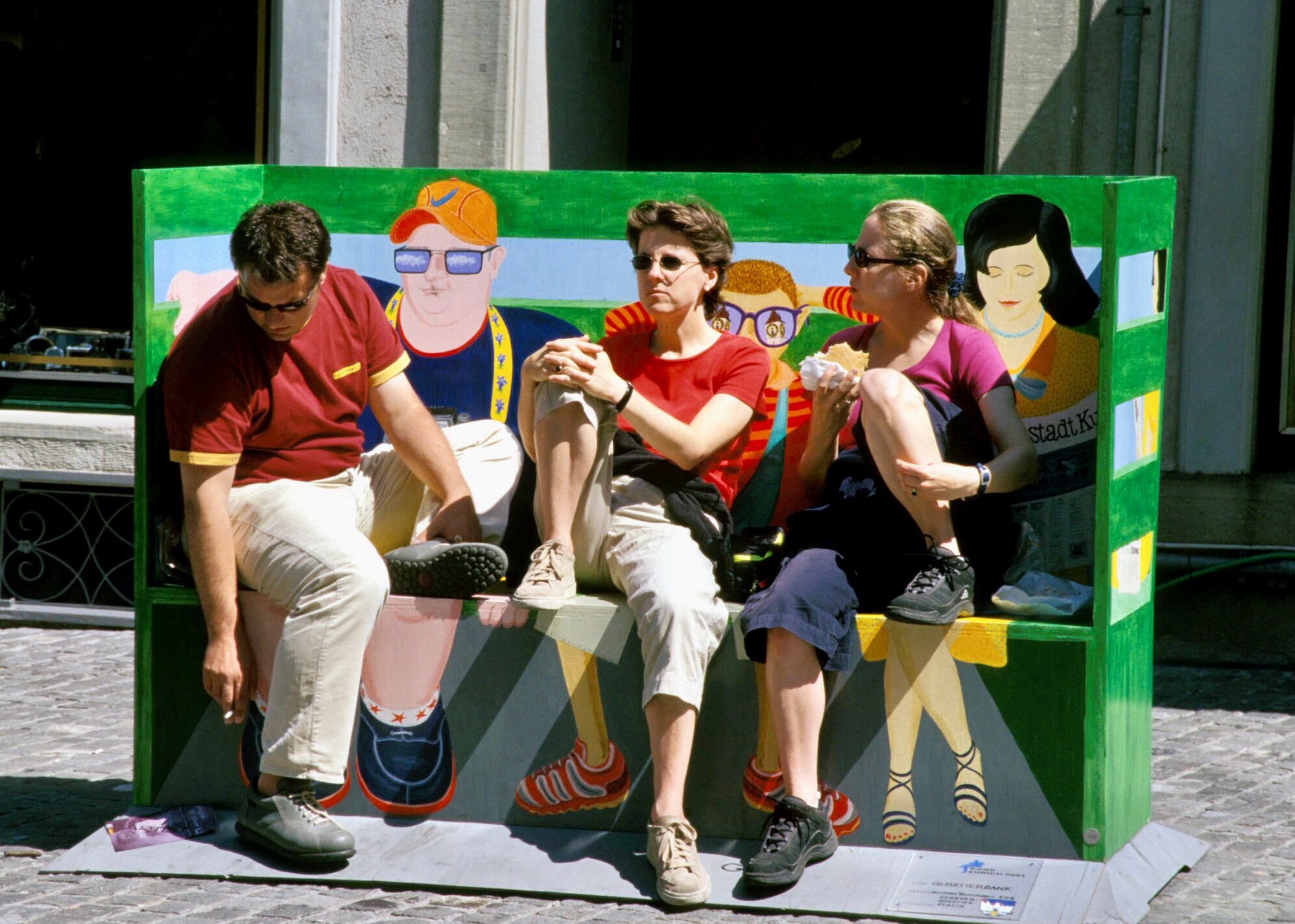
Color and imagery has a big impact. Look carefully at the bench on the right. It has legs painted on the base that intermingle with real legs...even their pants.
Stockholm, Kungsträdgården
Stadium-style seating in Stockholm's Kungsträdgården is a brilliant way to invite all the possible configurations of how to sit, gather, eat, or play. It goes to show that designing good seating does not have to be complex – sometimes a set of steps will do.
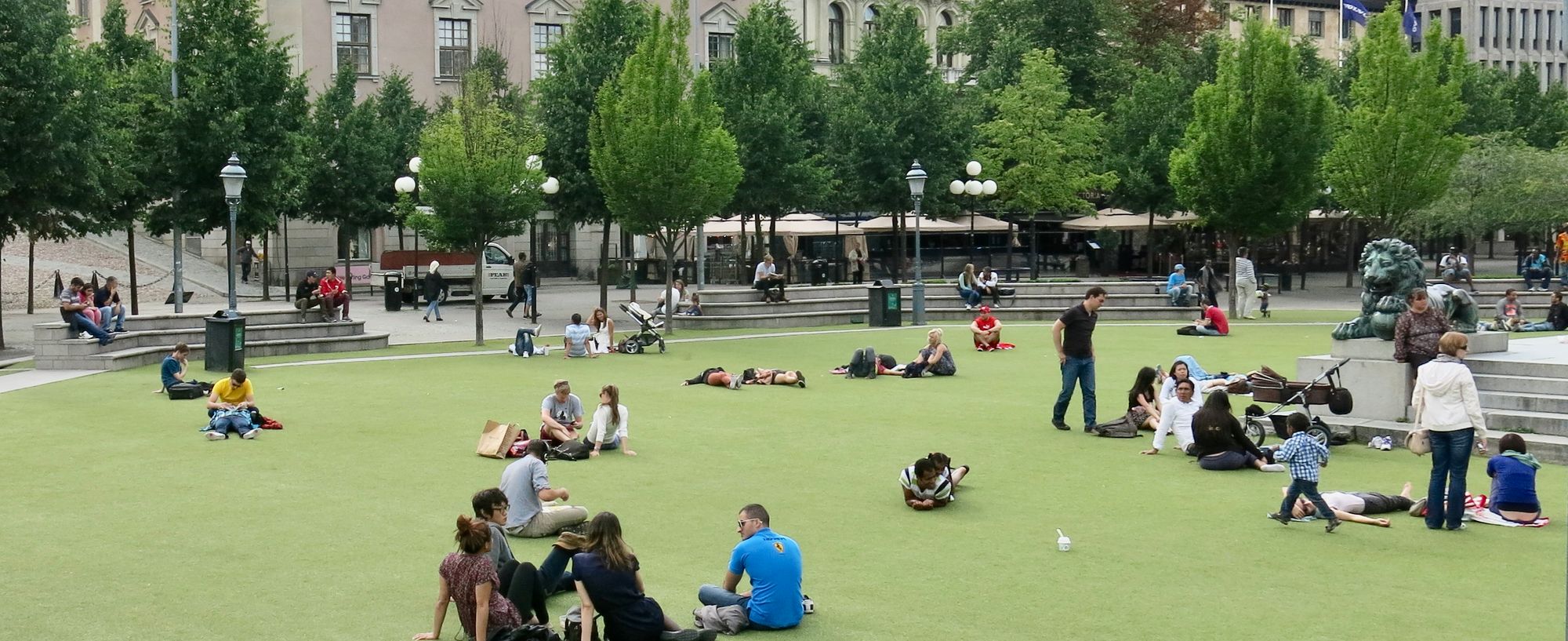
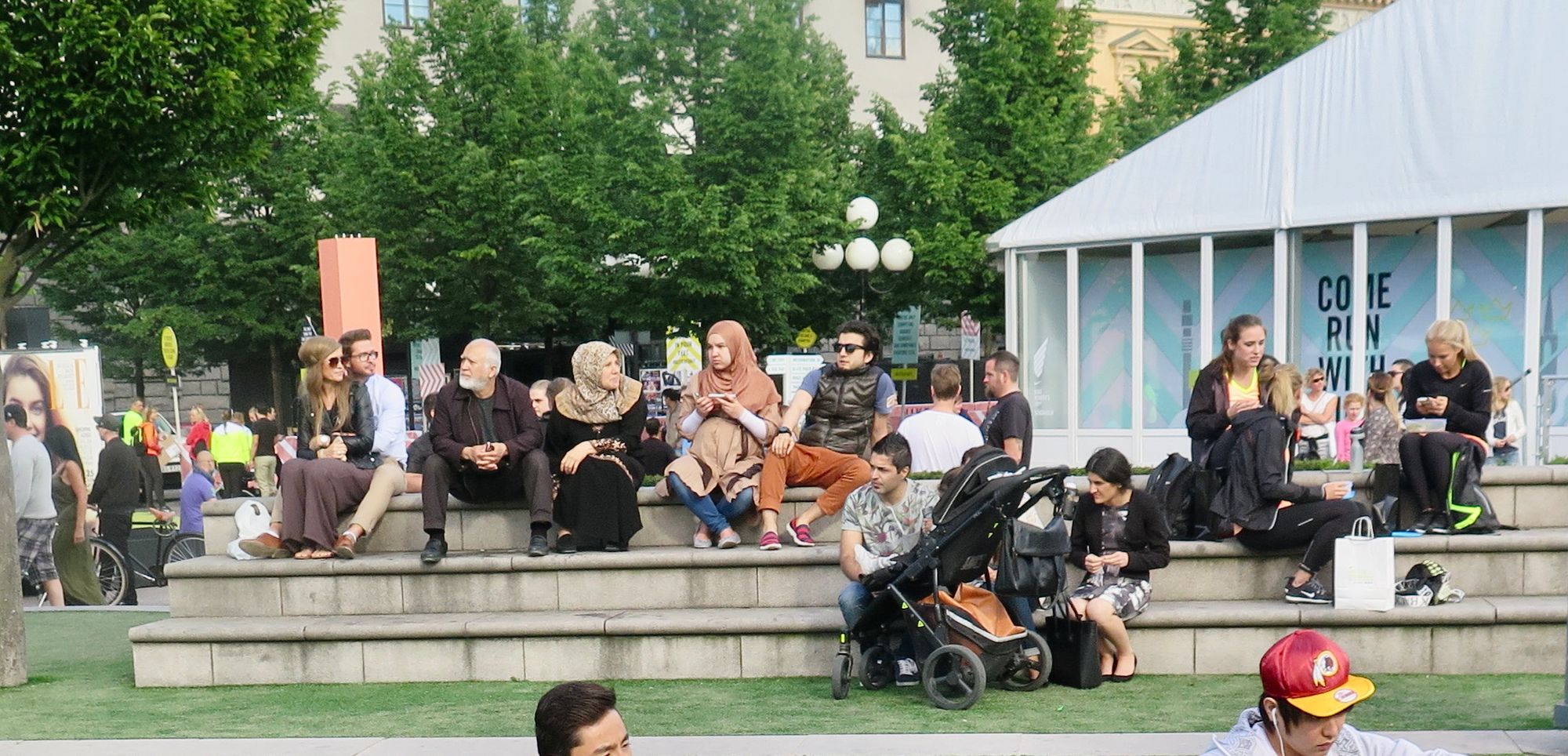
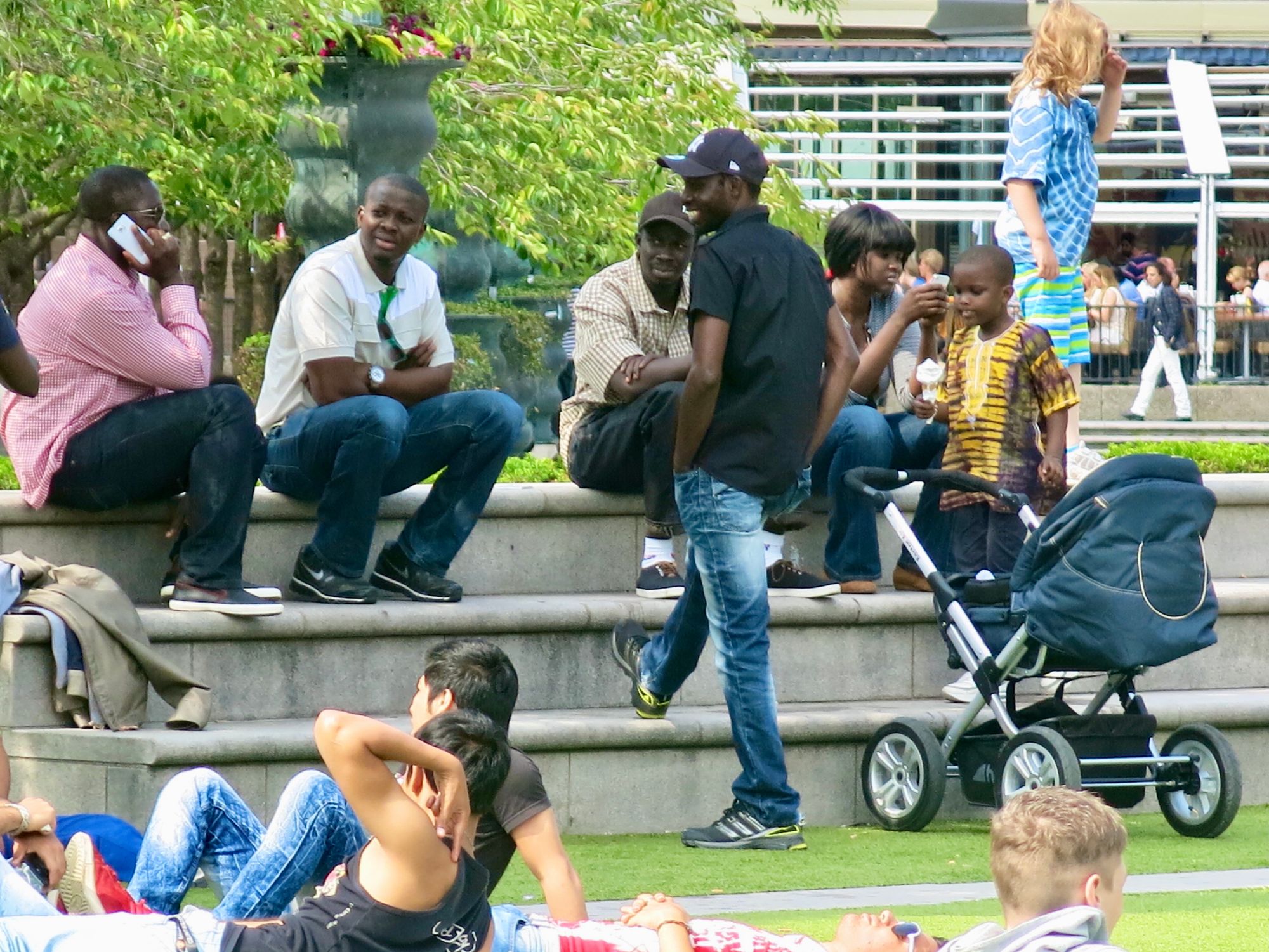
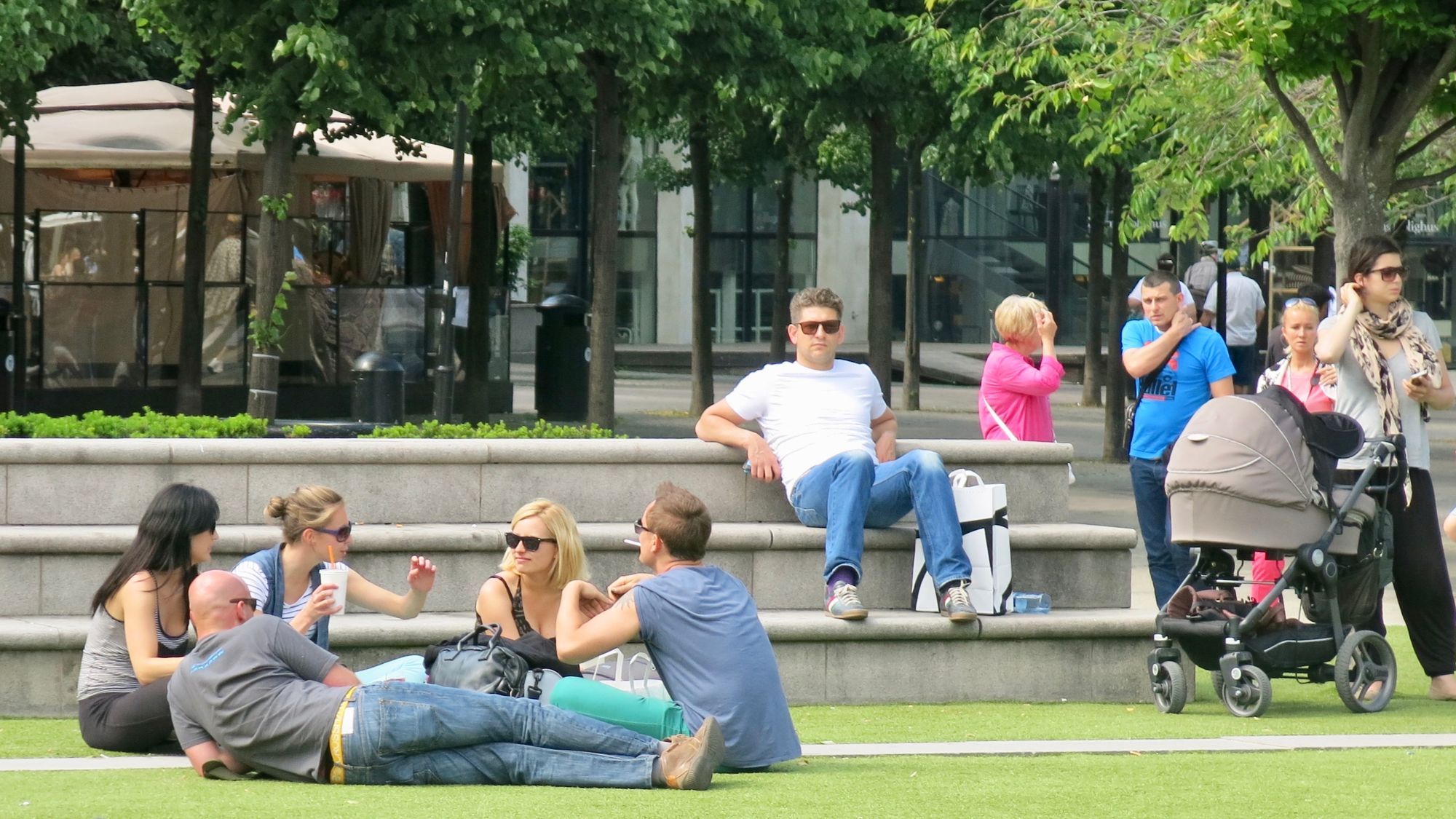
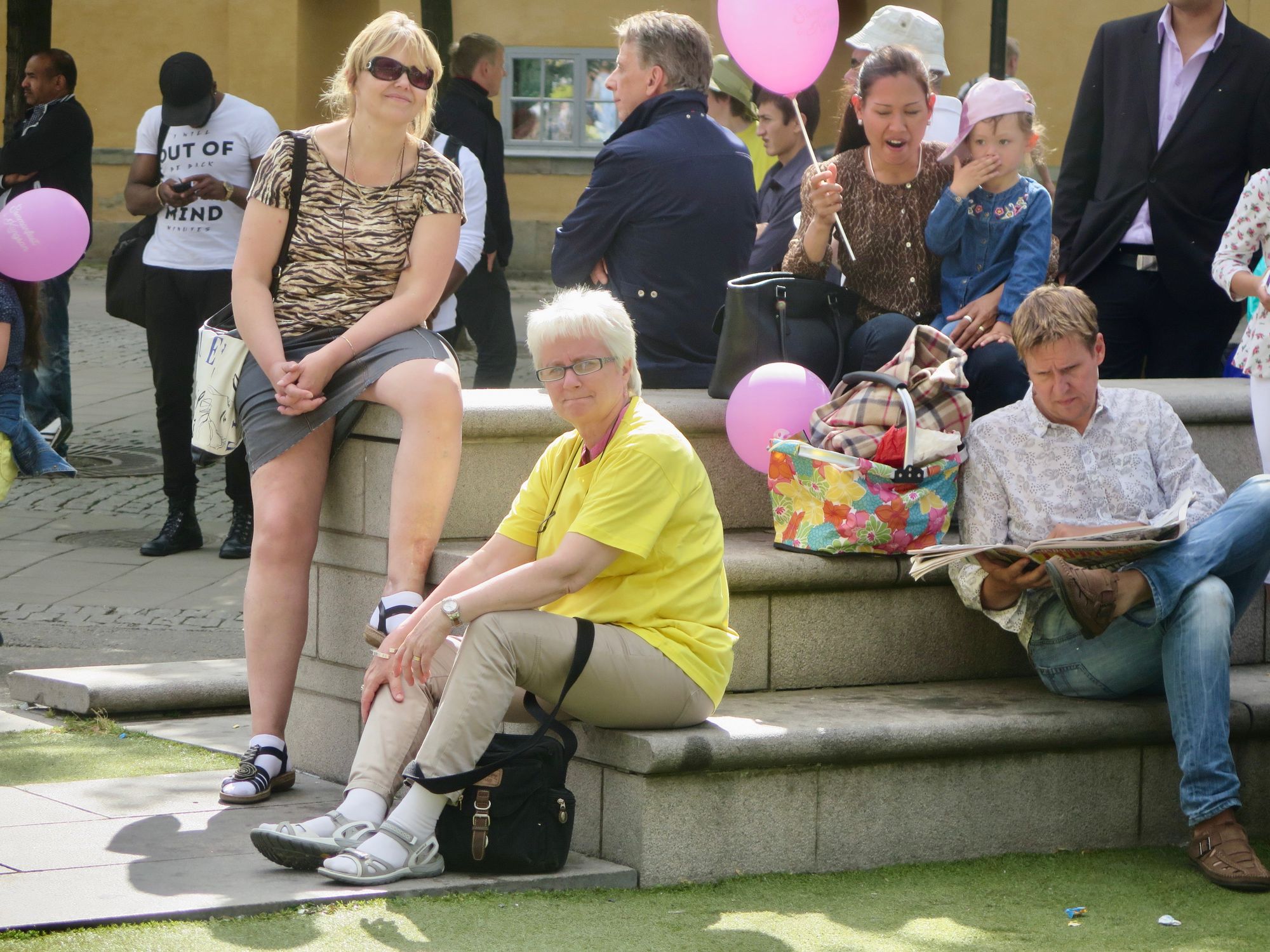
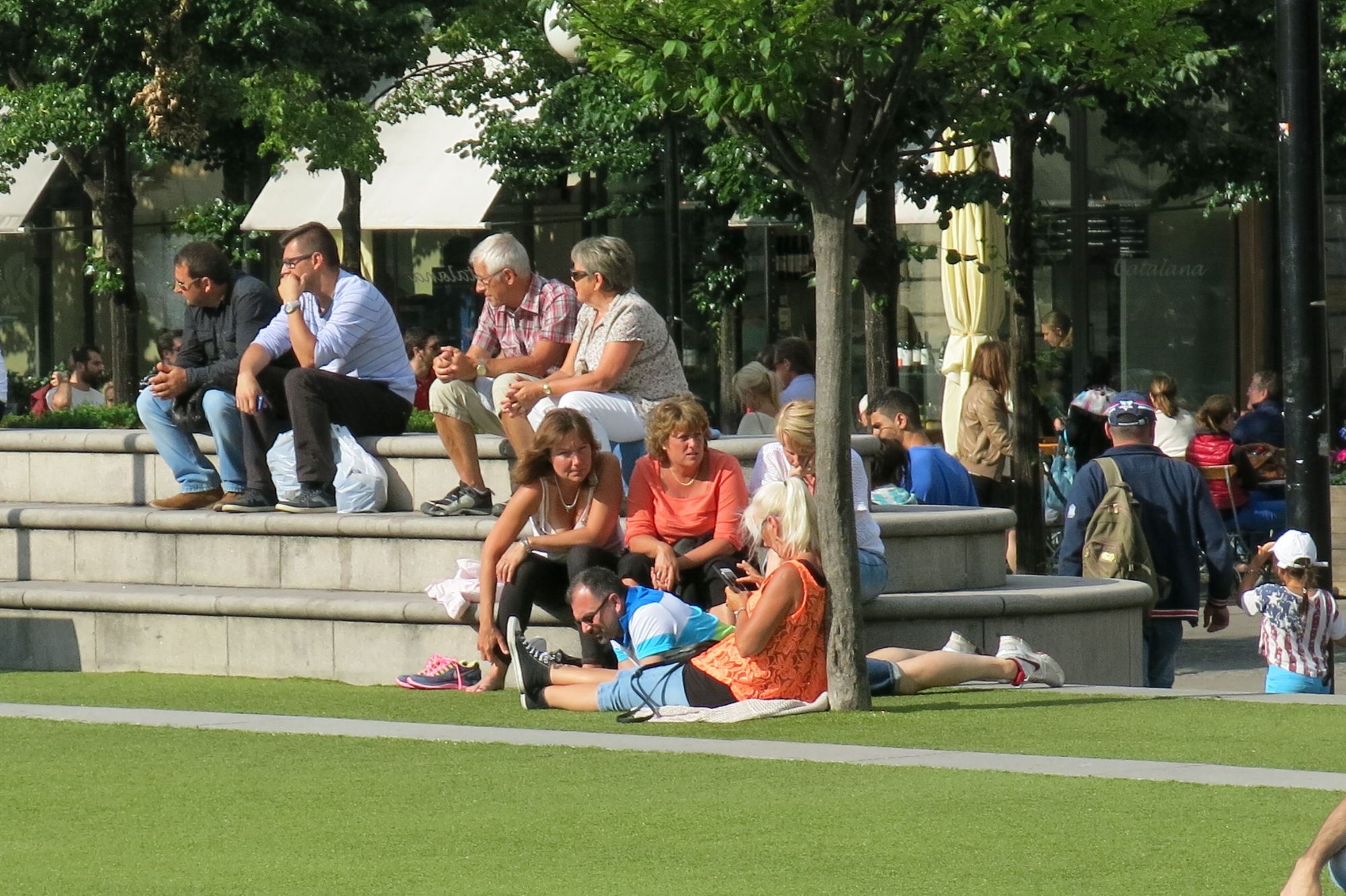
Elsewhere in Stockholm, combinations of benches of different sizes is a subtle but powerful draw. Here, a mix of short benches and a long seating ledge show the appeal of providing longer and shorter seating options. They accommodate different types of conversations and foster different dynamics between the people sitting together.
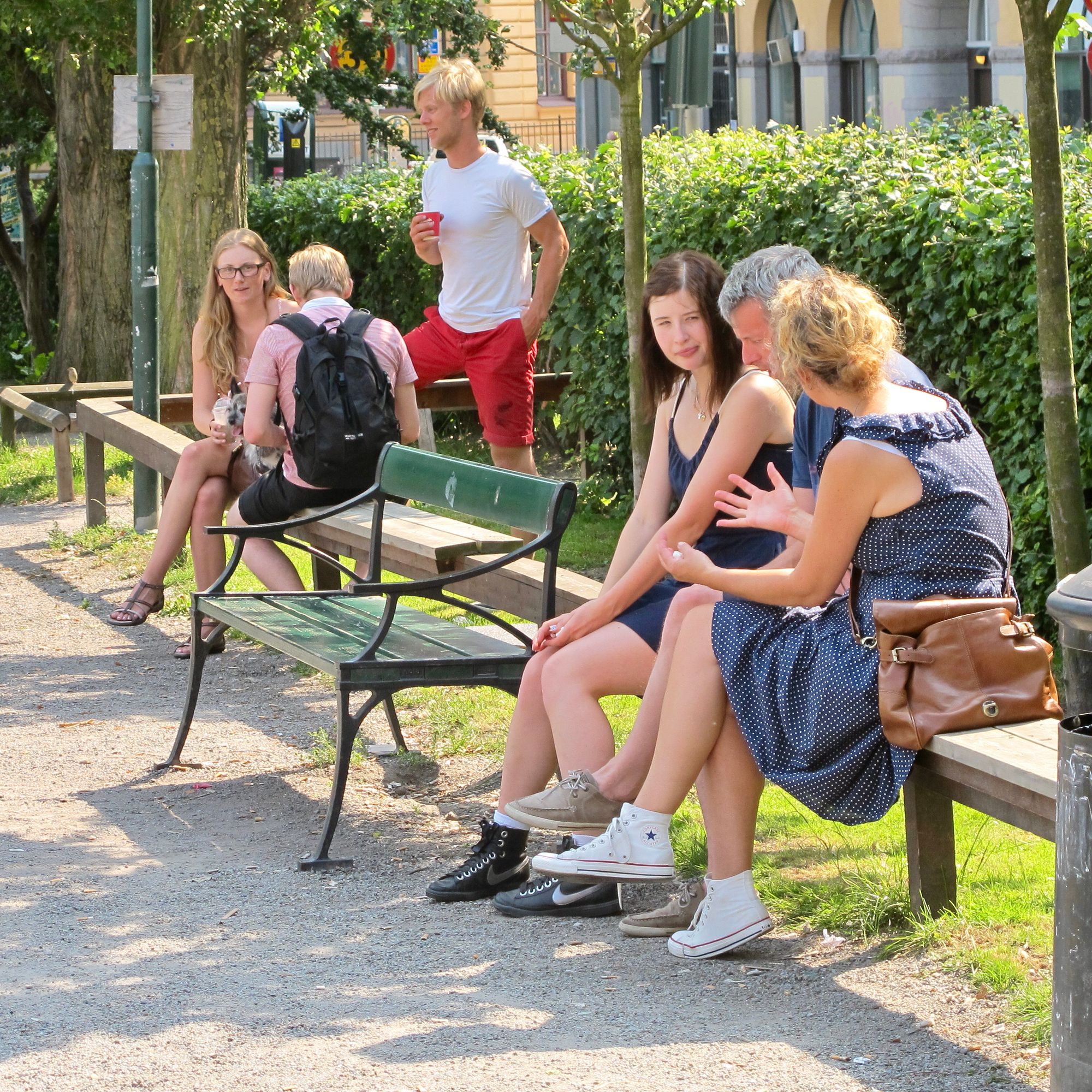
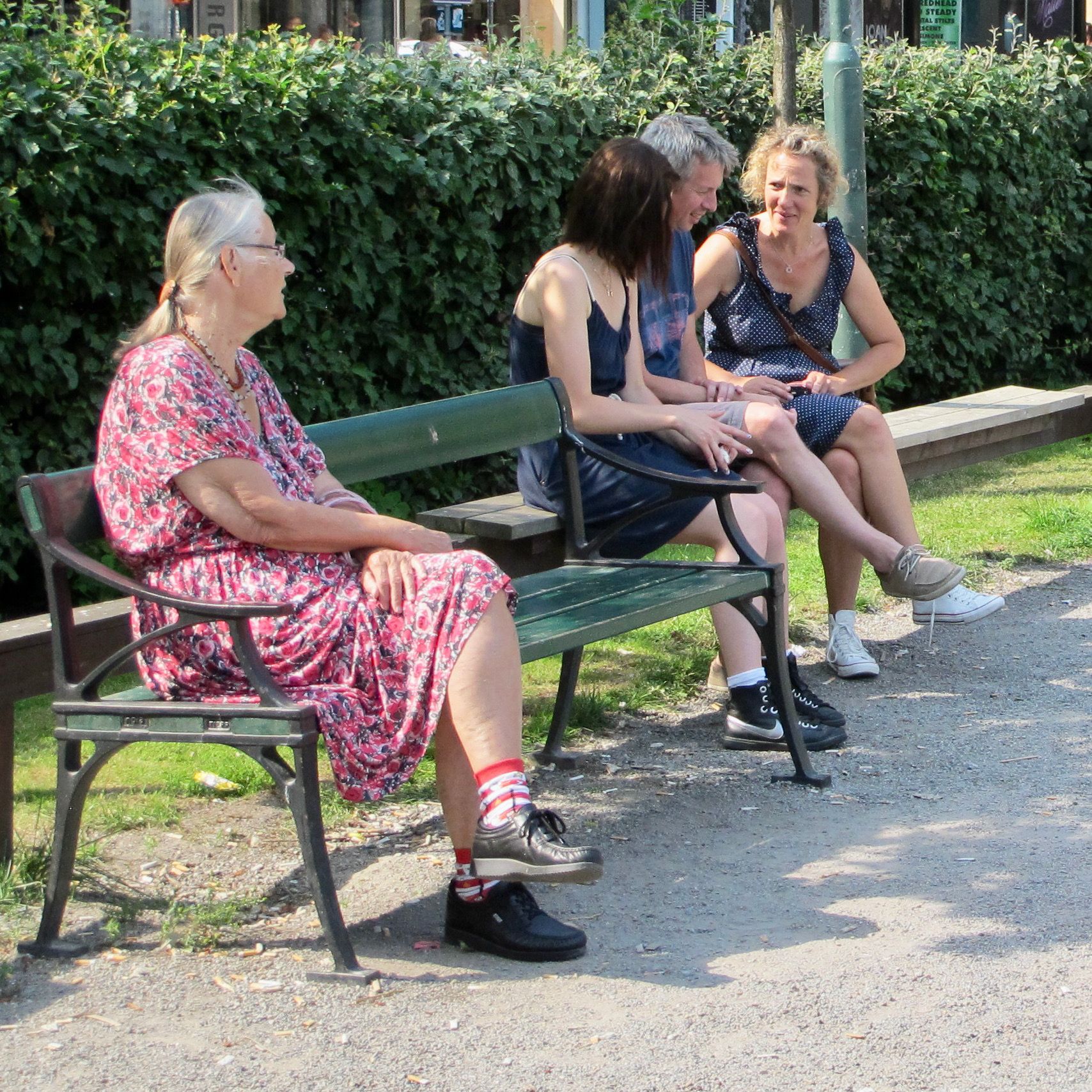
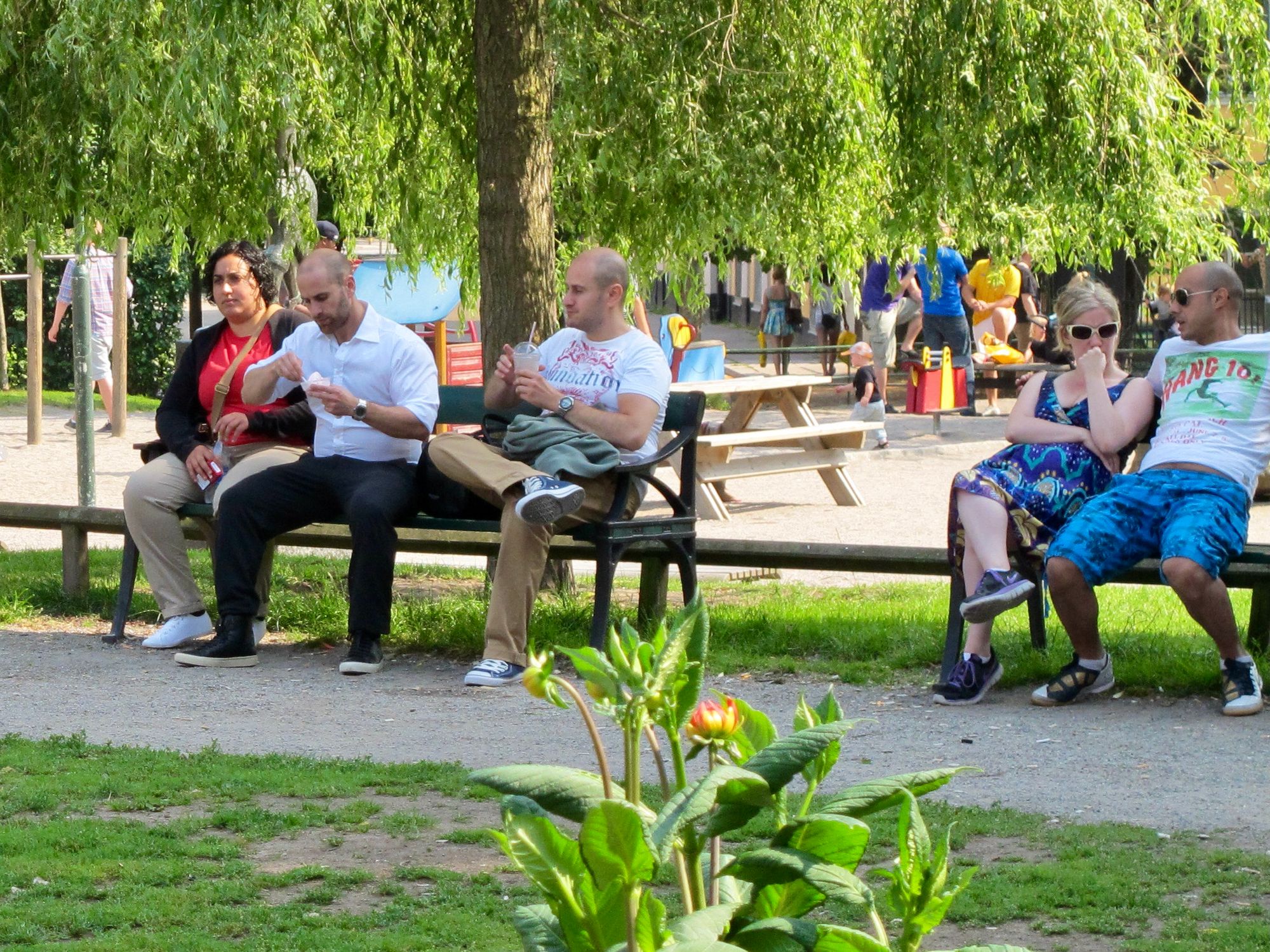
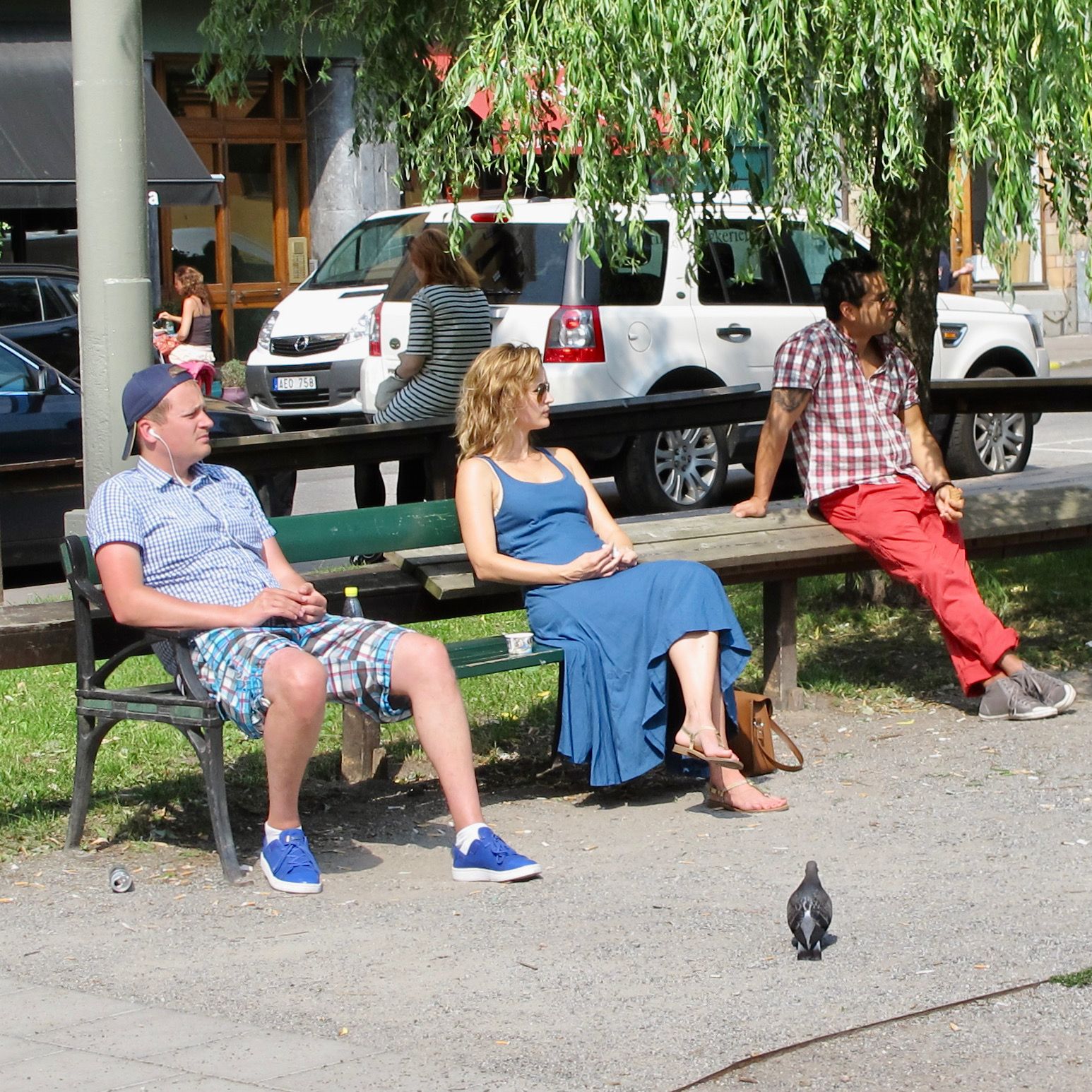
Paris
There are many things we love about the public spaces that line the banks of the Seine. Not least among them is this new example of plank seating. Much like the previous example in Stockholm, the multi-layered design attracts people and lets them sit however they please.
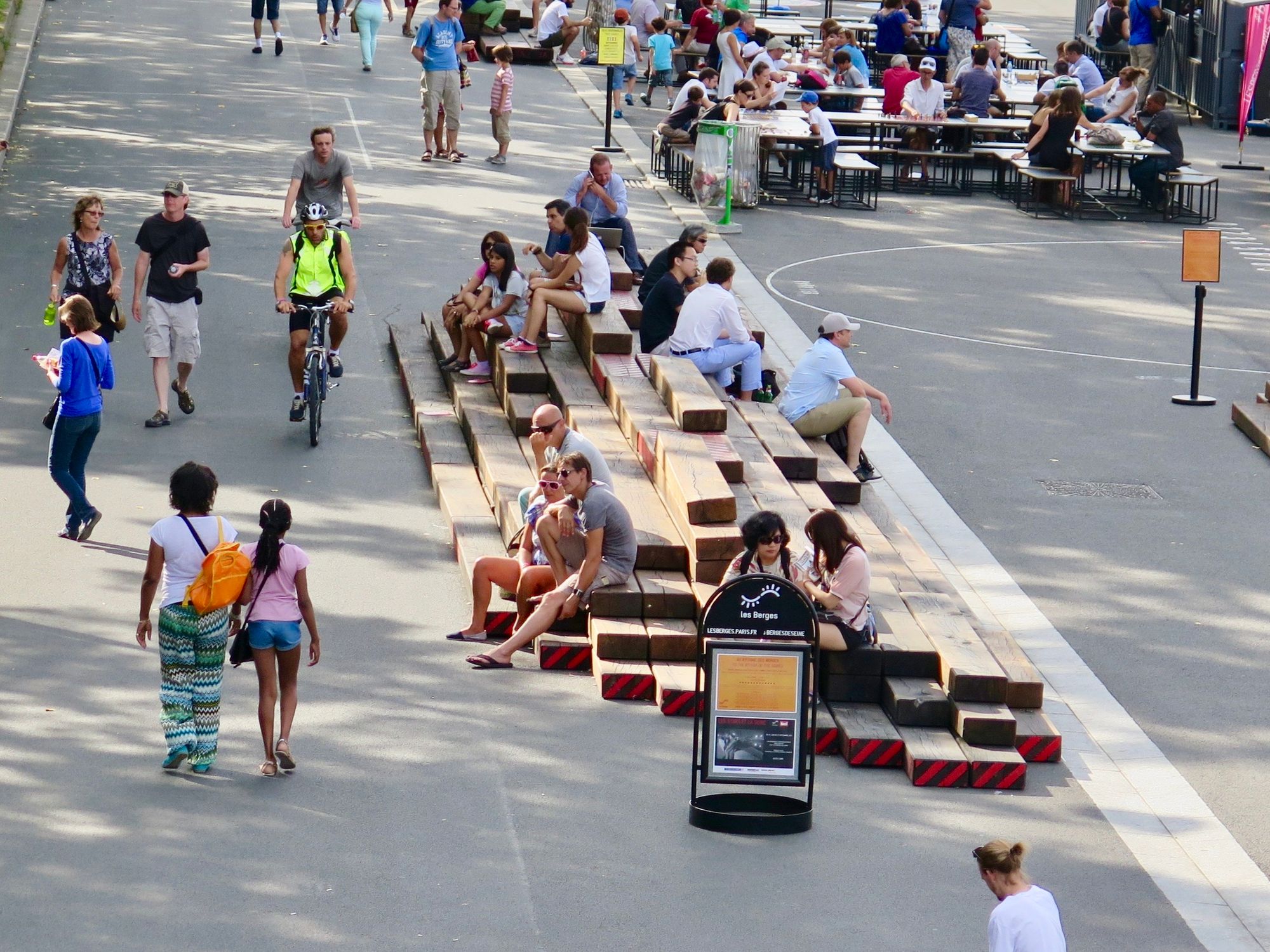
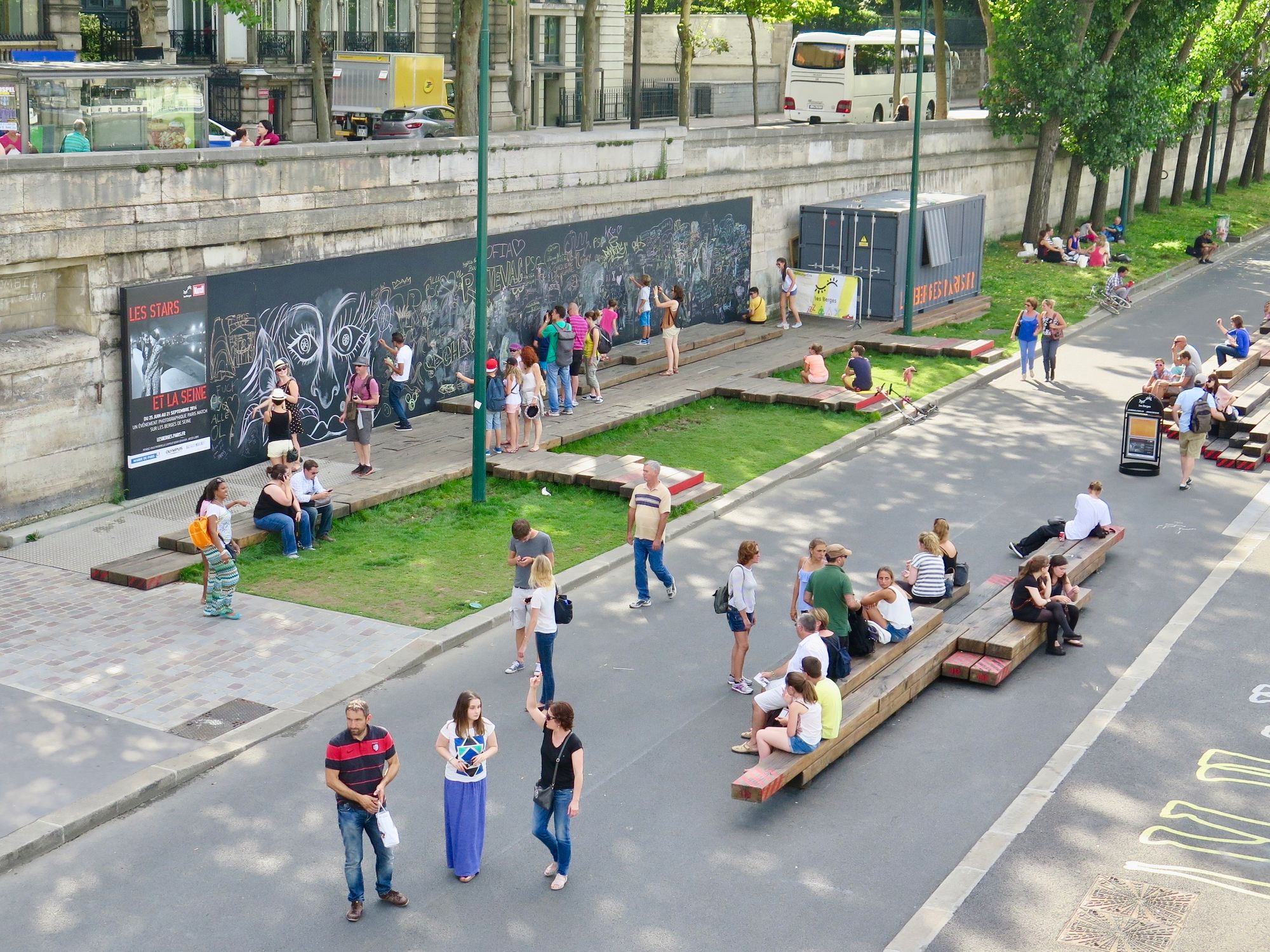
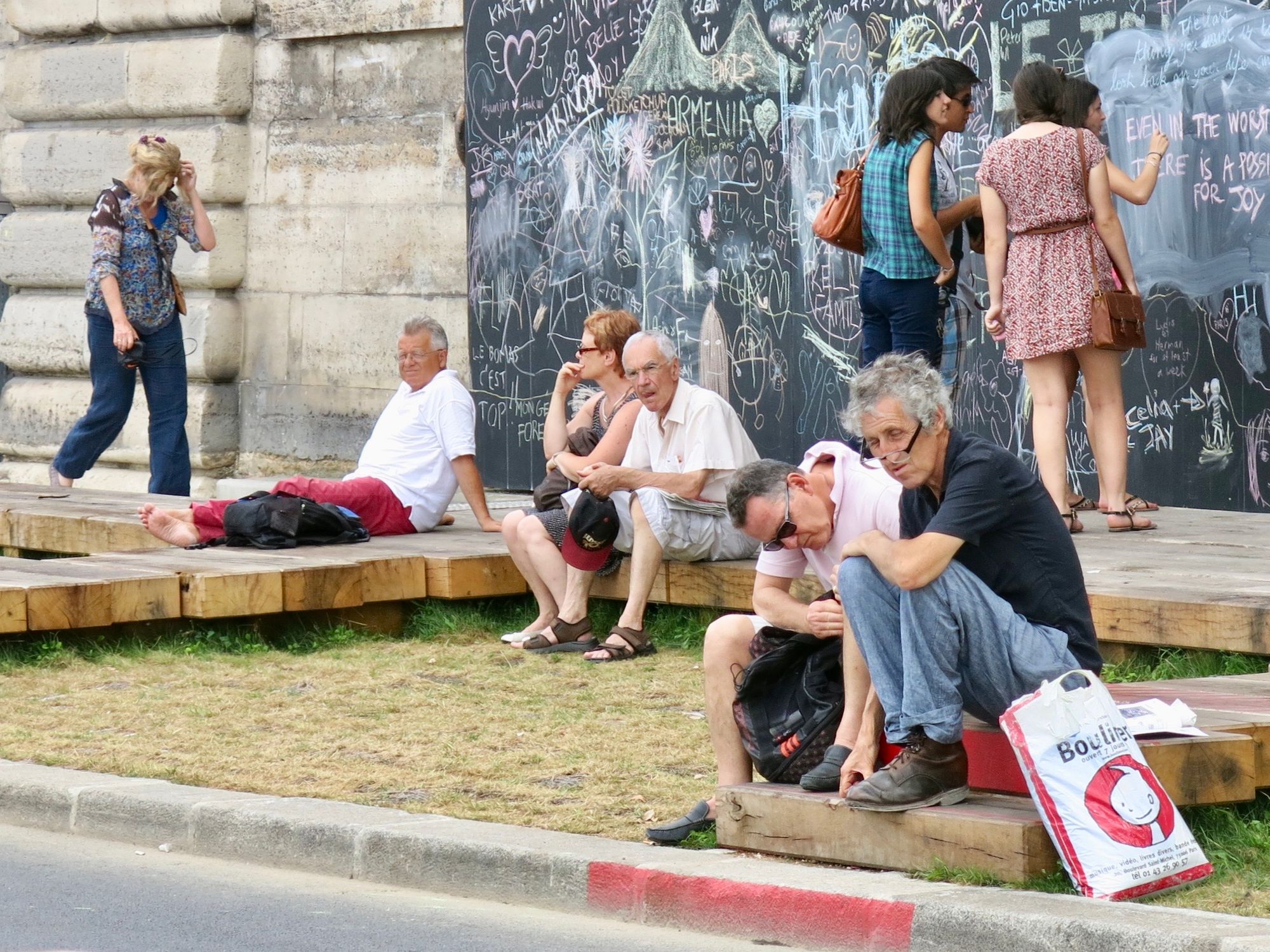
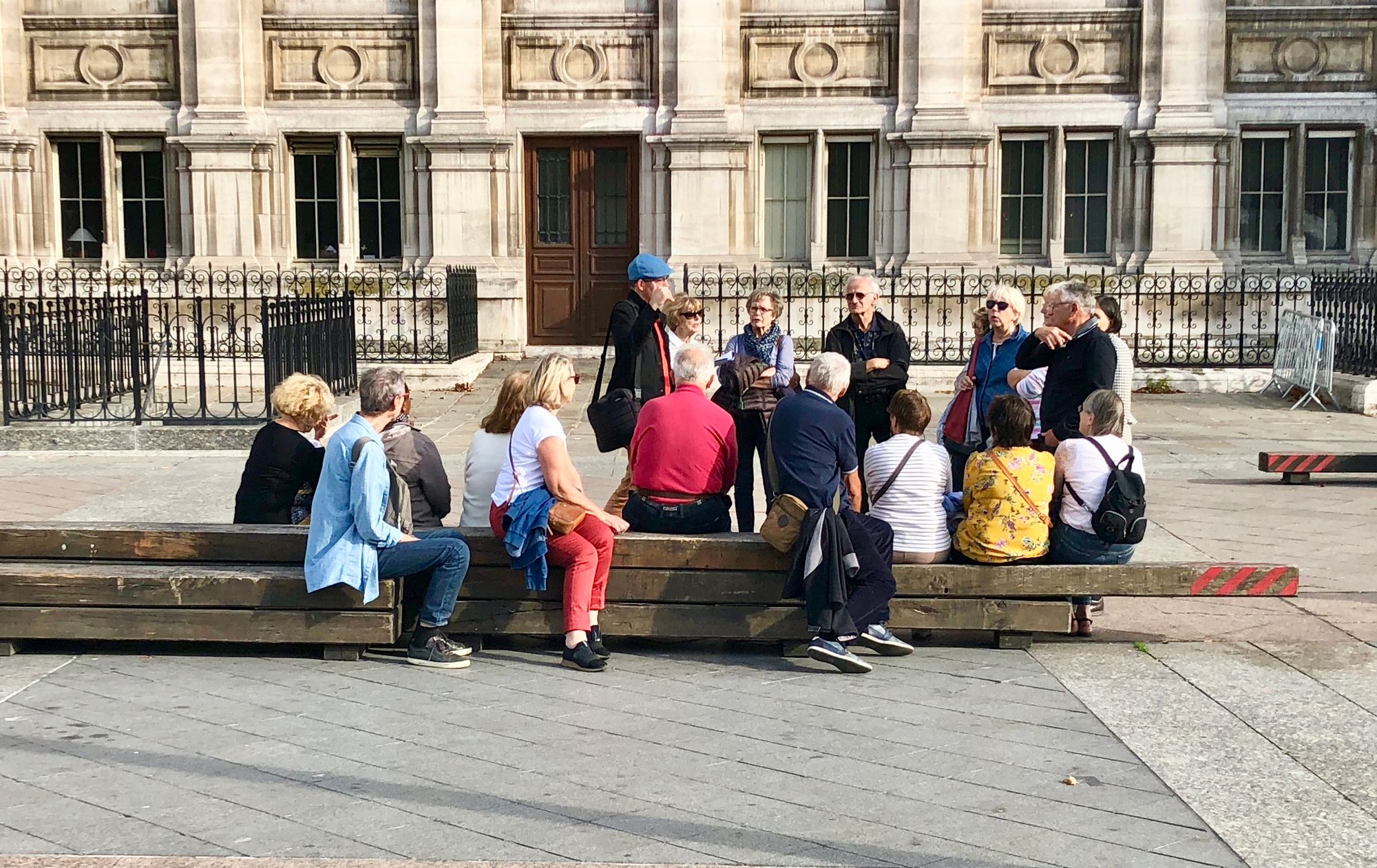
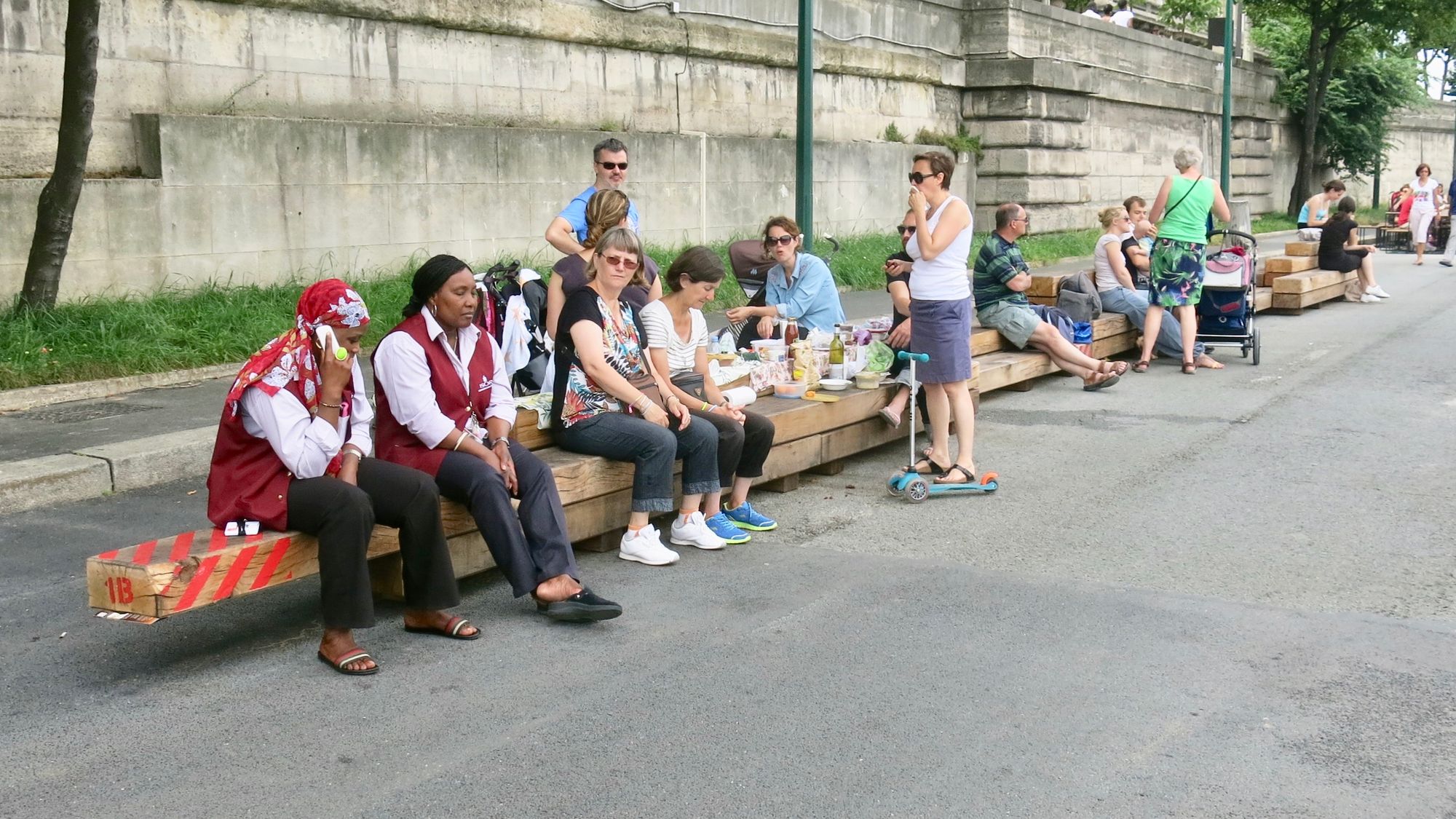
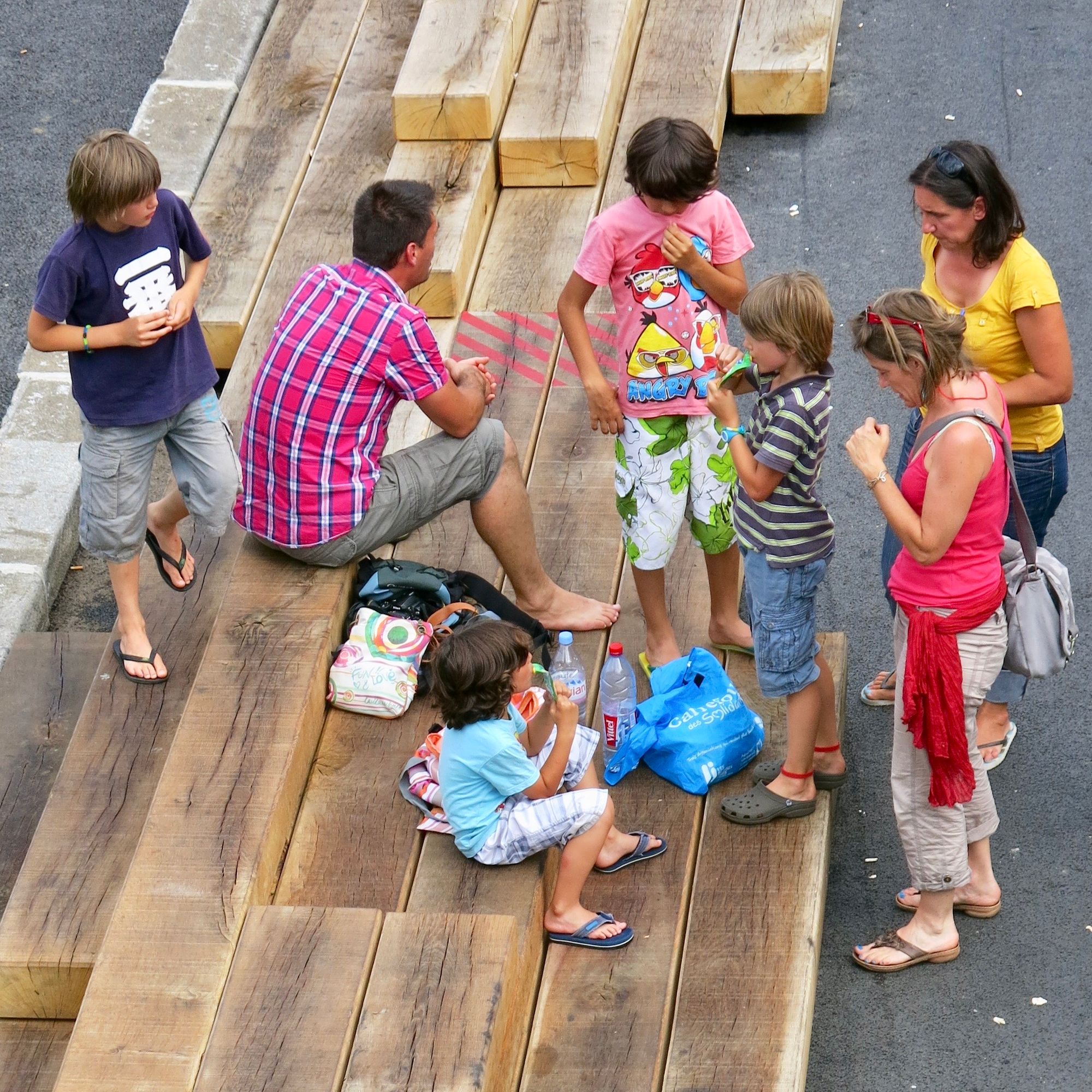
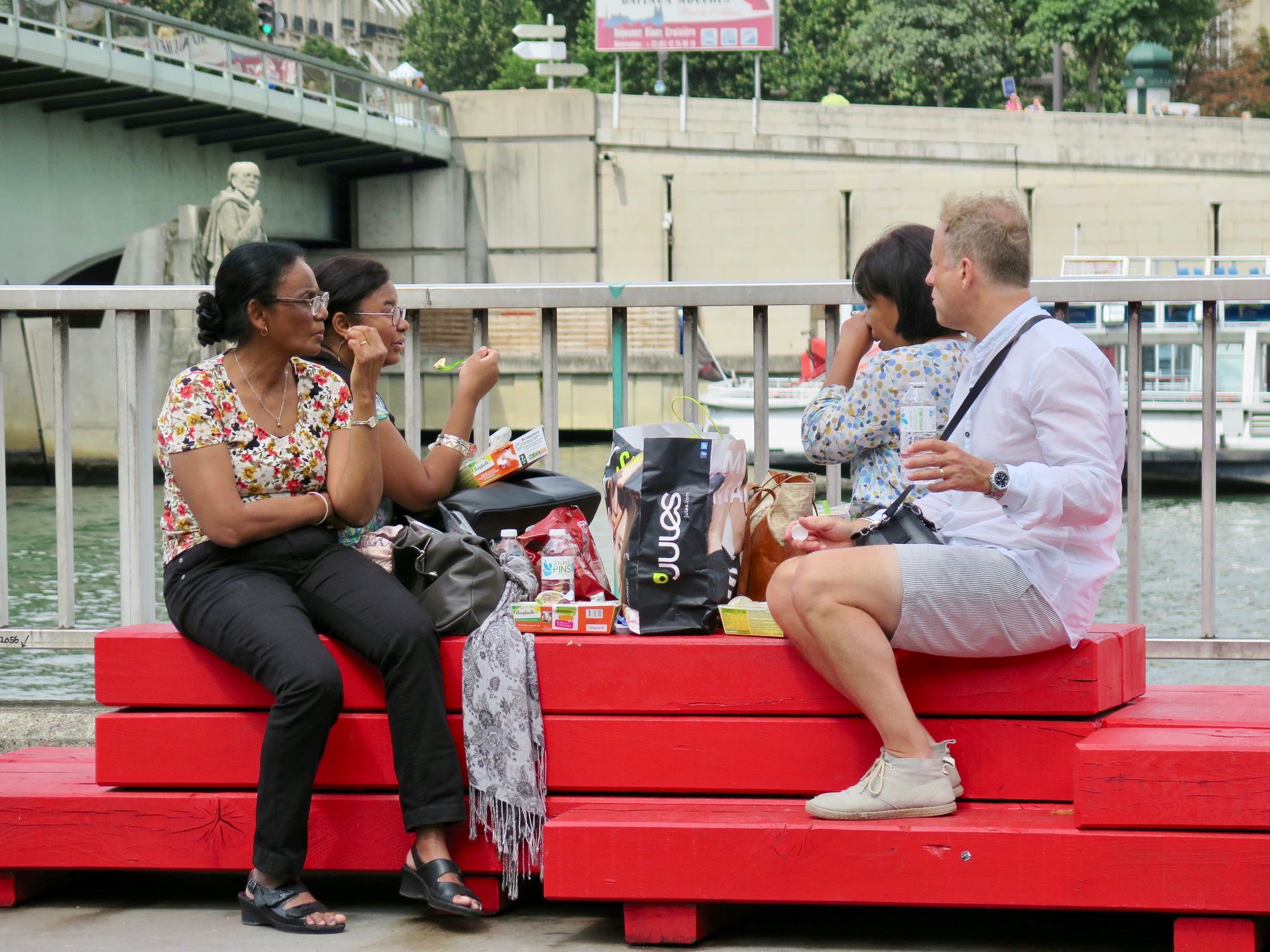
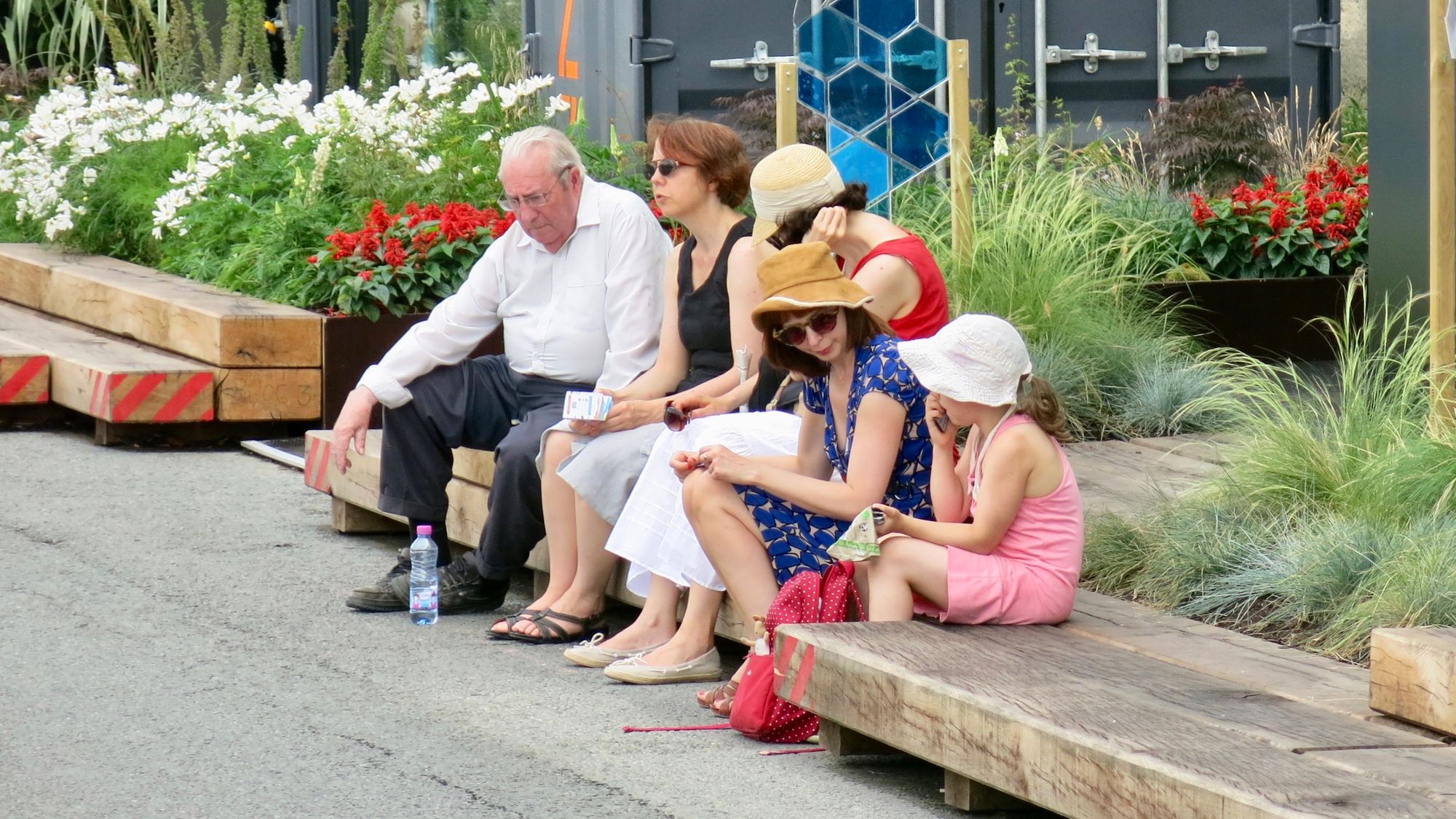
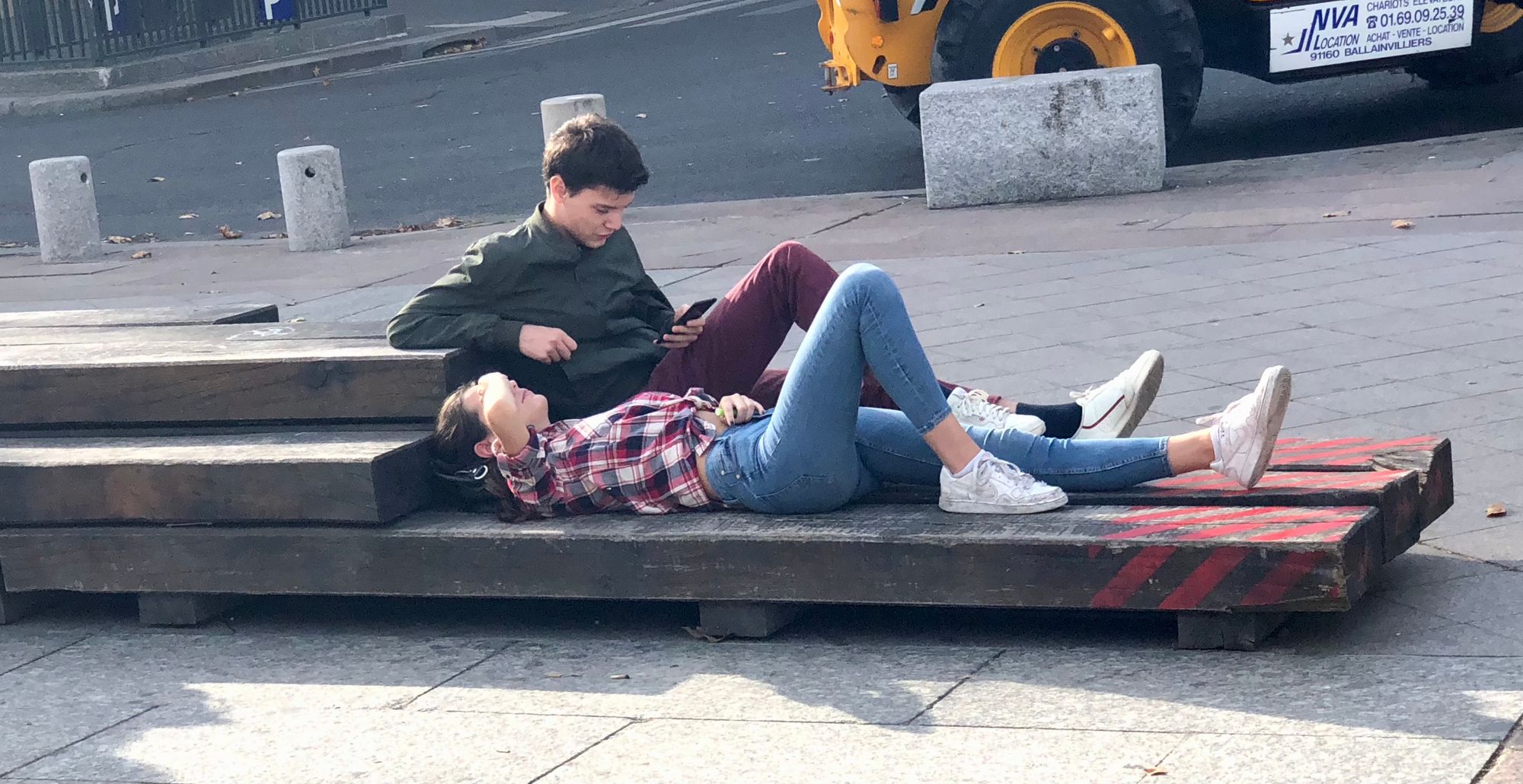
Luxembourg Gardens
The universal appeal of Paris's beloved Luxembourg Gardens is that it makes people feel welcome to eat, relax or stroll. But most of all, it invites them to take a seat.
The underlying secret to this success are 4500 moveable chairs— which can be rearranged to allow people to sit together in a group; to move their seat into the sun on a cool day, or into the shade on a hot one: to read, nap or watch the passing parade of park-goers.
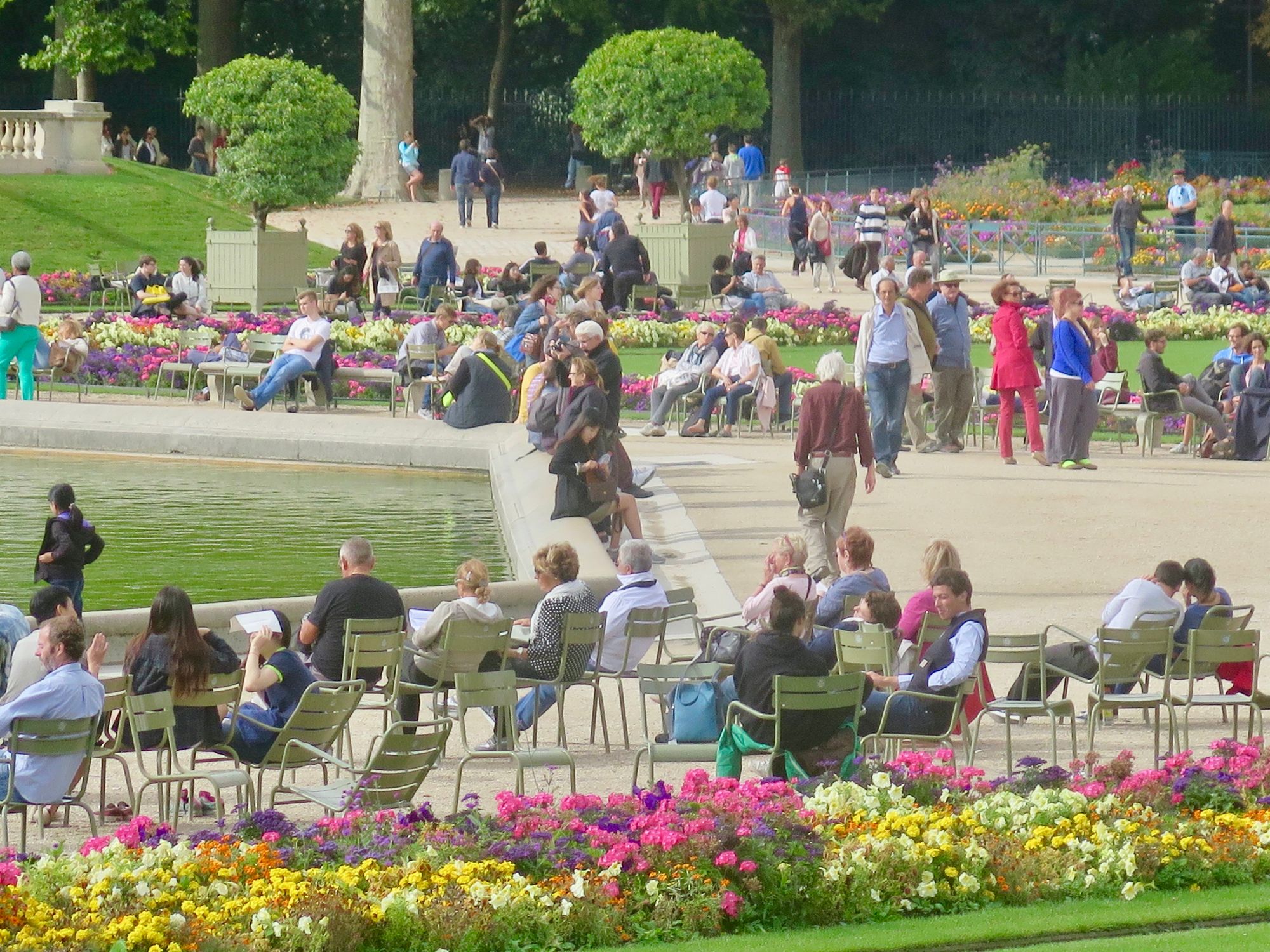
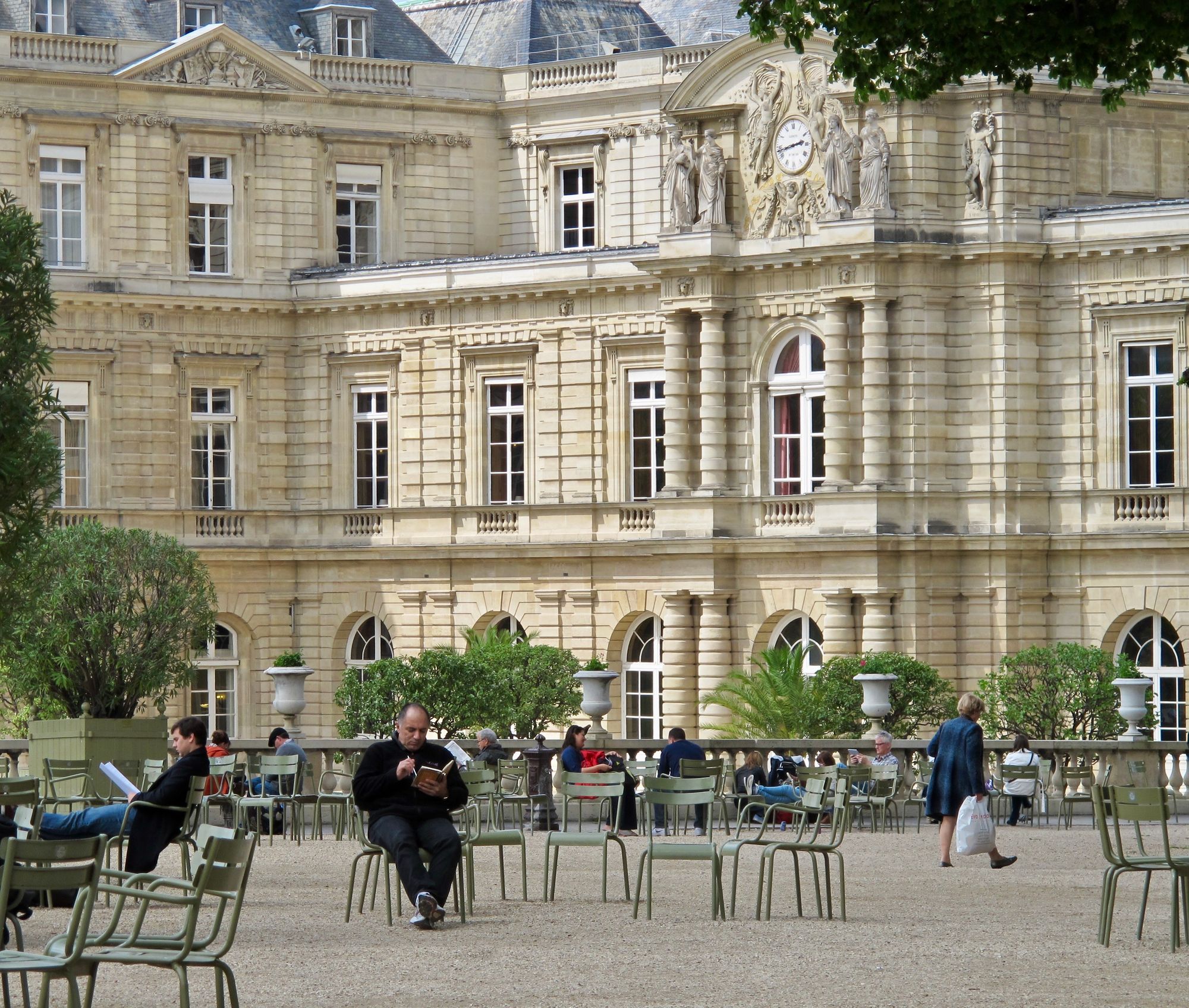
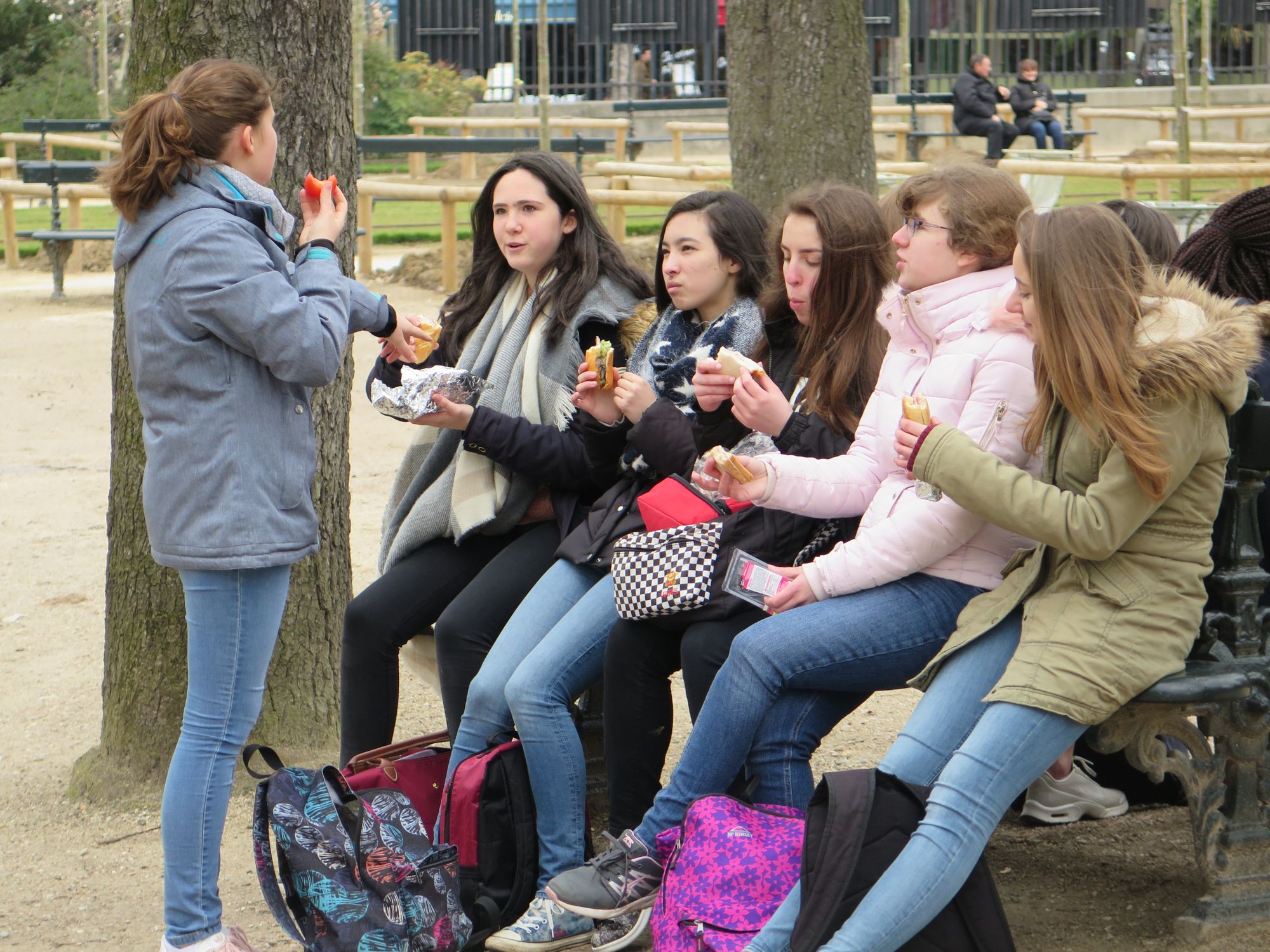
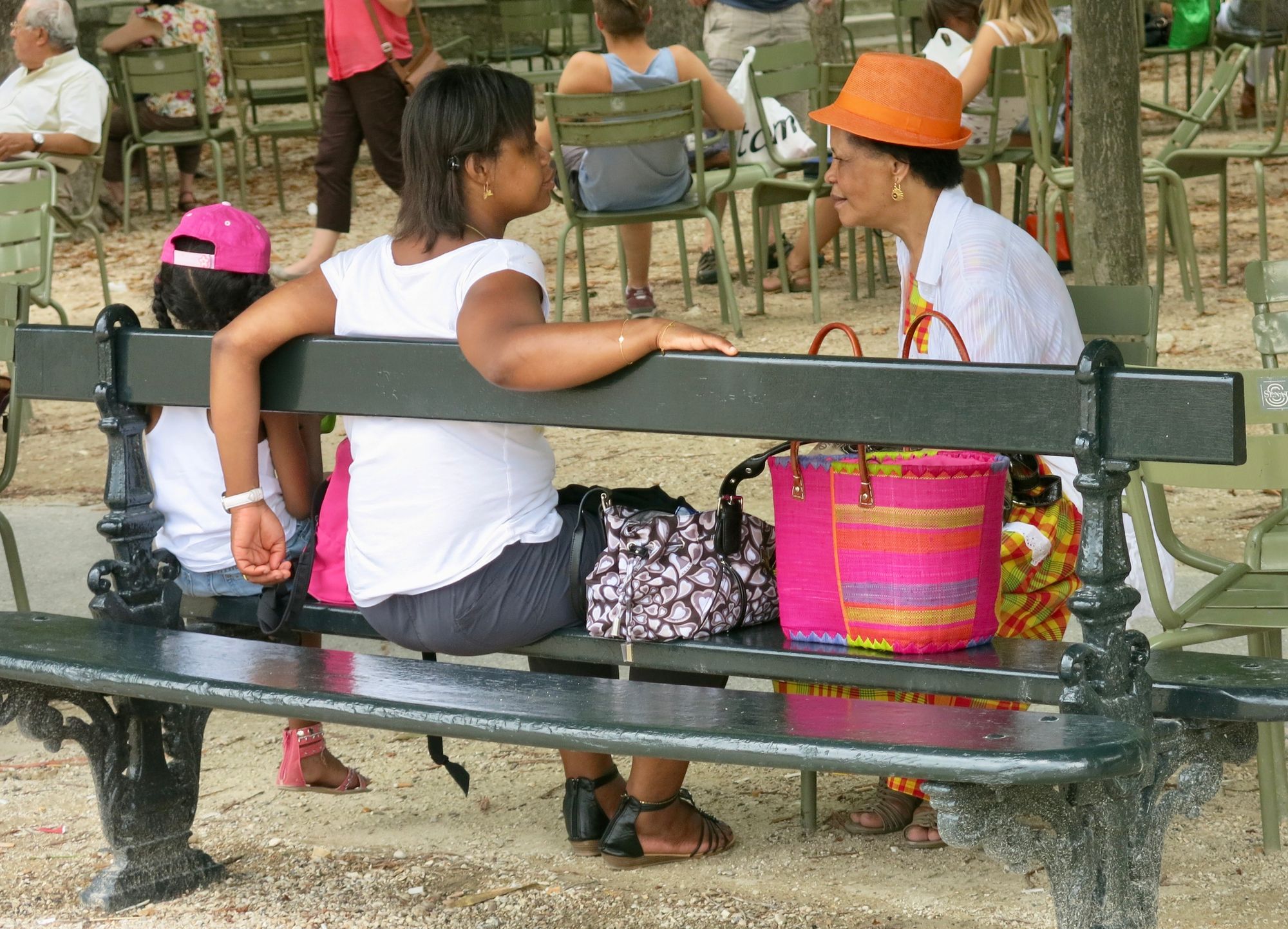
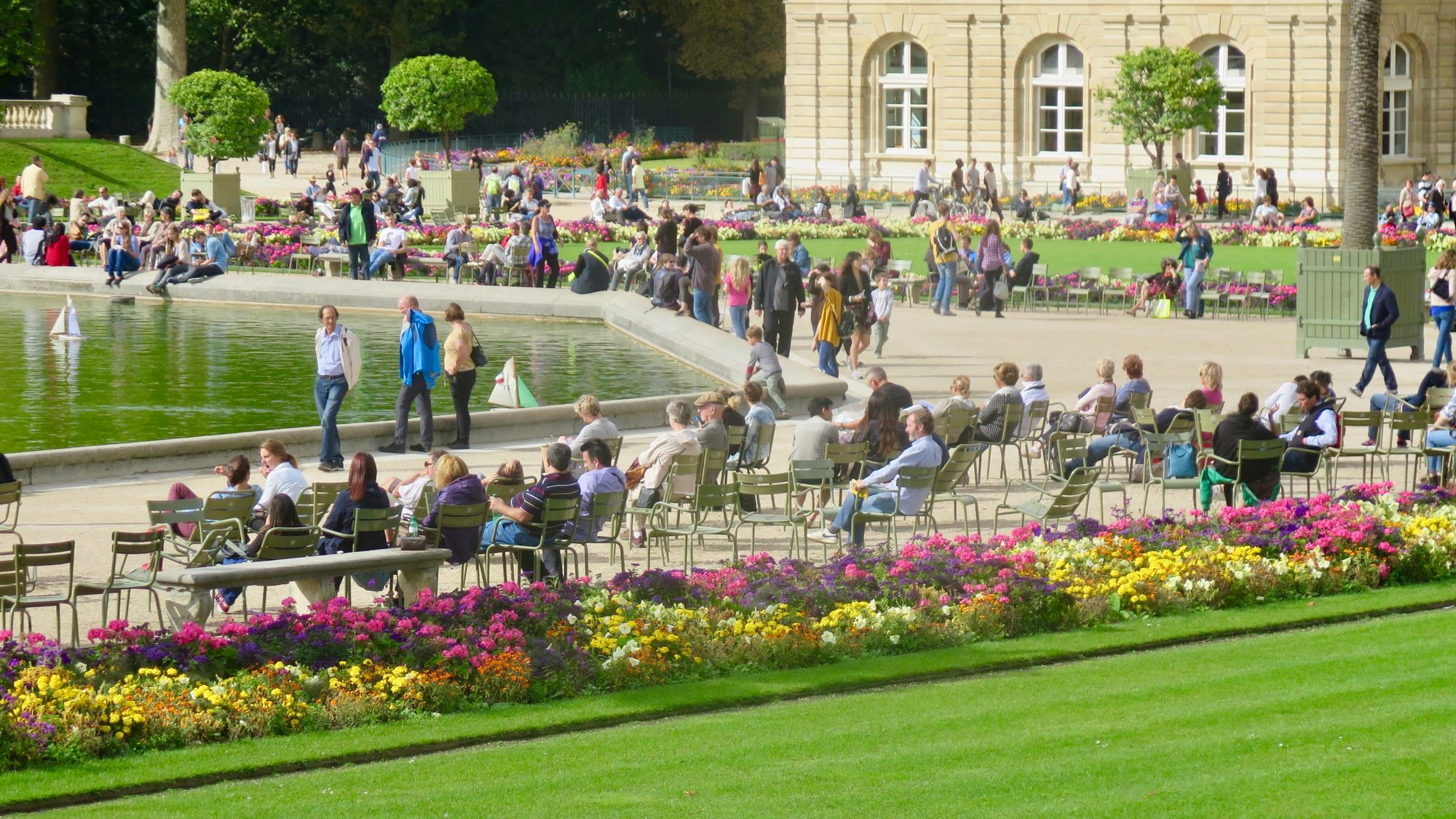
Vail, Colorado
It's always nice to sit next to a genius. This bench in Vail, Colorado, plays host to a relaxed figure of Albert Einstein. It is especially welcoming due to its placement and design. Many people like to have their picture taken with him.
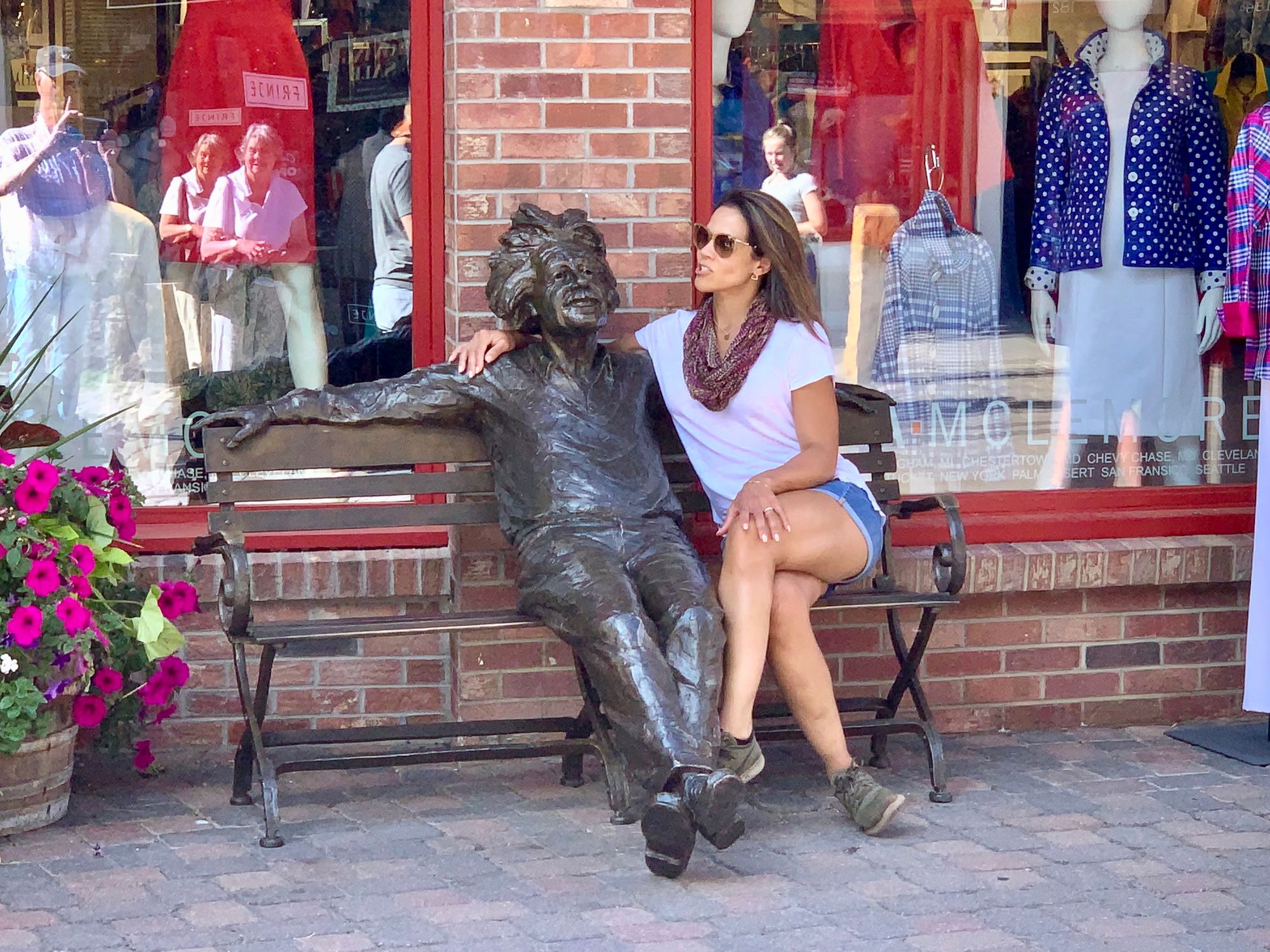
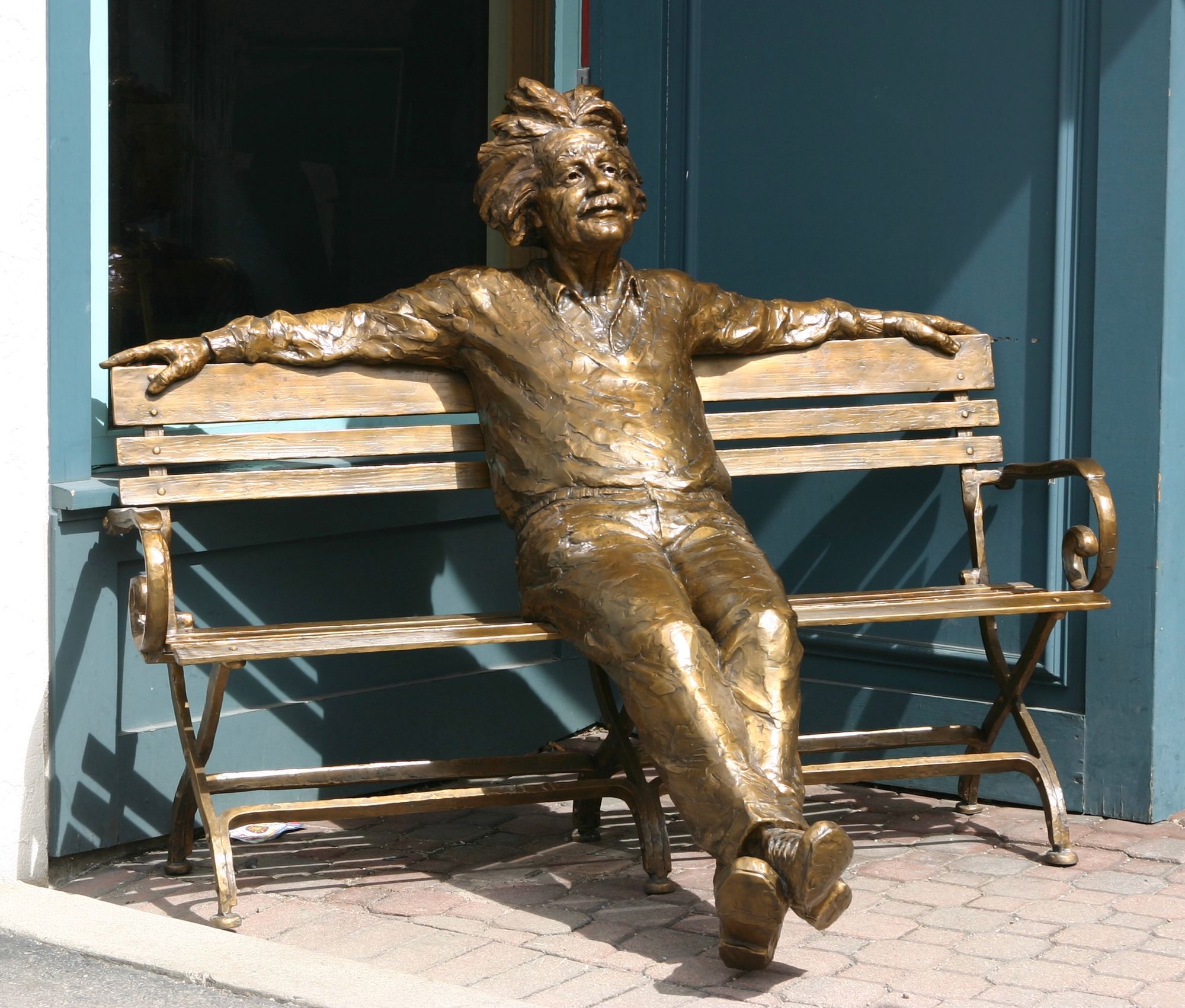

How Wide Should a Bench Be?
4-Foot vs a 9-Foot Bench.
Copenhagen, Oslo, and Turin
It's hard to control a nine-foot bench and keep it to yourself, because a nine-foot bench can easily handle three groups of people.
Meanwhile, a four-foot bench can be just for one person or for groups of two to three, but based on our observations, it is sometimes uncomfortable for two strangers to share it. A solution we've seen in Turin is to divide a long bench into two sections. But it does mean that a group of more than two would be unlikely to sit there.
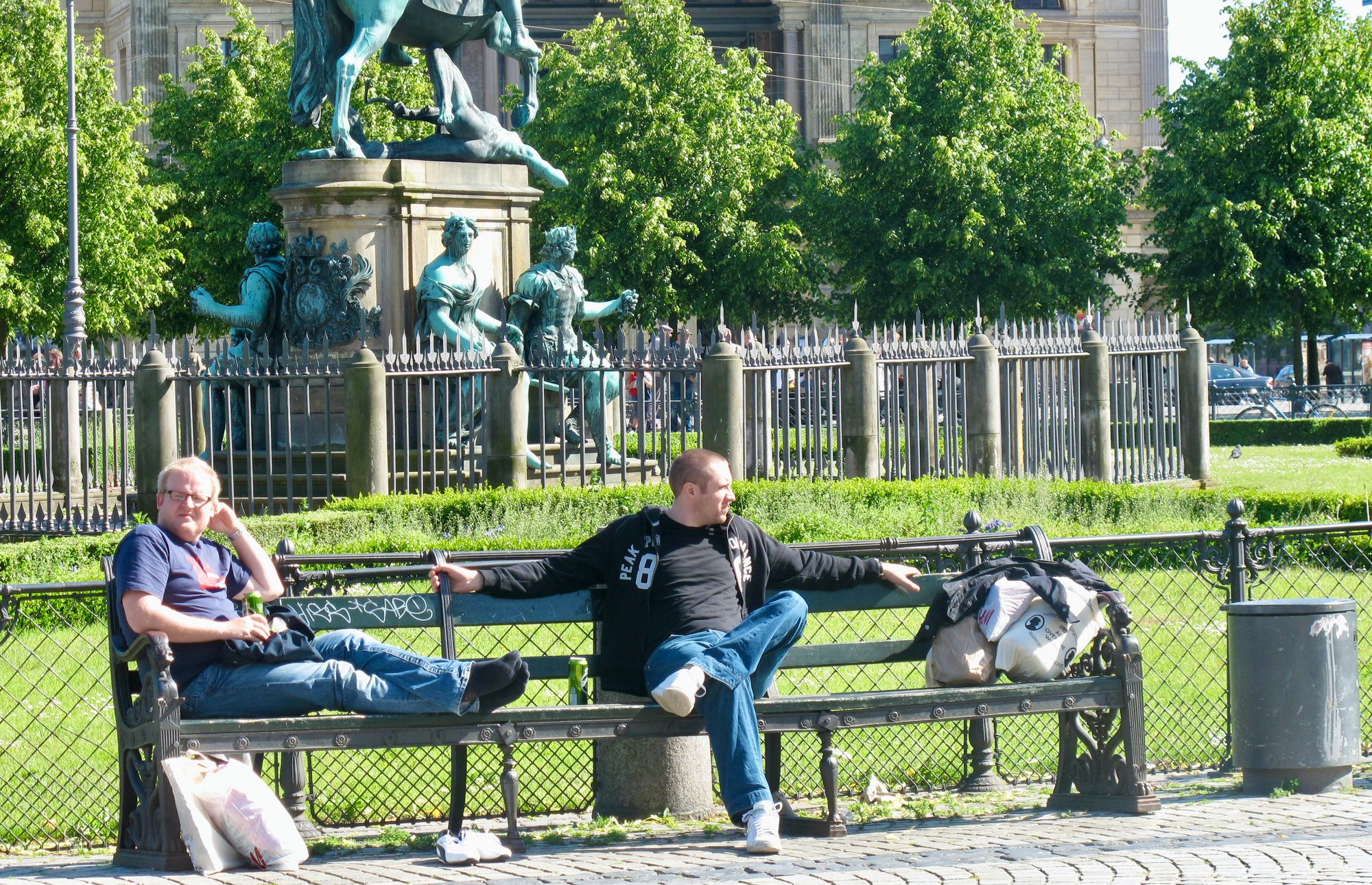
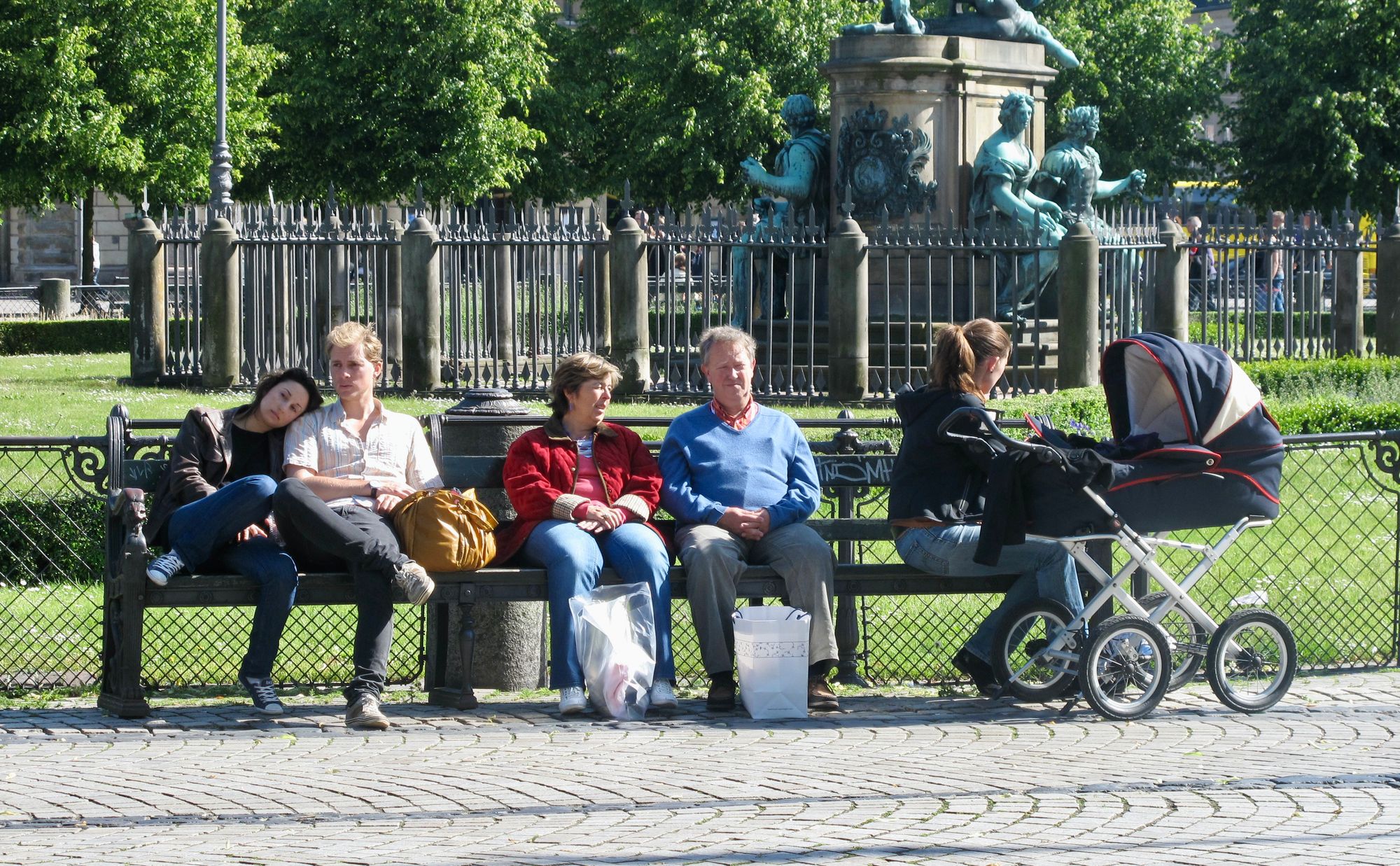
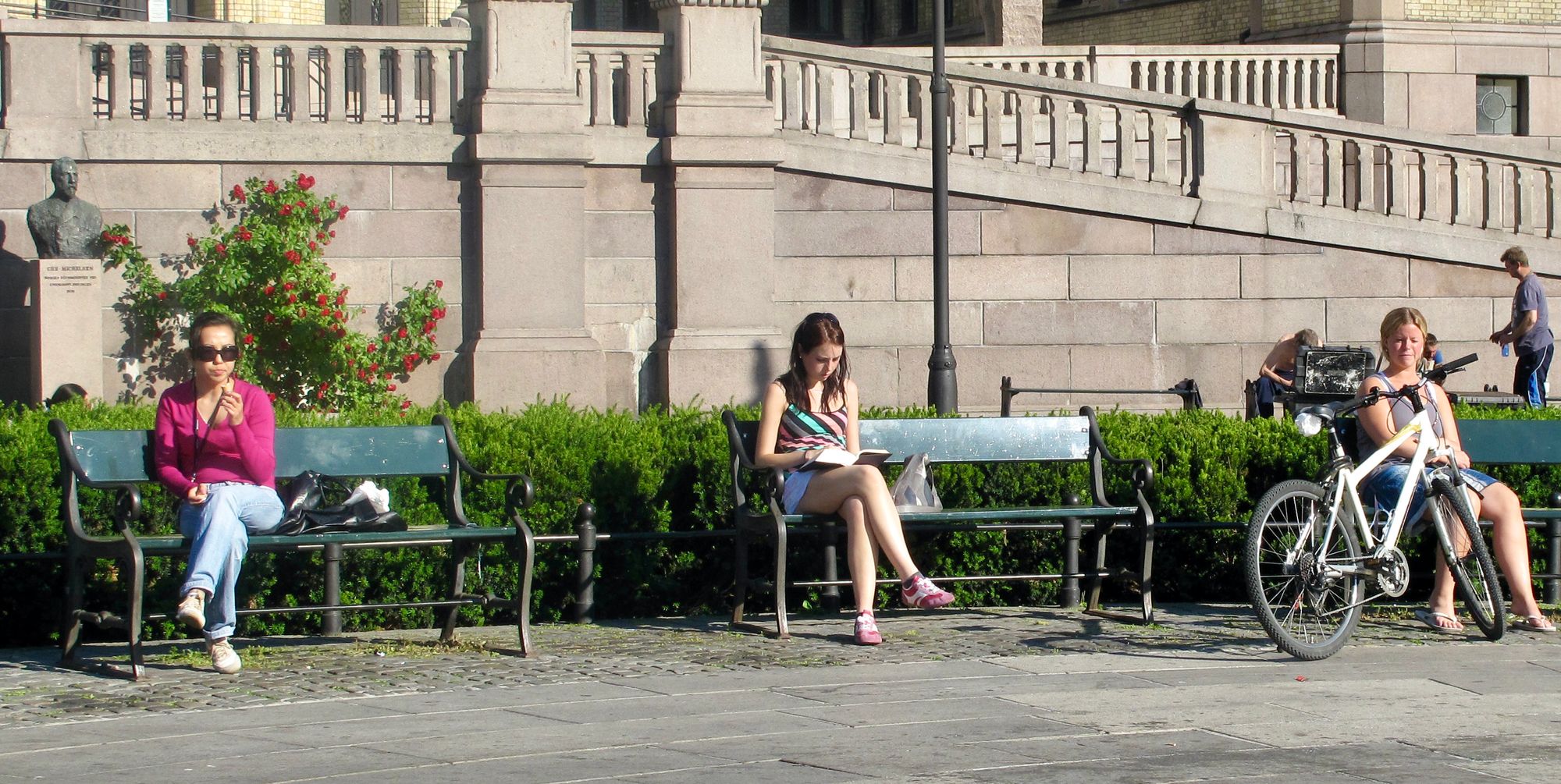
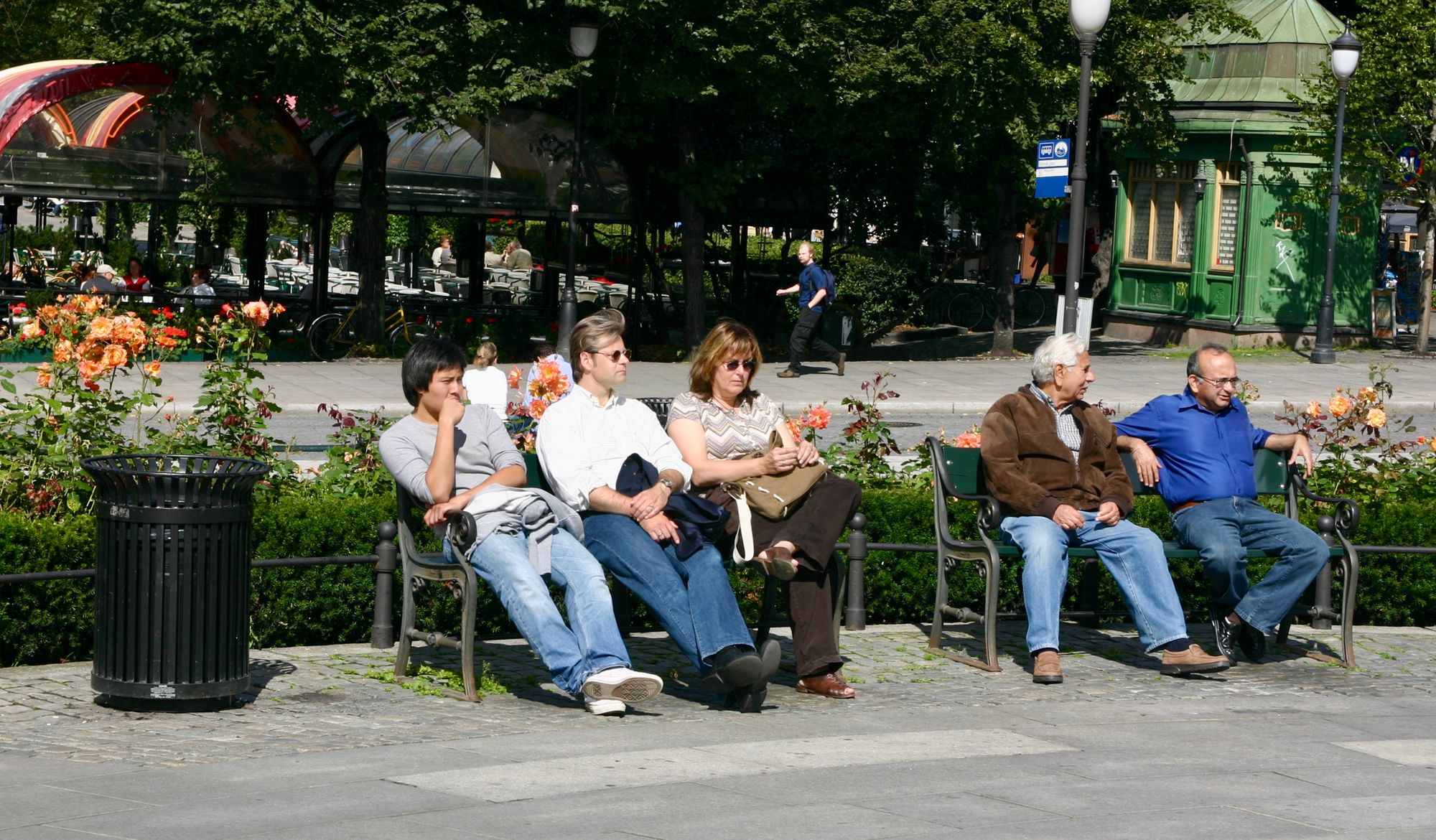
Top two benches are in Copenhagen; the bottom ones in Oslo.
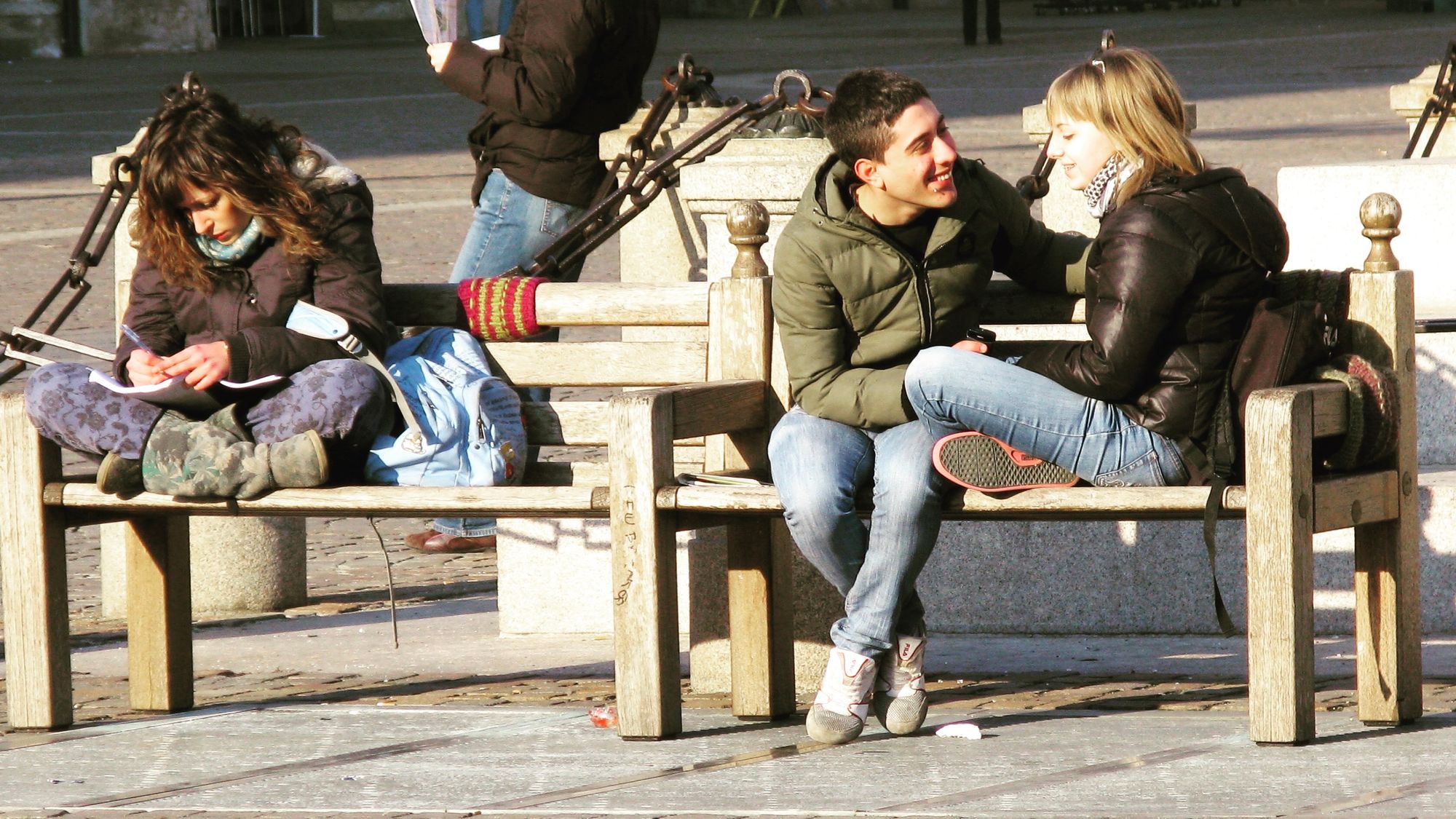
Front Row Seating
Meanwhile, no matter where you go, front-row seats always draw the most people. The places with the best view are usually the most sought-after spots, especially on corners.
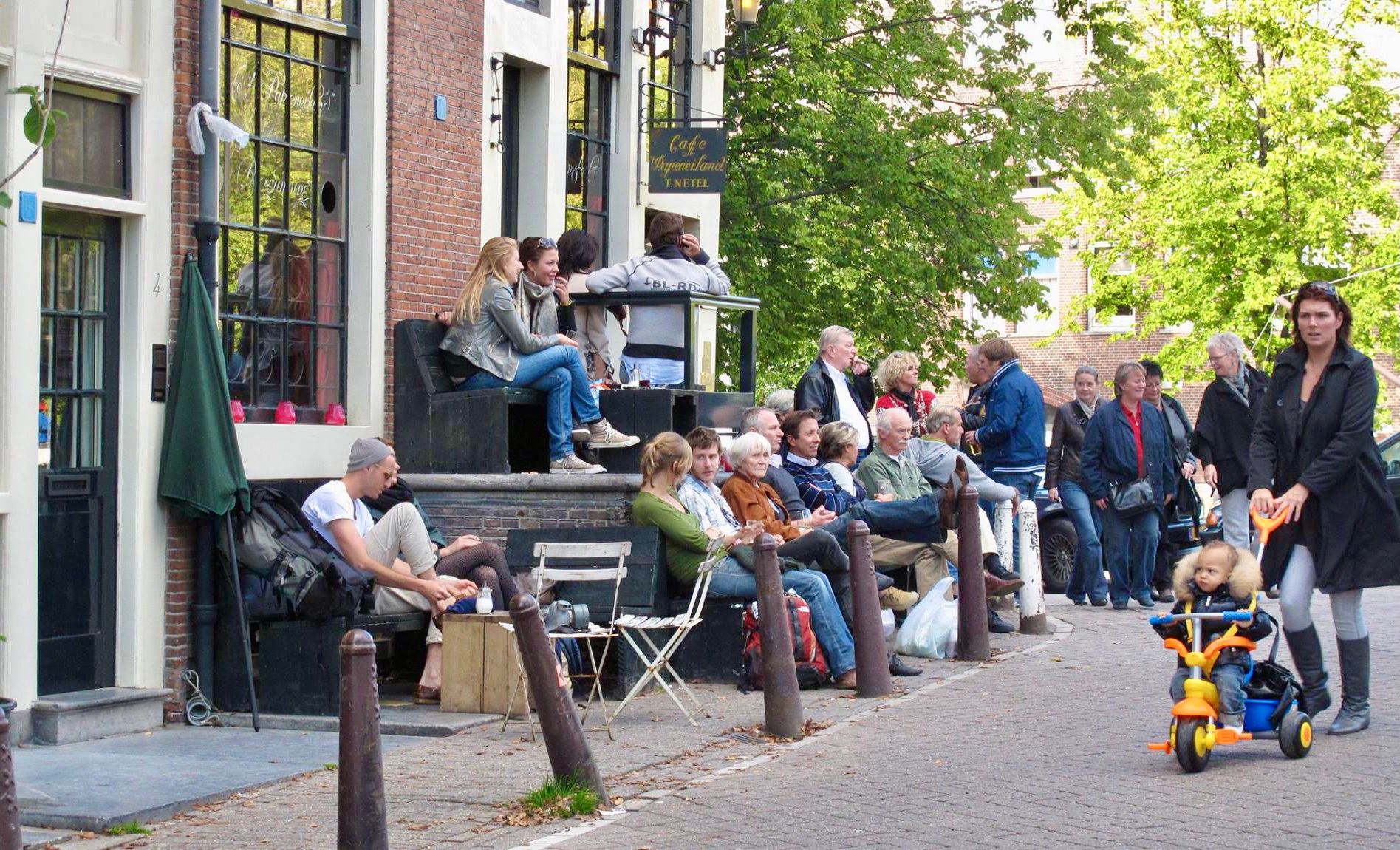
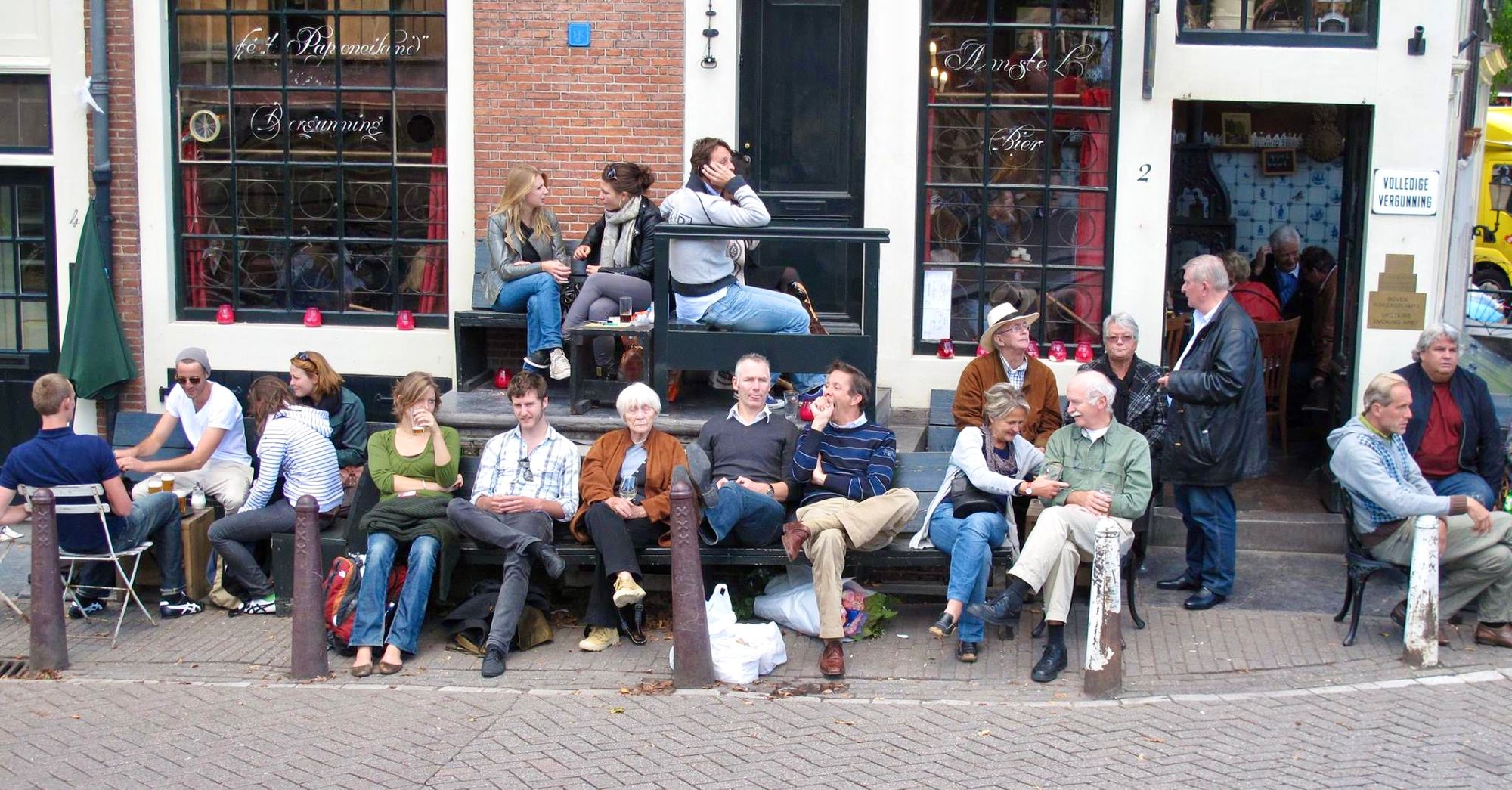
This corner in Amsterdam is always loaded with people. It is on an important intersection.
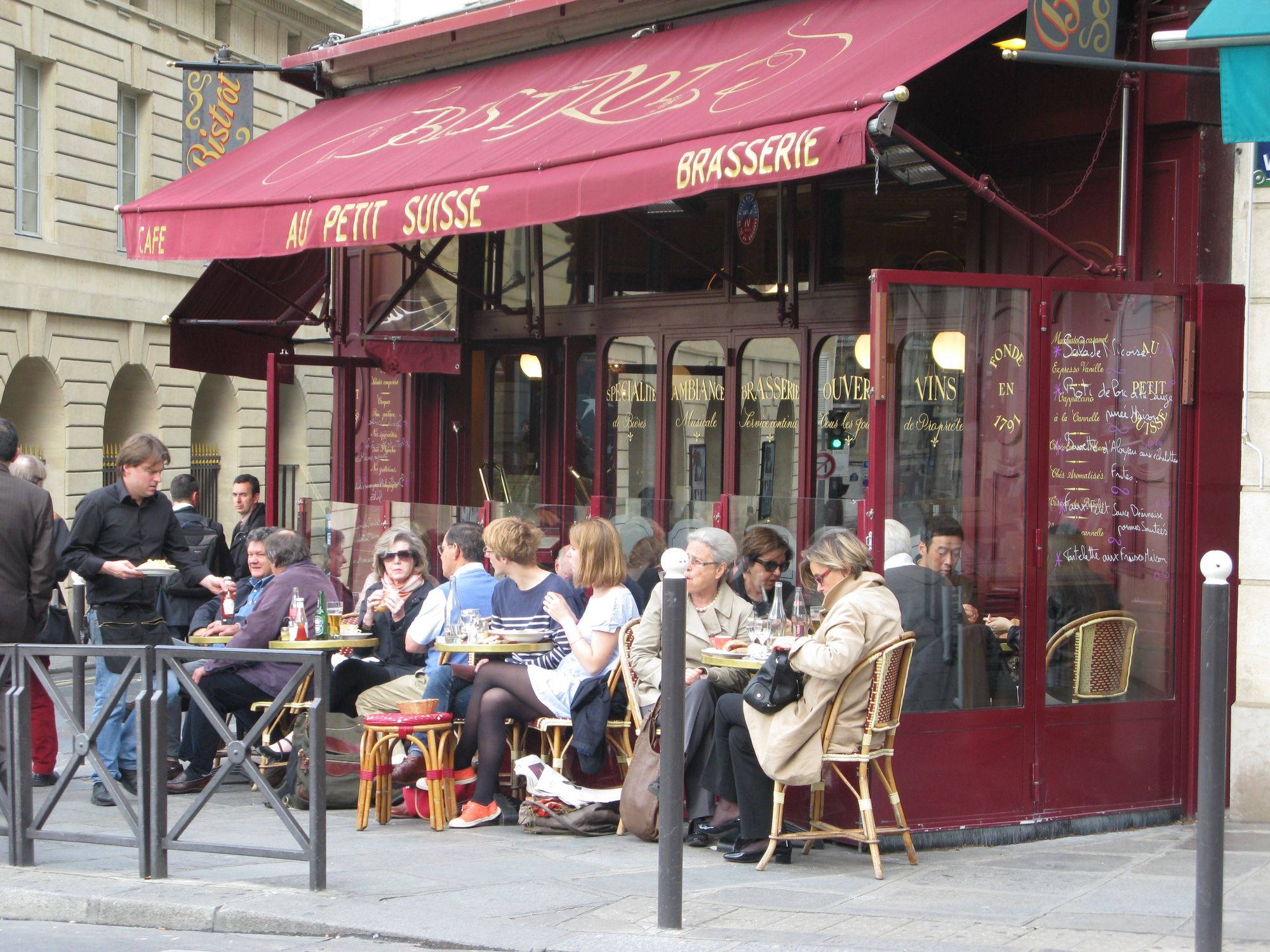
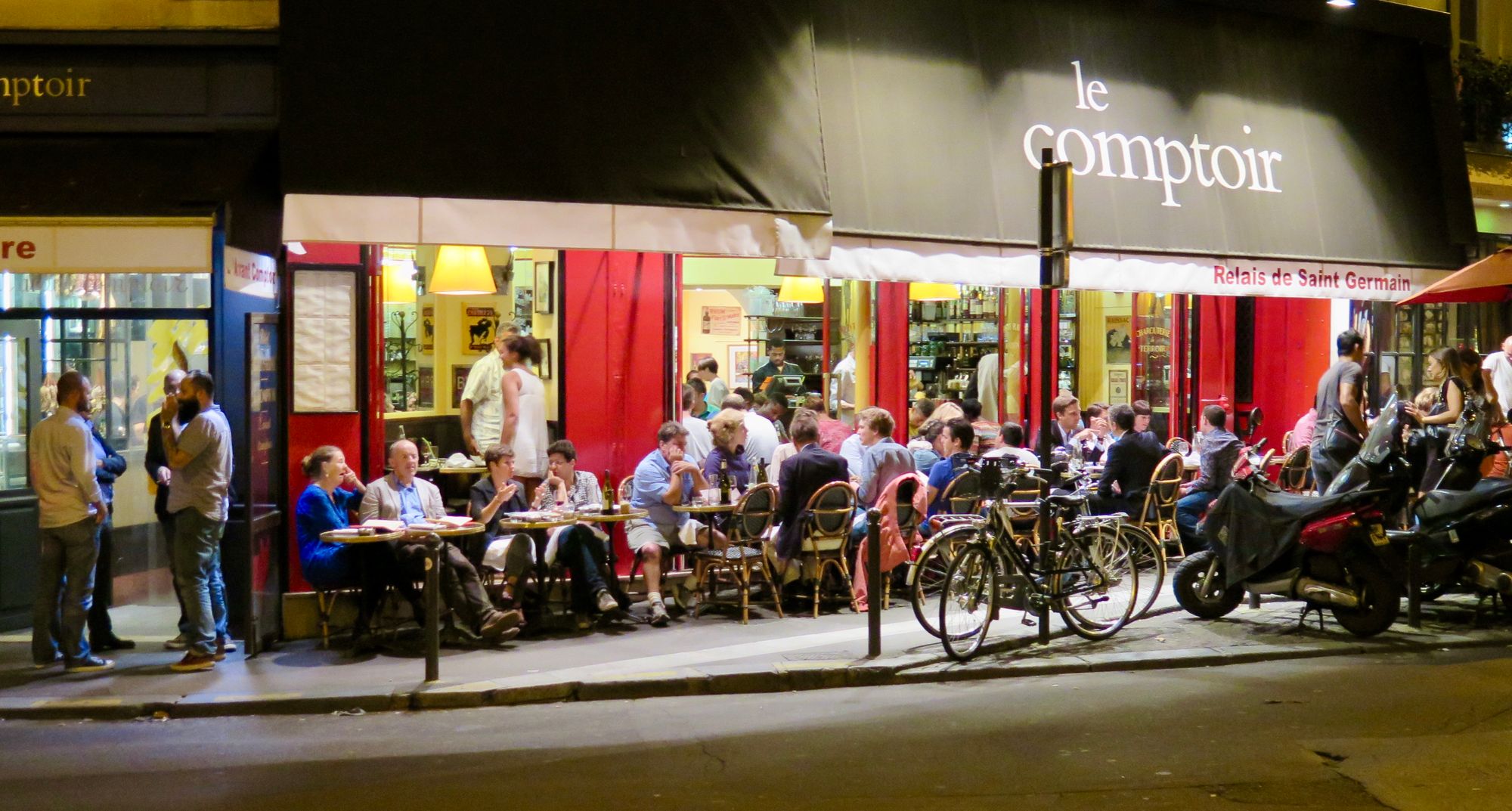
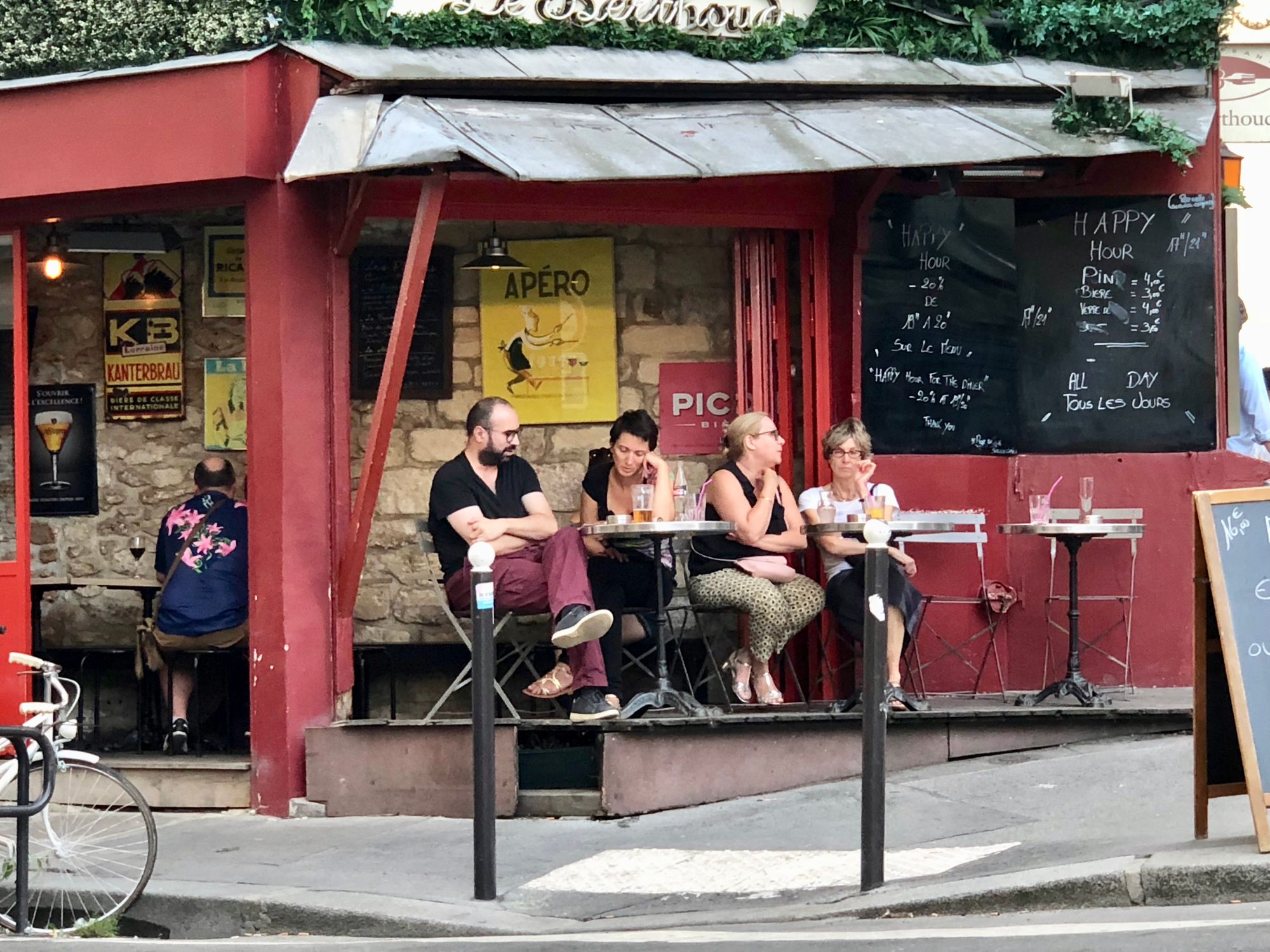
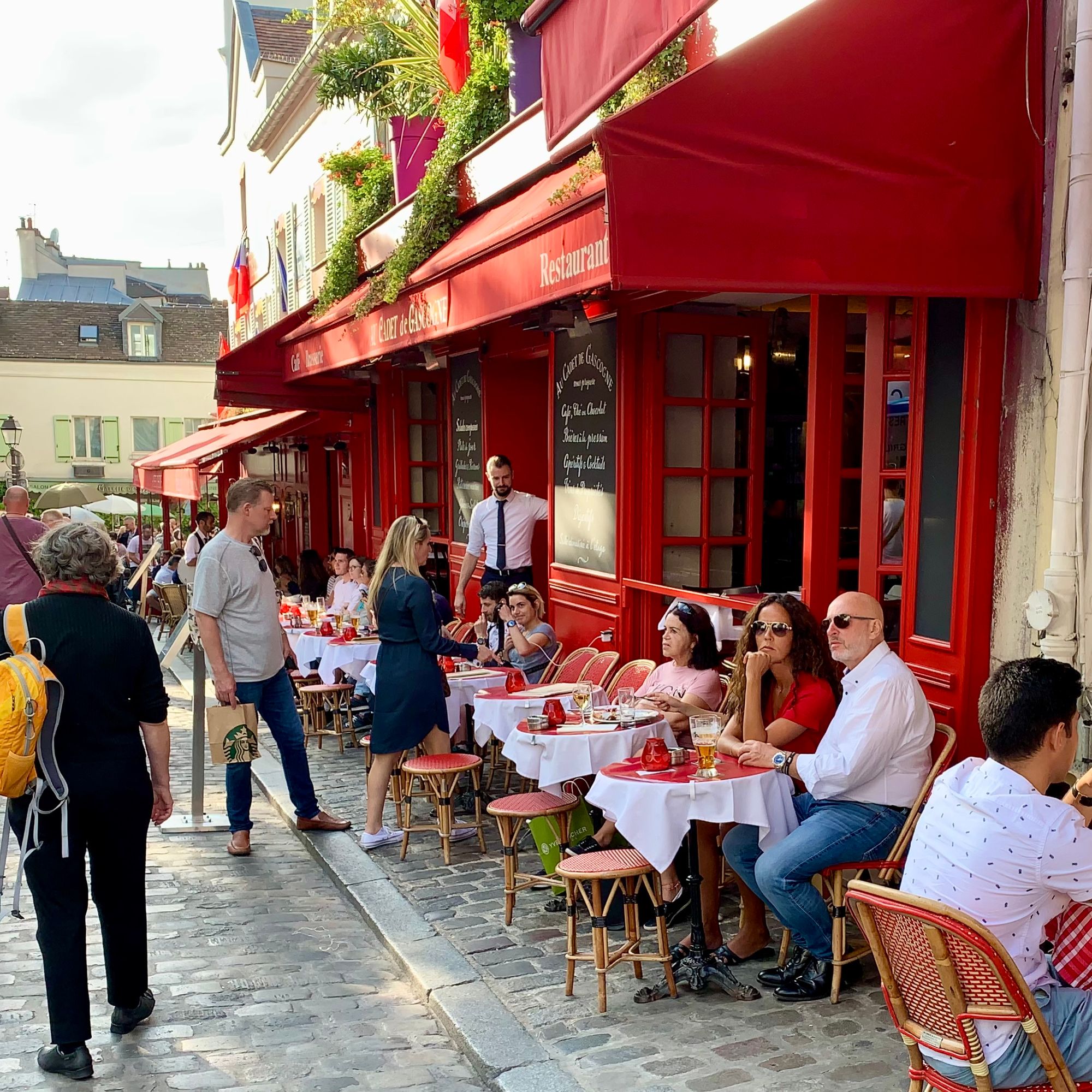
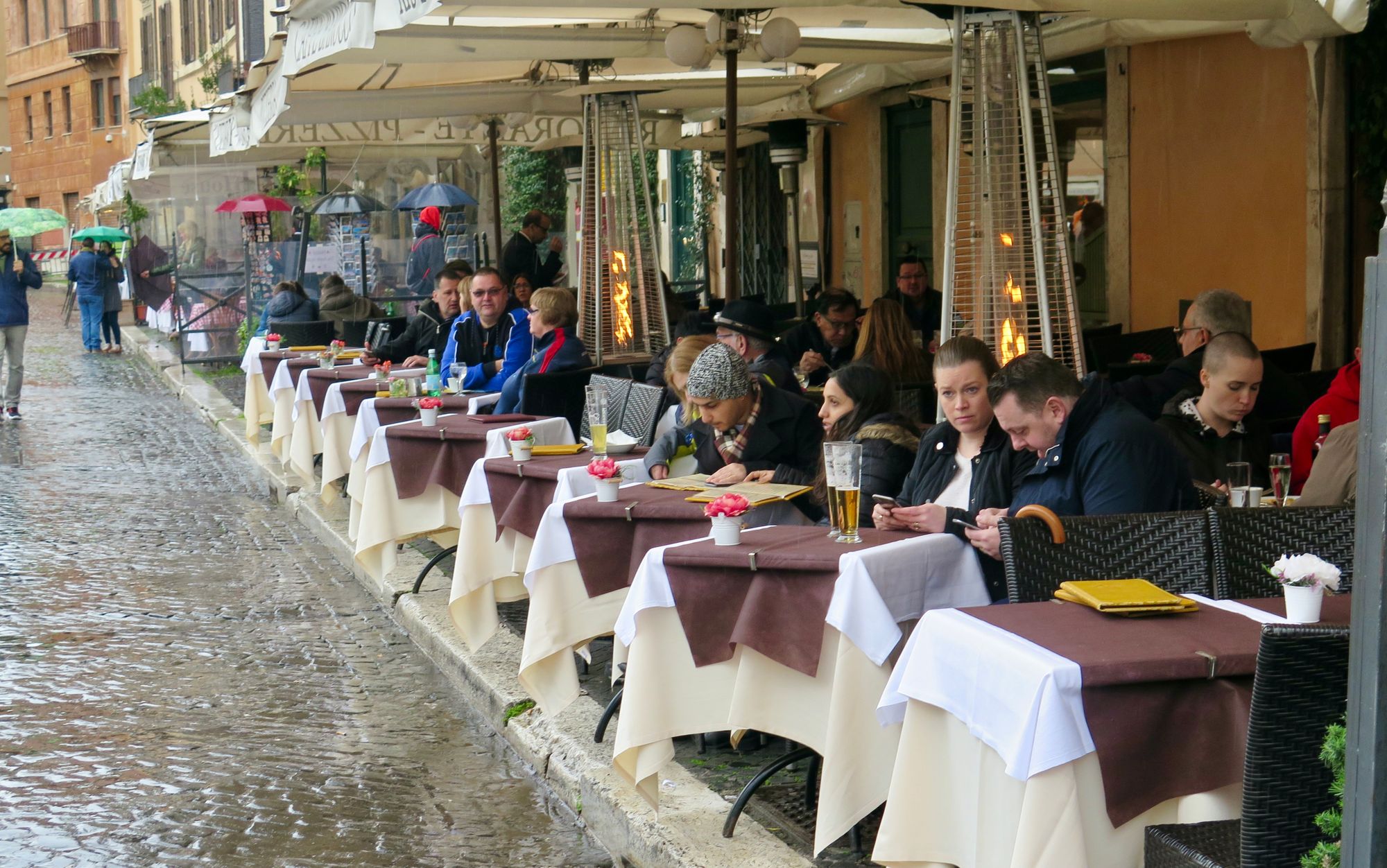
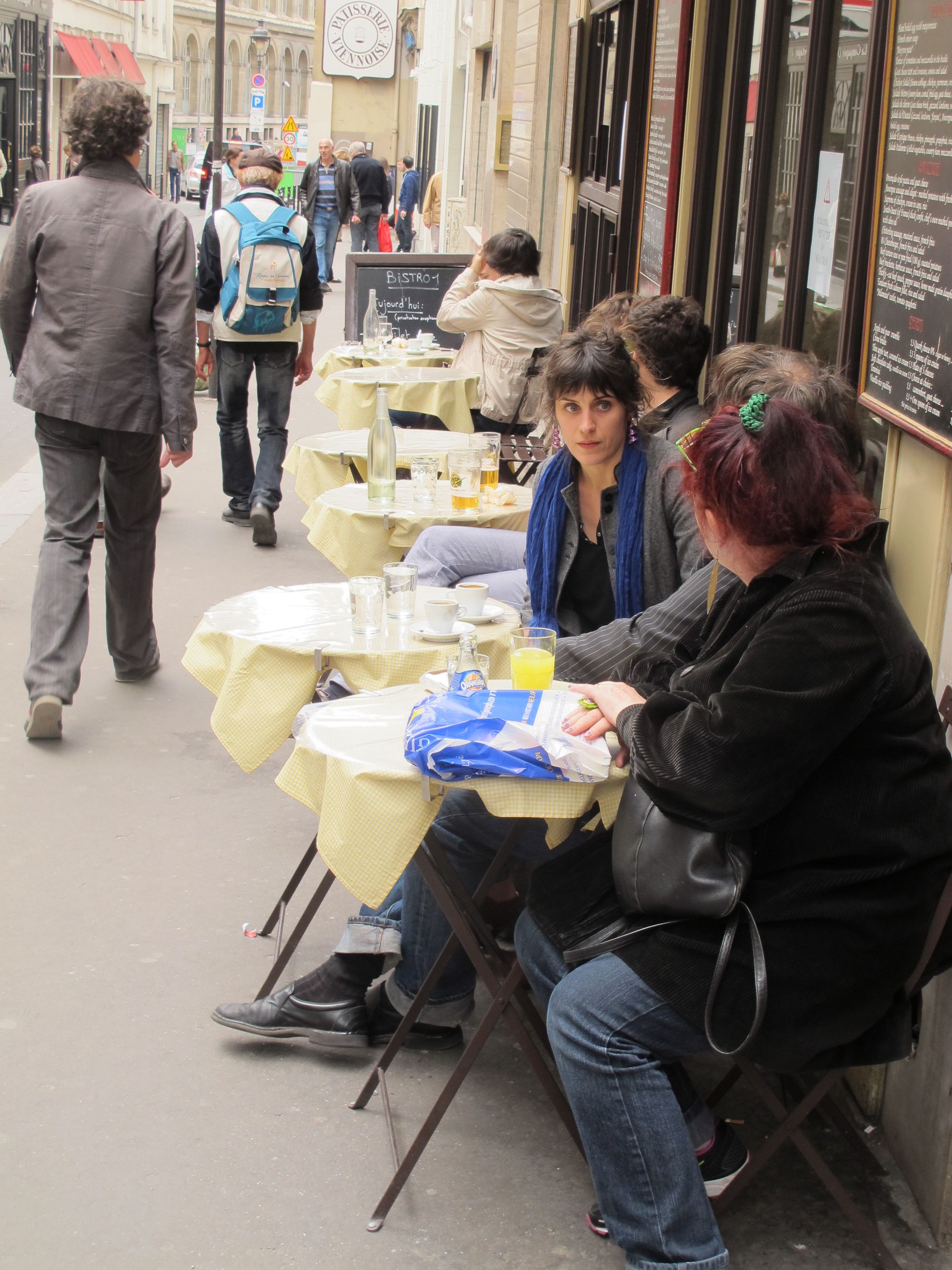
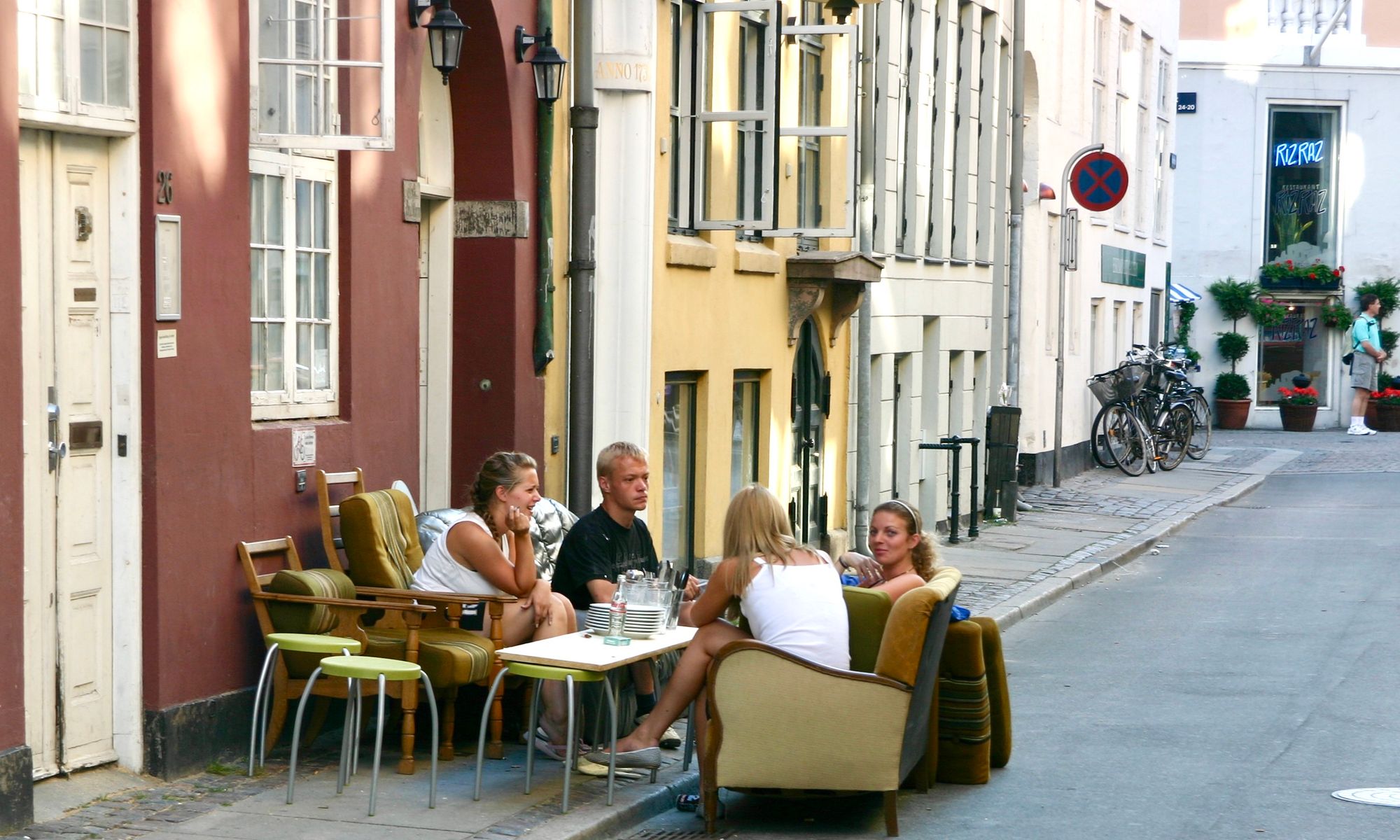
Paris, Rome, and Copenhagen.
Curbs and waterfront edges can also provide this front-row chance to people-watch, read, or enjoy an ice cream.
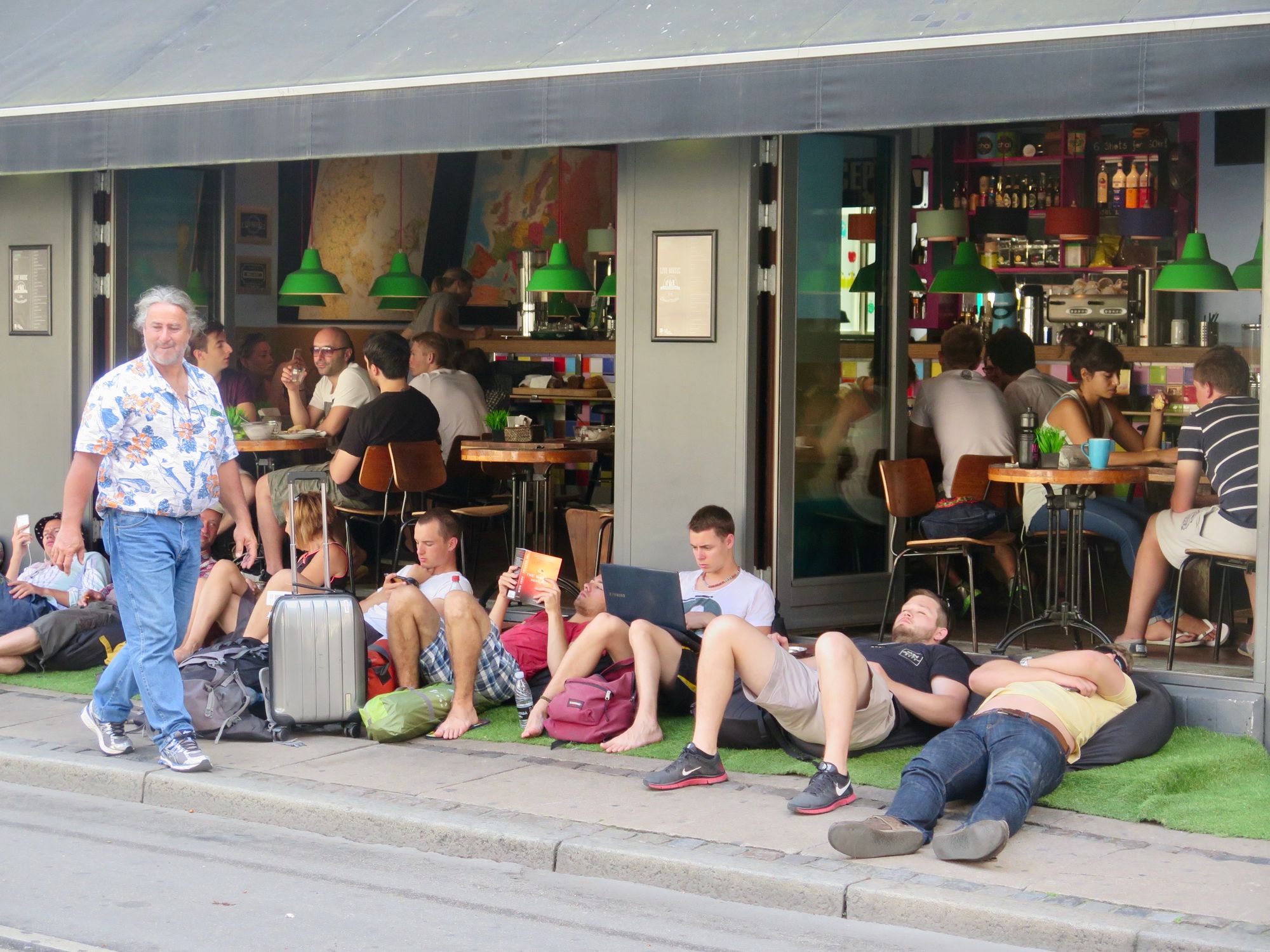
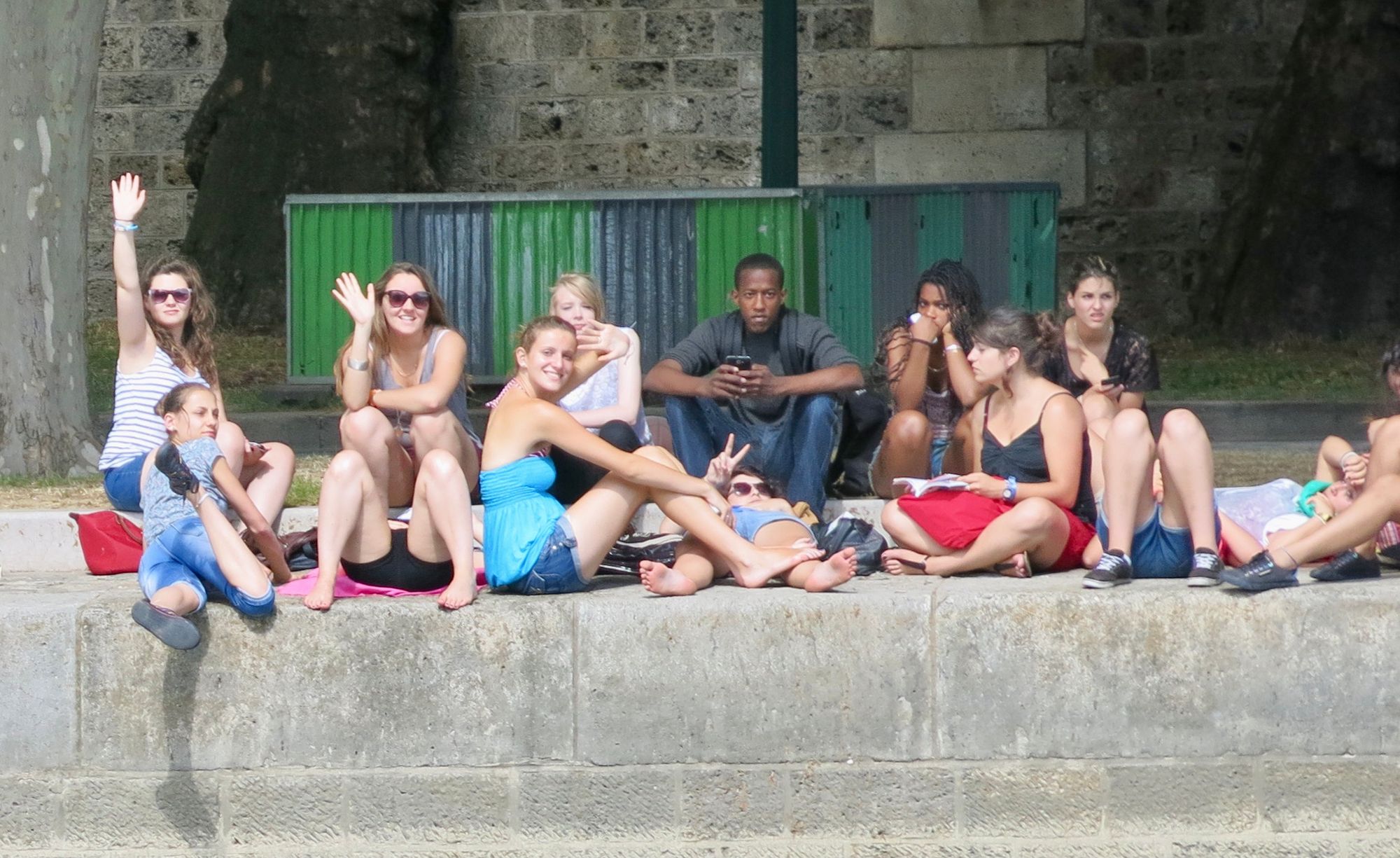
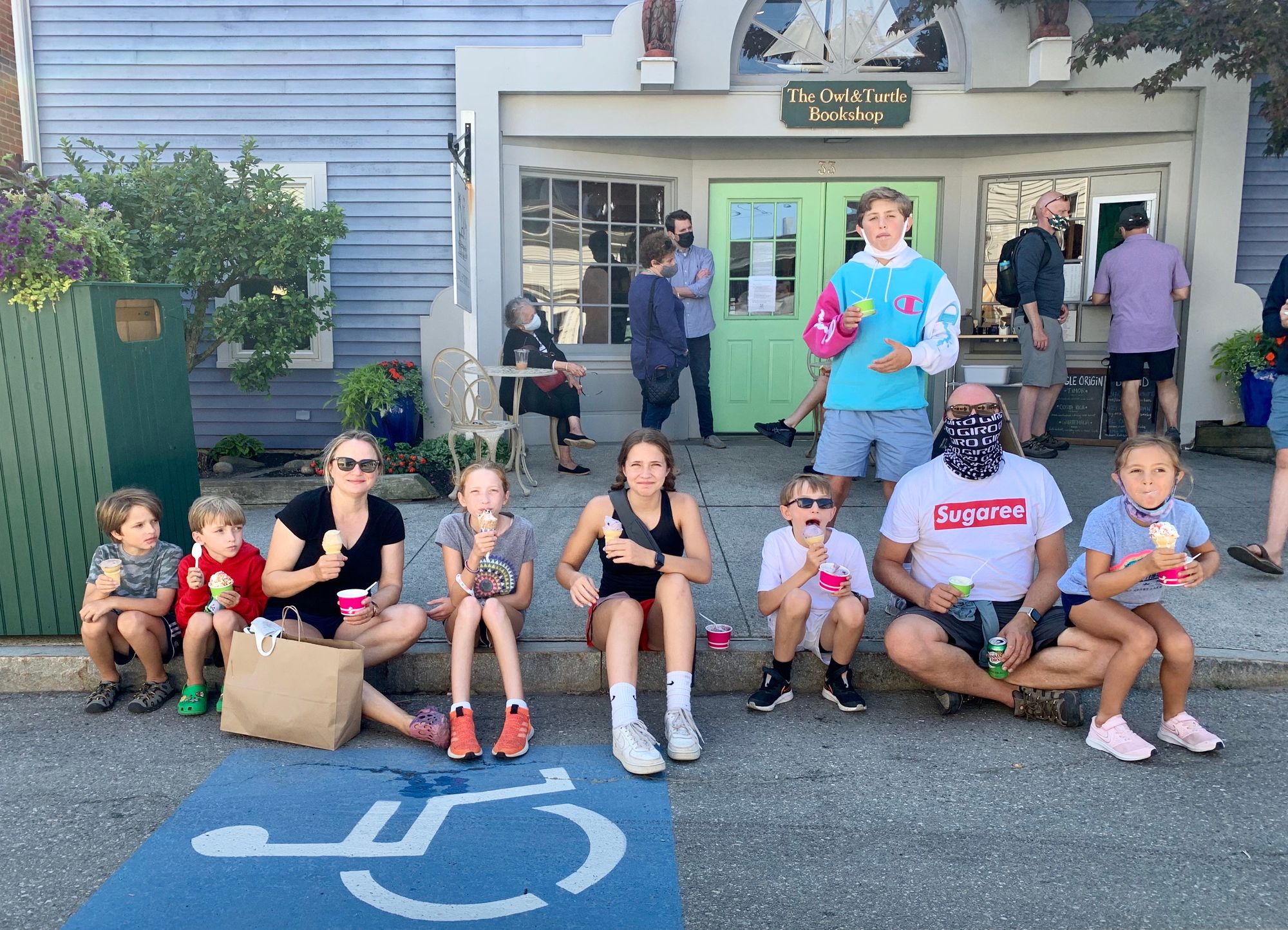
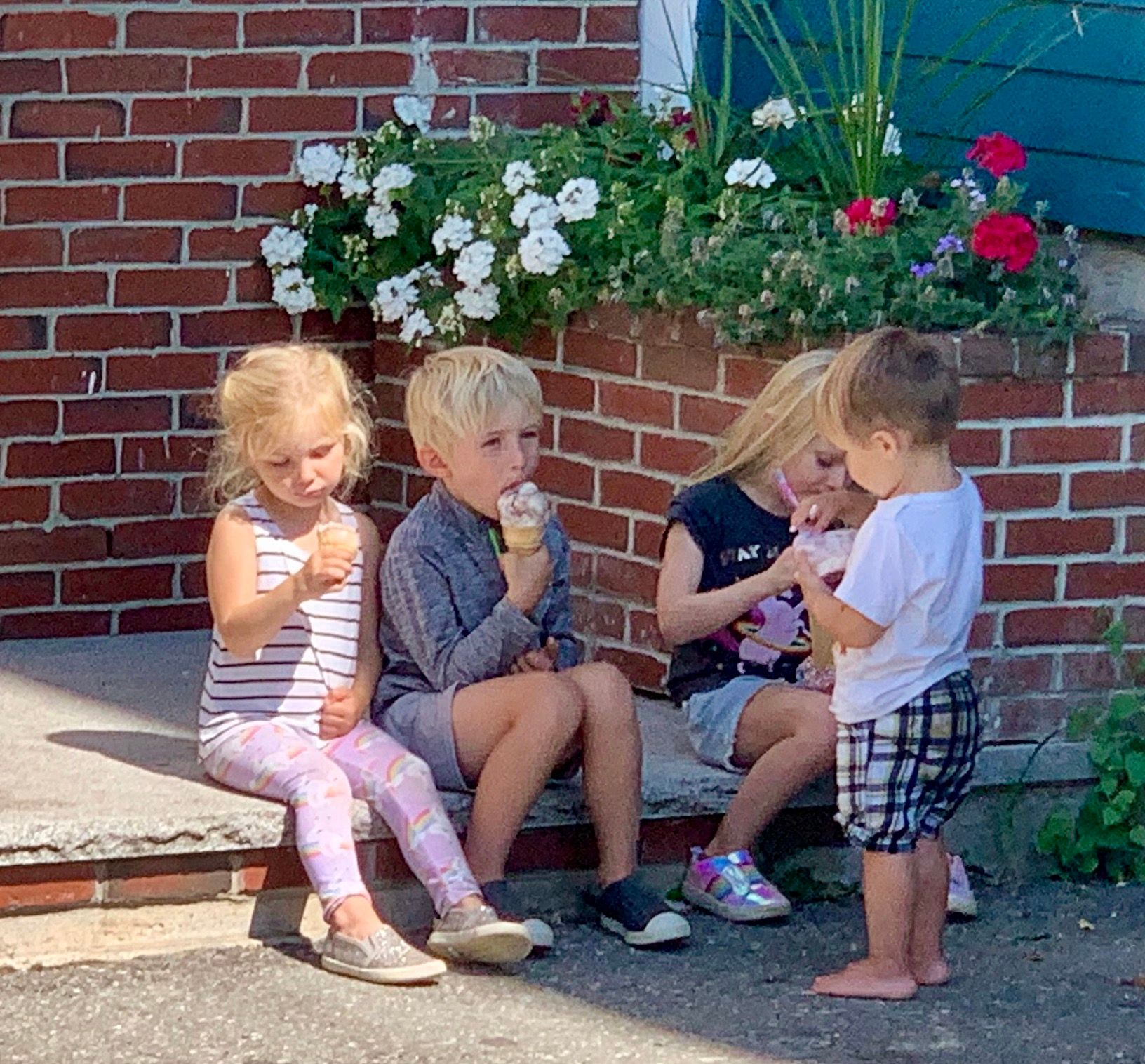
Copenhagen, Paris and Camden, Maine... Eating ice cream always creates interesting ways to sit together often in groups.
Seating and Comfort in Public Transportation: Paris Metro
Paris also boasts various types of linear seating in the stations and bus stops of the Metro. This is noteworthy in a time when cities are frequently removing seating from transit stops, or making it less comfortable (e.g. limiting options to the so-called "leaning bench"). The new bus stops work for folks waiting to catch buses, but also for general seating.
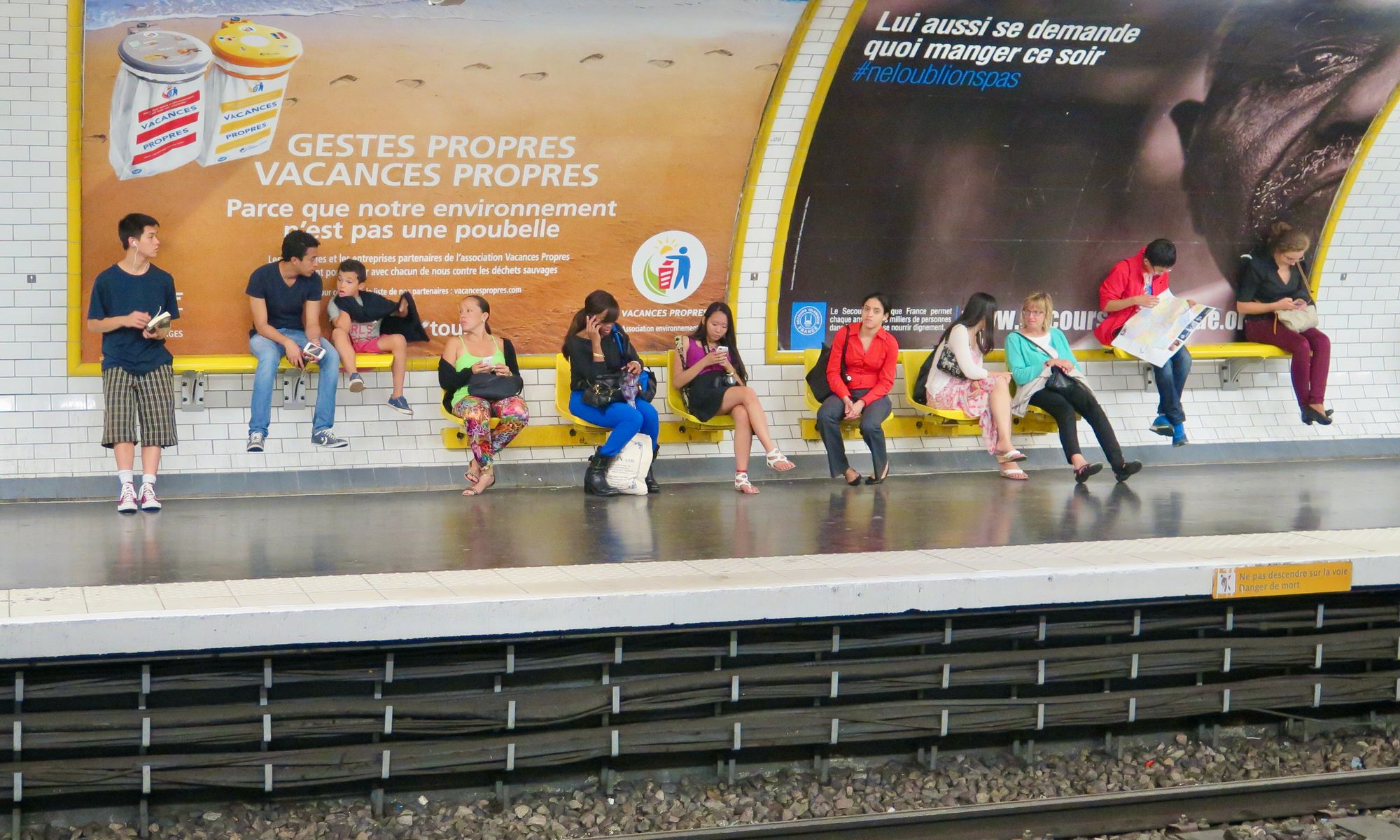
Everyone has a choice to sit or lean... even siting on the leaning ledge.
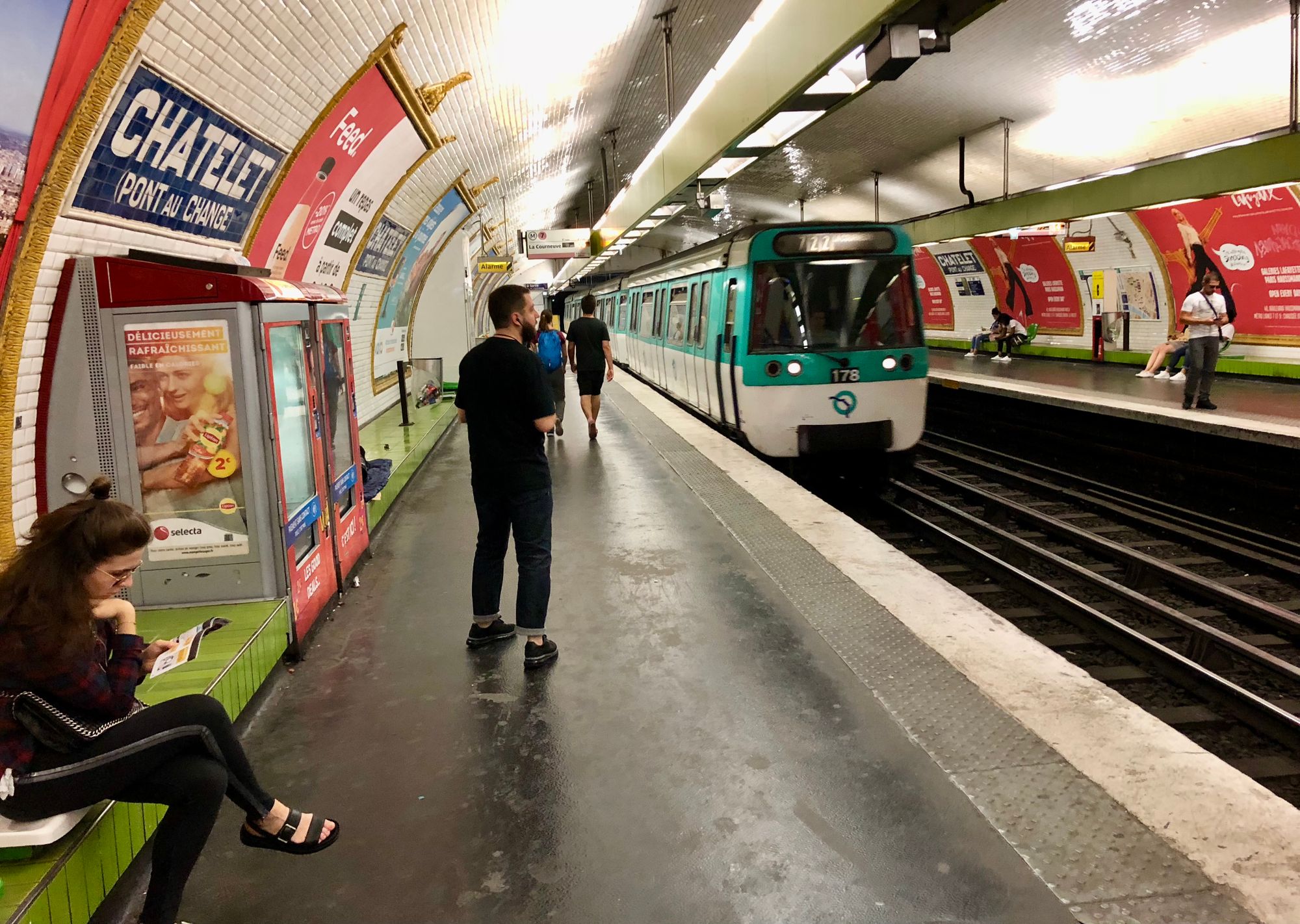
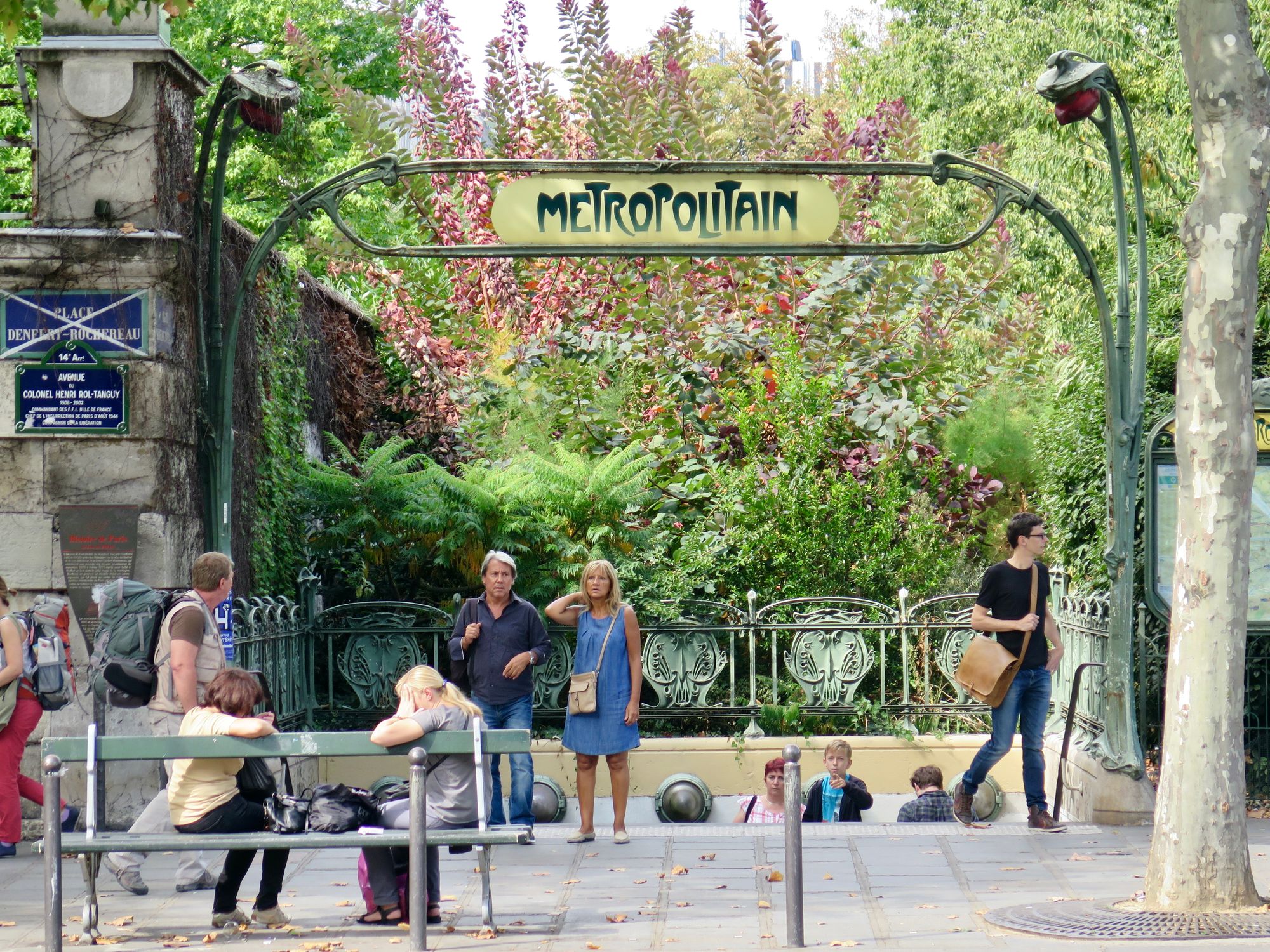
Benches all along the wall in many Paris Metro stations and a place to sit at the entrance allow people to wait for others they are meeting.
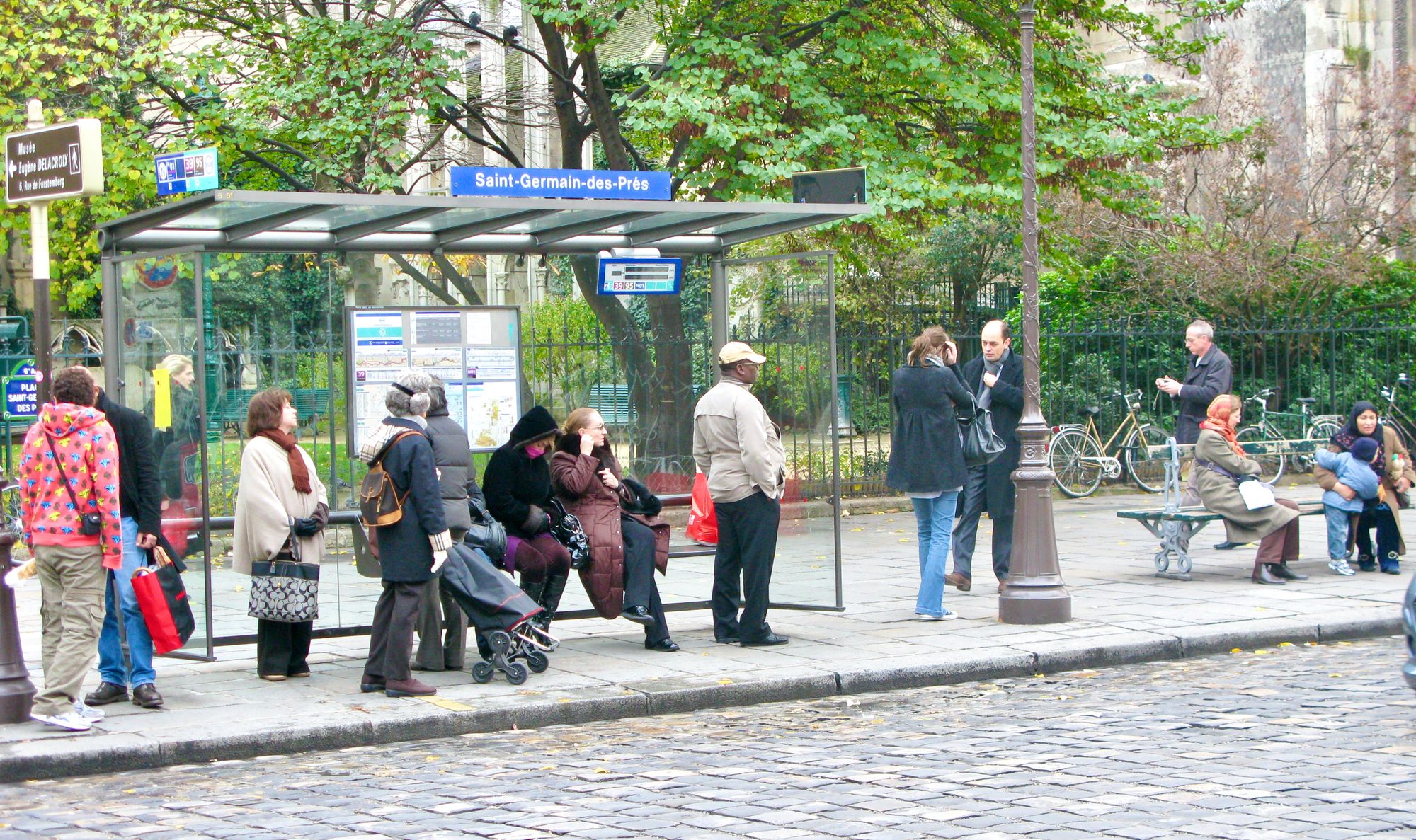
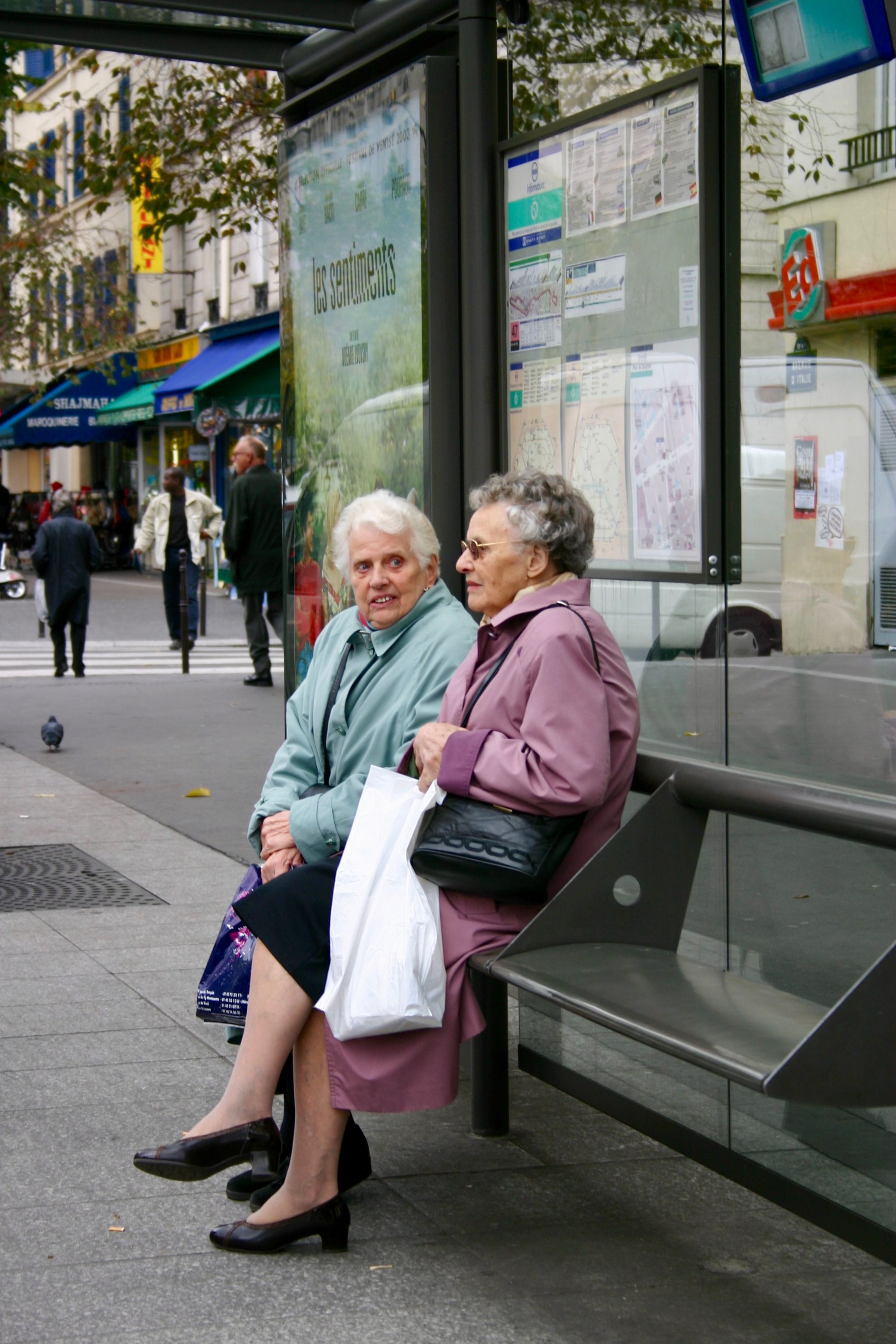

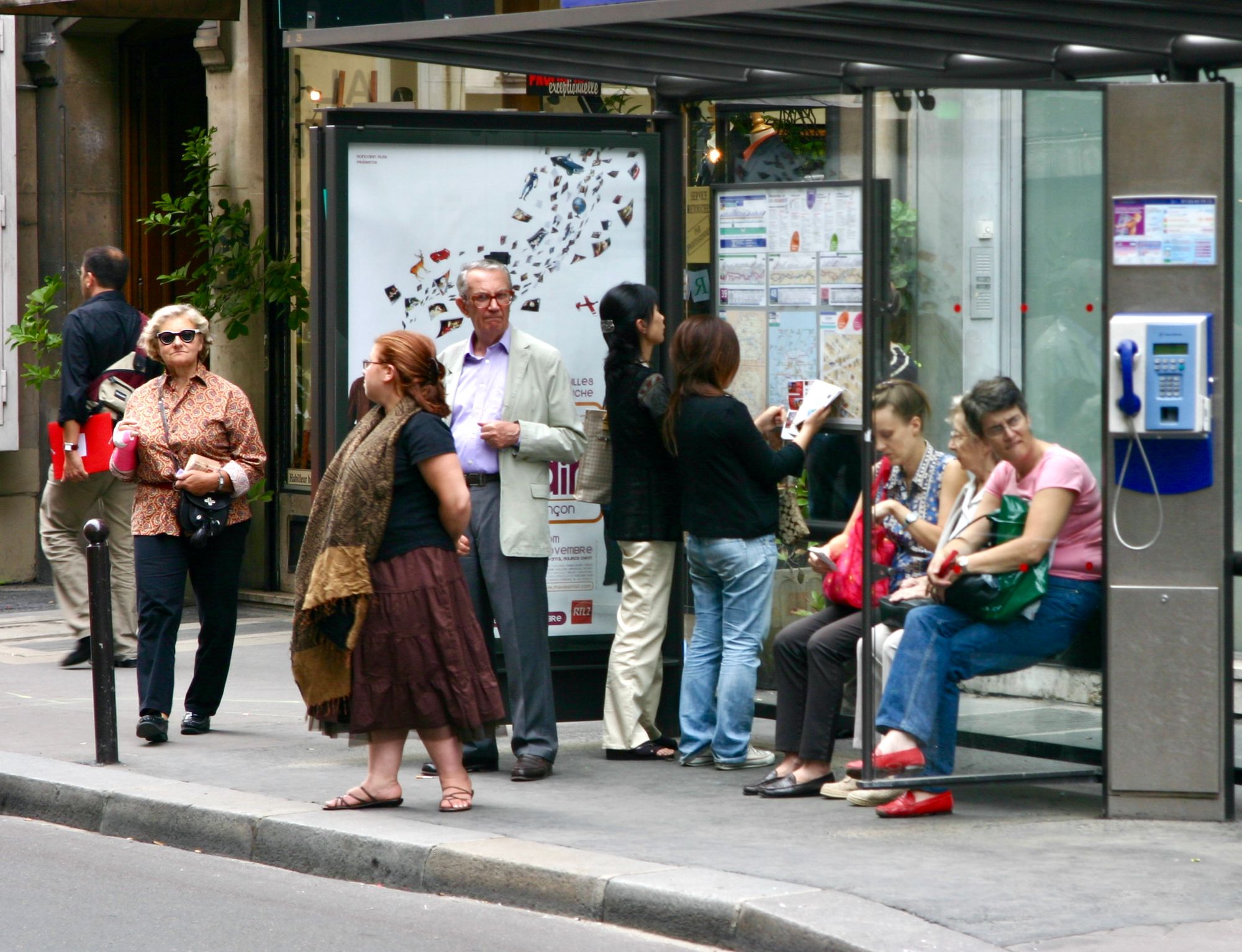
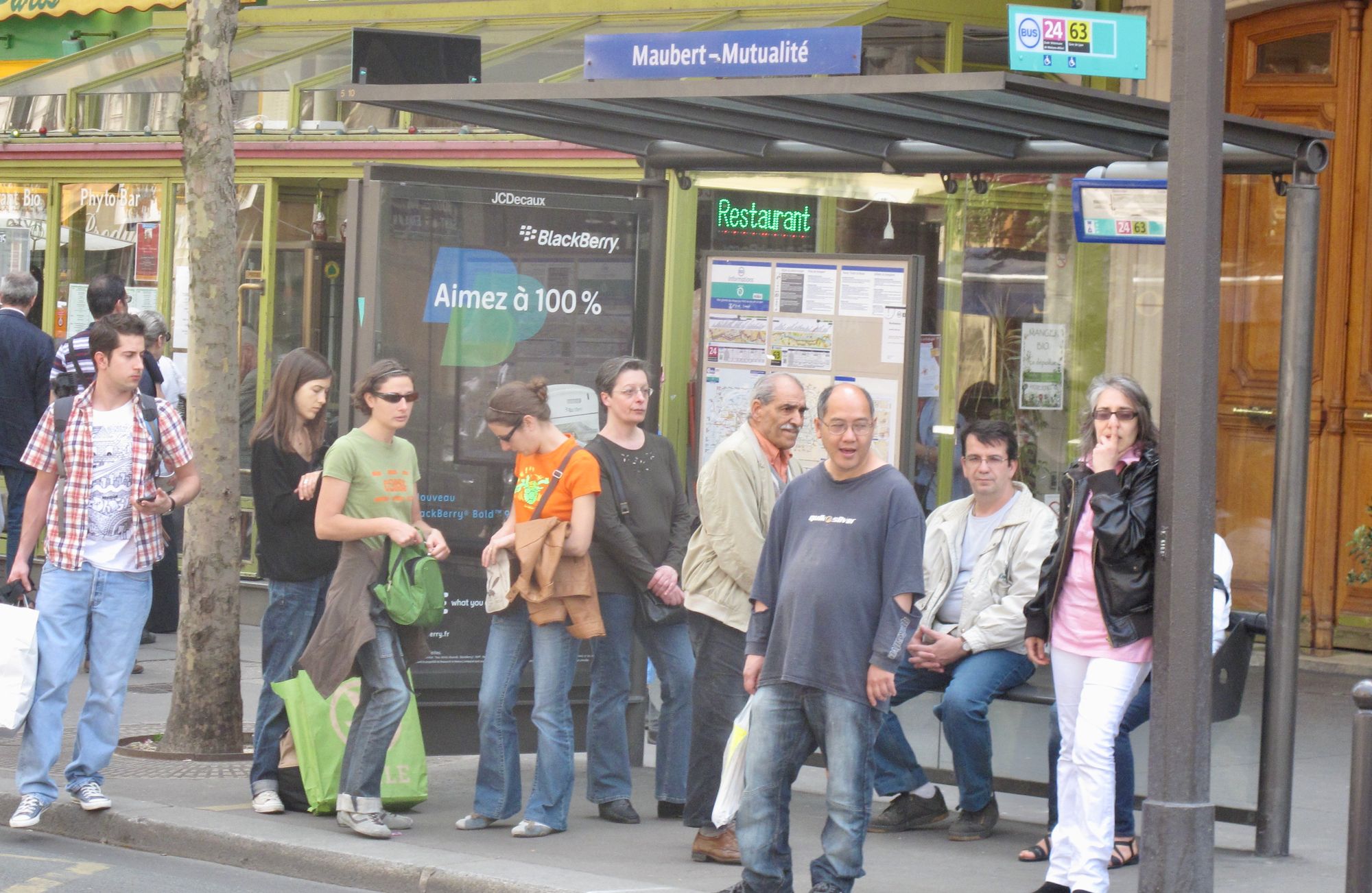
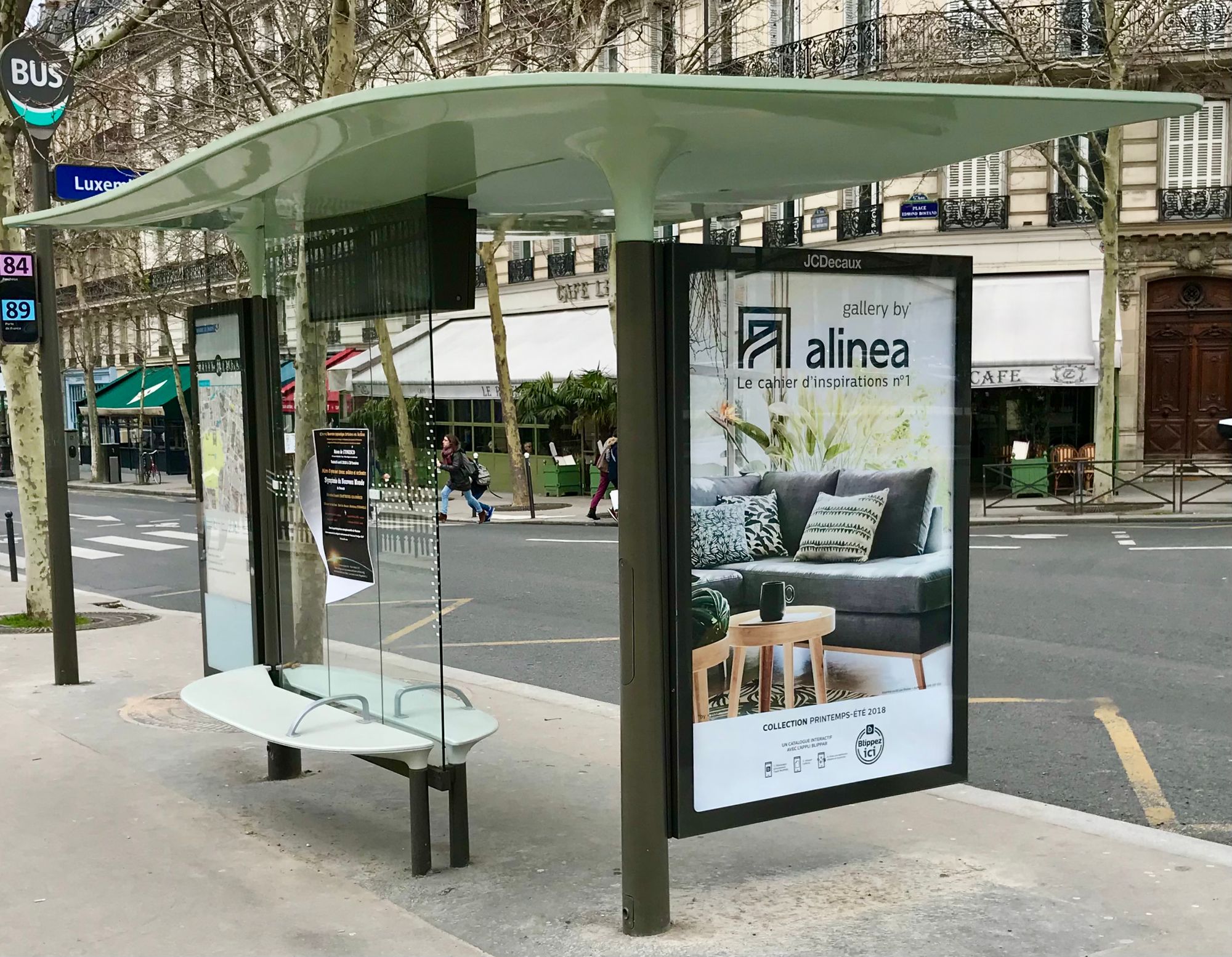
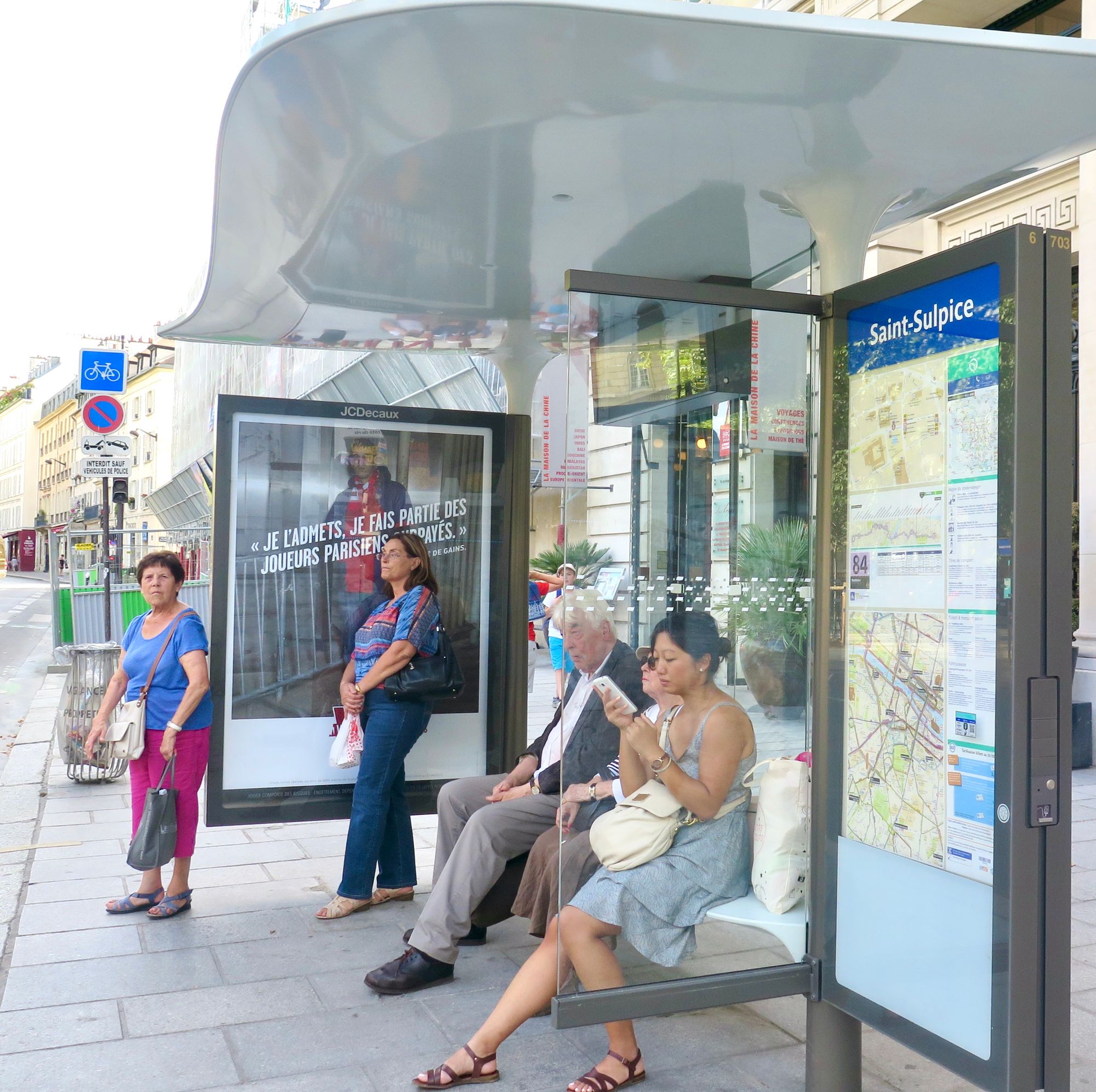
The older bus stops can handle many comfortably for the short time between buses. The newer ones serve people waiting and others who simply need a place to sit.
How to Create Seating that Doesn't Work
We seem to be in an era where art is what makes a good, innovative design rather than something that embraces people, their happiness, and their connection within their community.
Here are some examples where we could do better:
New York City - The High Line
These seats, while certainly interesting to look at, do not reflect the flexibility that makes public seating so lively. They are more design-led than people-centered.
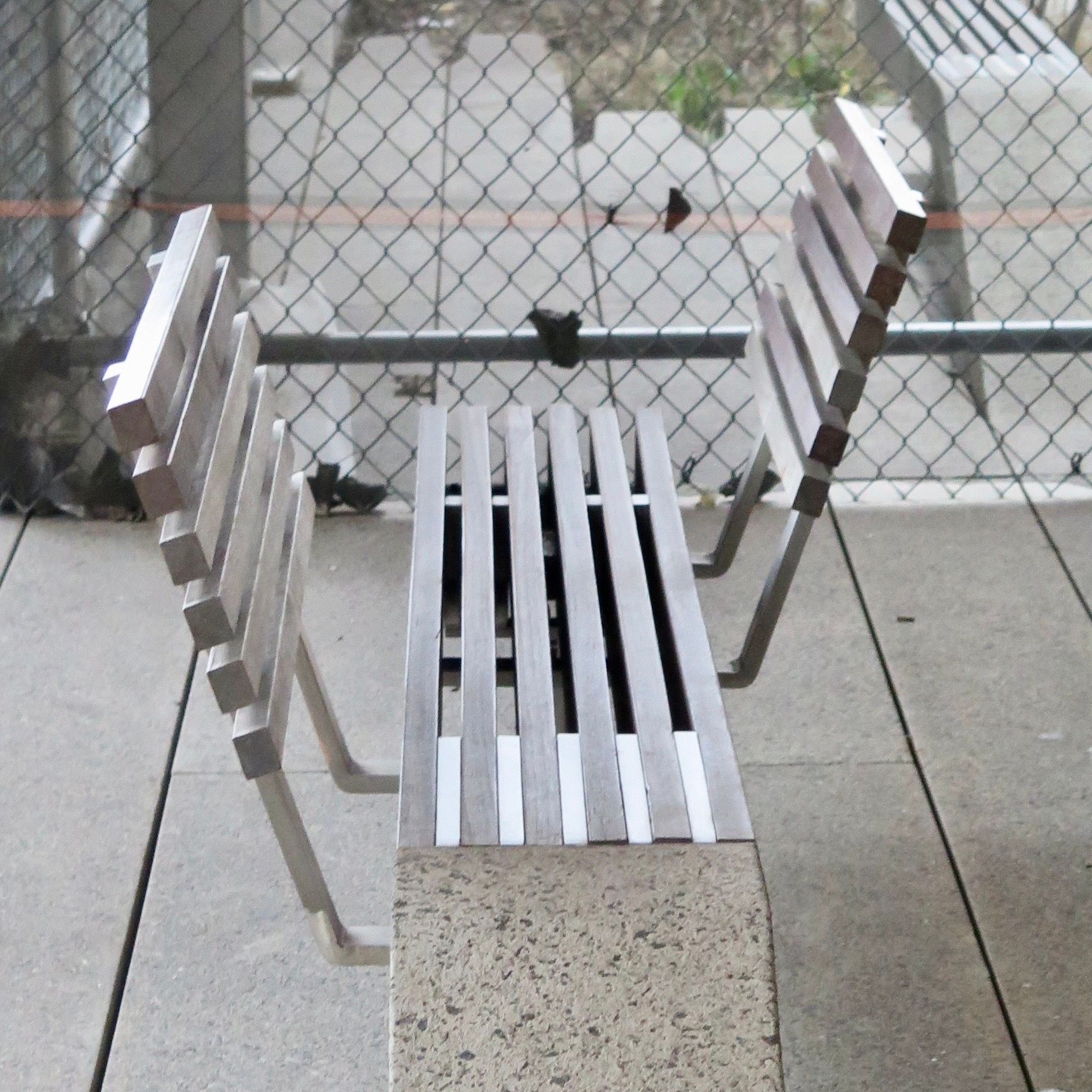
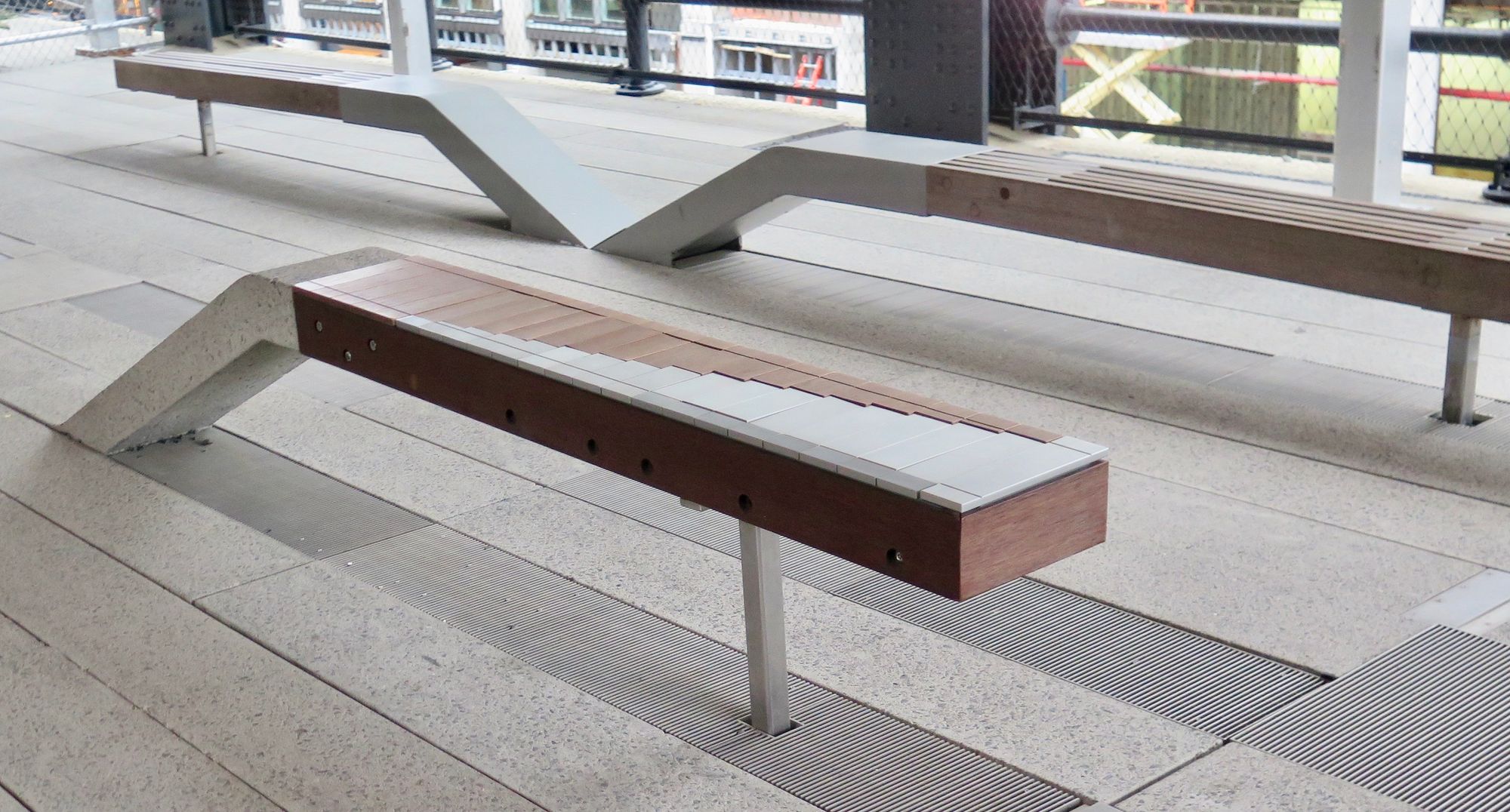
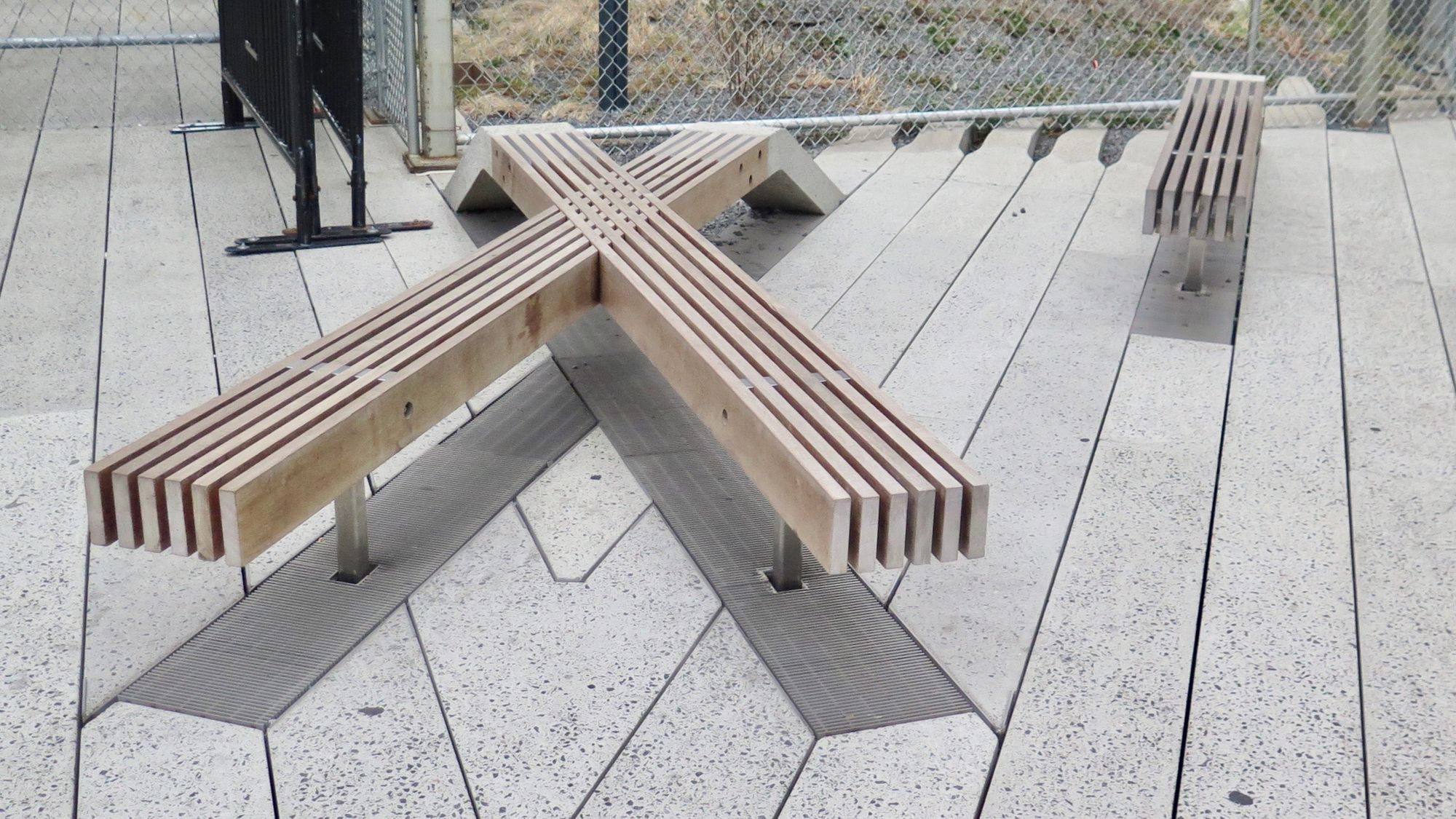
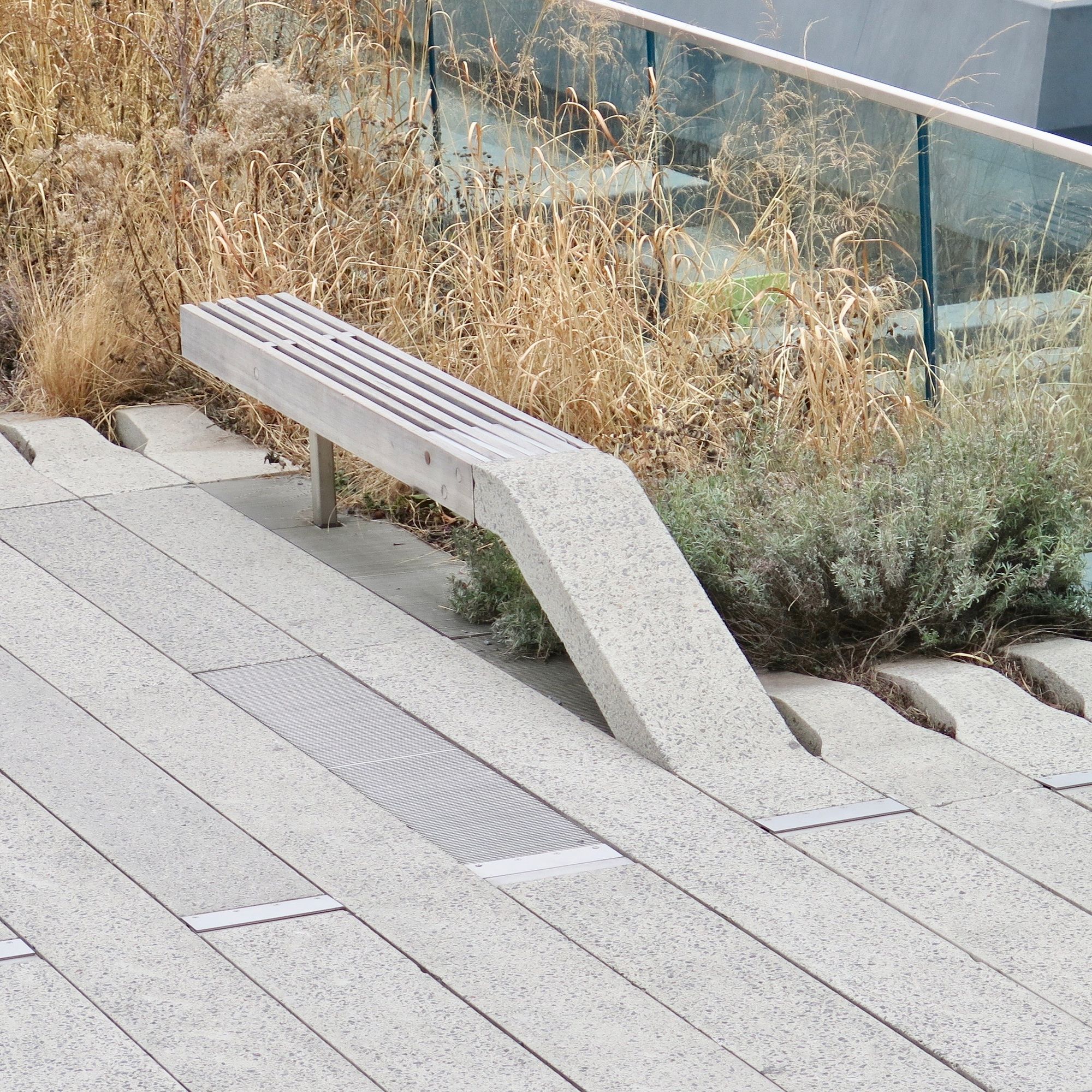
Delray Beach, Florida
Even worse are the places where there should be benches or chairs, and they've simply been left out – forcing people to make their own space to sit. Shade would also be a very important part of any bus stop.
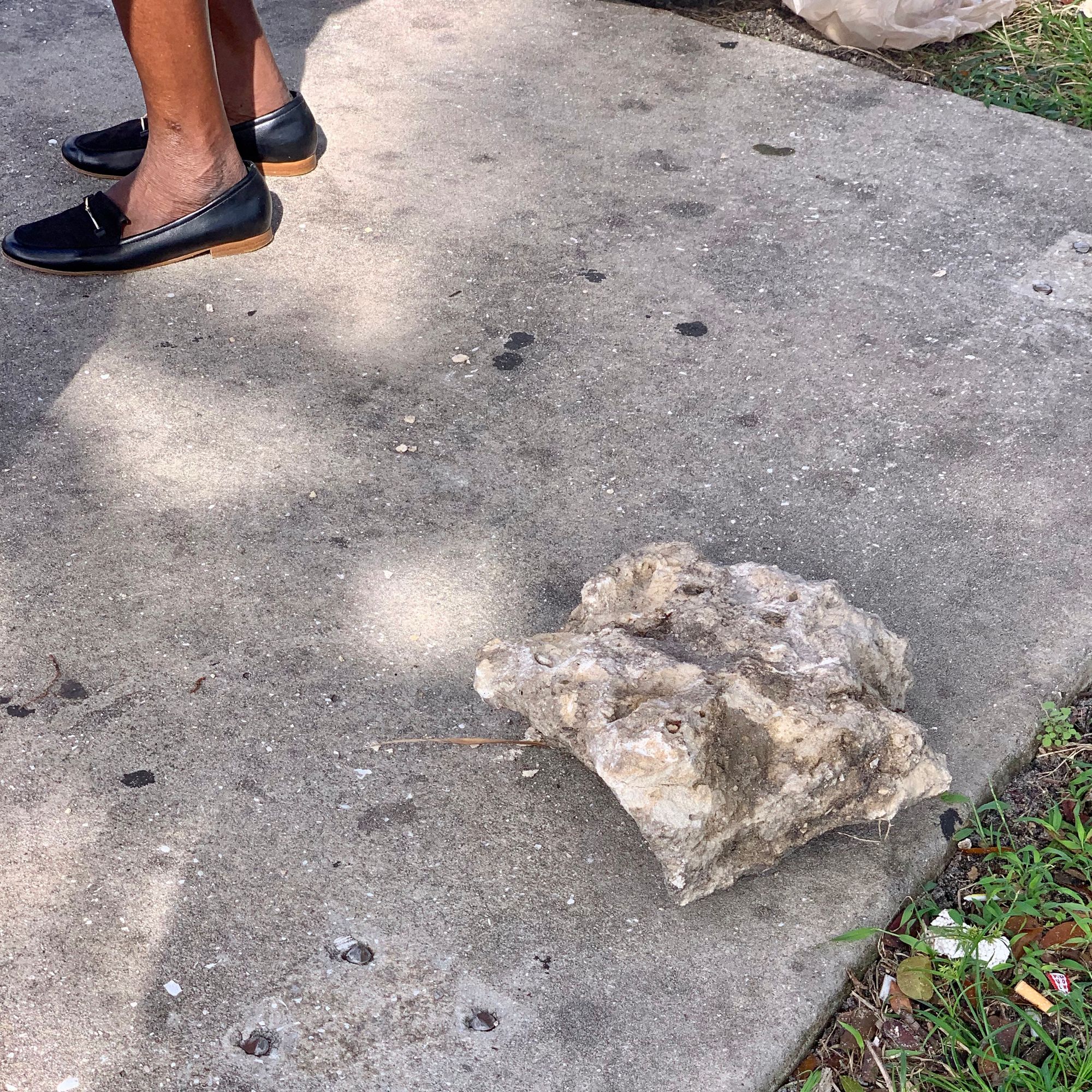
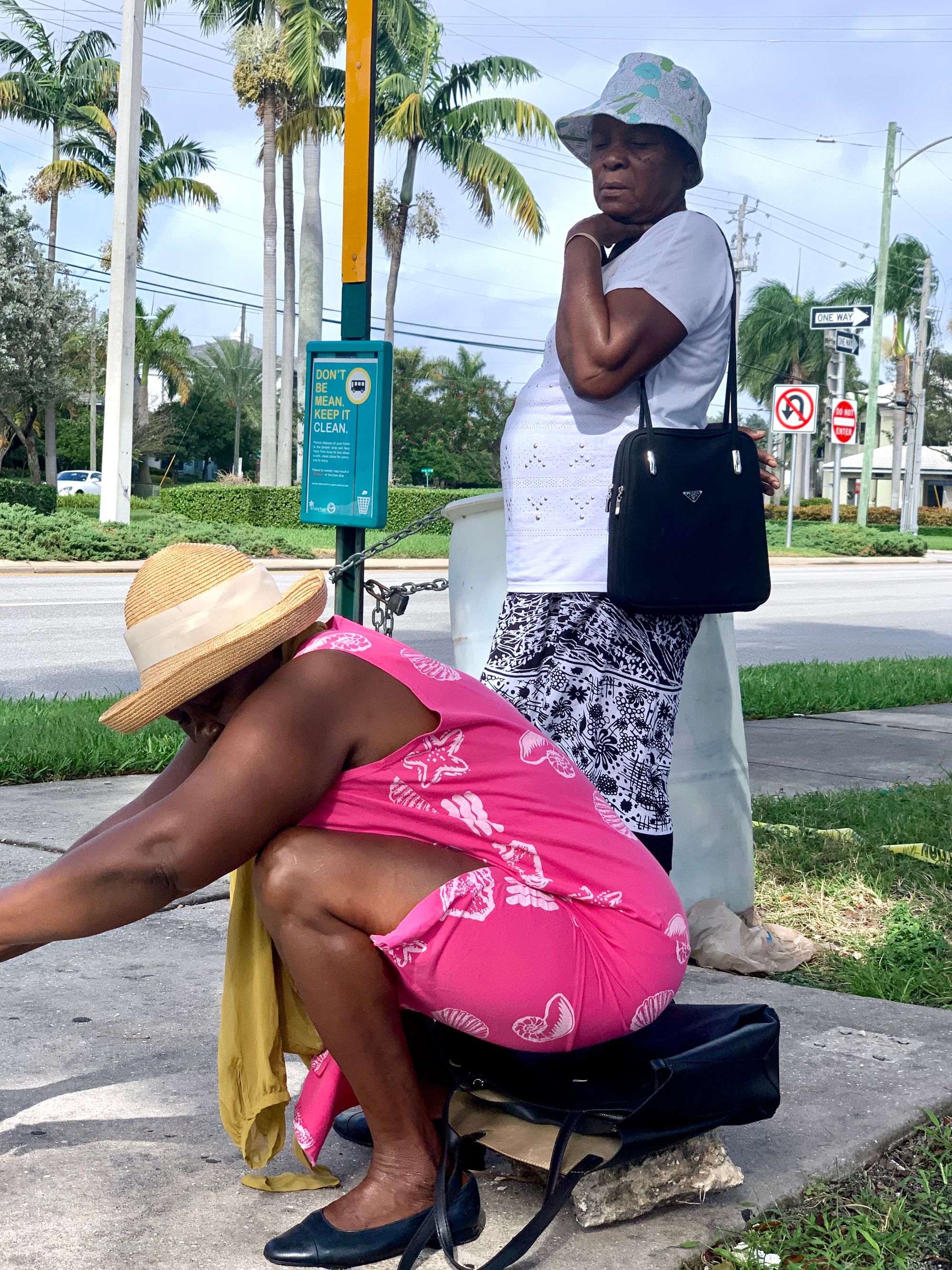
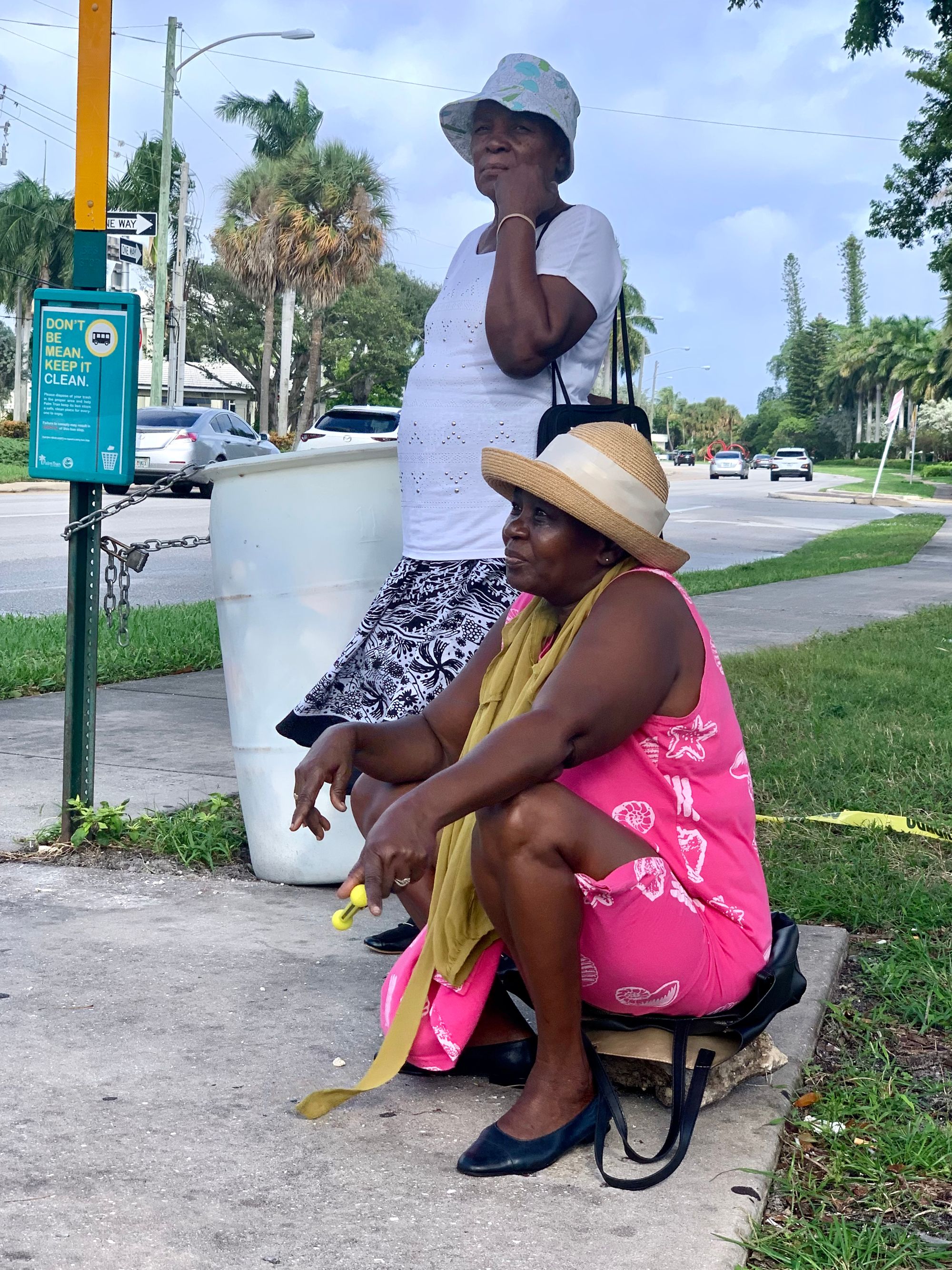
Delray Beach, Florida
On that note, a recent article titled "How to use design to make public spaces unusable and unappealing" caught our eye, and centers the fact that bench design can go one way or another, entirely: from welcoming to deeply off-putting. It puts on display the fact that, all too often, cities are making benches smaller, less comfortable, less stable, or building them out of materials that make them less usable. This is often done with the aim of keeping people from sleeping or lingering in a place, using modern or unusual design to disguise these problematic motives.
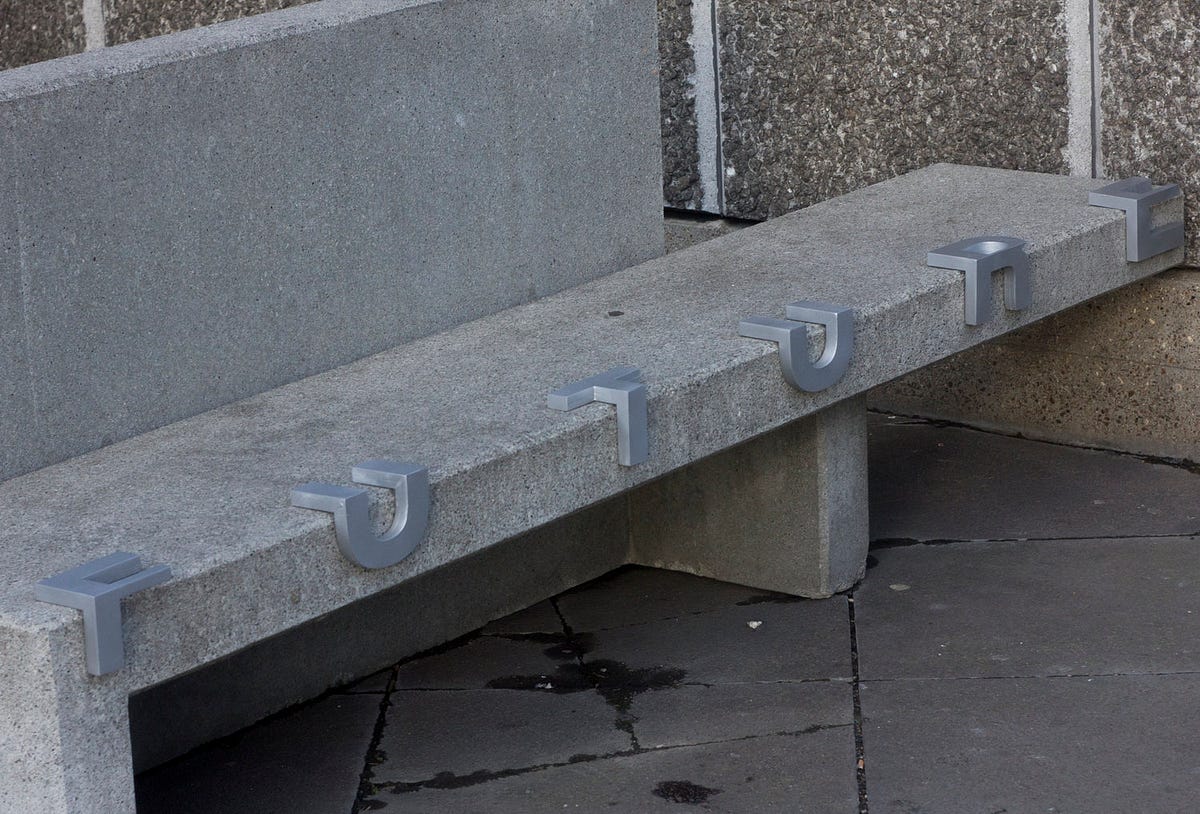
Seating is no place for hostile architecture. When these sorts of tactics are displayed, it does not only deter the behaviors that have been labeled as "undesirable" for the area (to which we might ask, undesirable for whom?), but lends the entire space a feeling of unkindness and discomfort. It goes against all the things for which public spaces should stand: inclusion, comfort, and welcoming.
Takeaways
People’s behavior is shaped by their environment. People are primed to choose an environment that respects, supports, and draws out their personality and identity. They also show how people like to participate in further shaping and adding to that environment. The virtuous process of placemaking often starts with seating, whether that is seating that shapes the ways people act in a space, or people that shape the way seating is built or set up.
As we have more freedom to choose where to be, where to invest, and where to live more than ever, it is places that allow us to be comfortable, to express ourselves, and take the opportunity to further shape them that are the most attractive. Seating is no exception to this tendency: We have seen it time and again, that where there is seating, there is life.
Related Articles
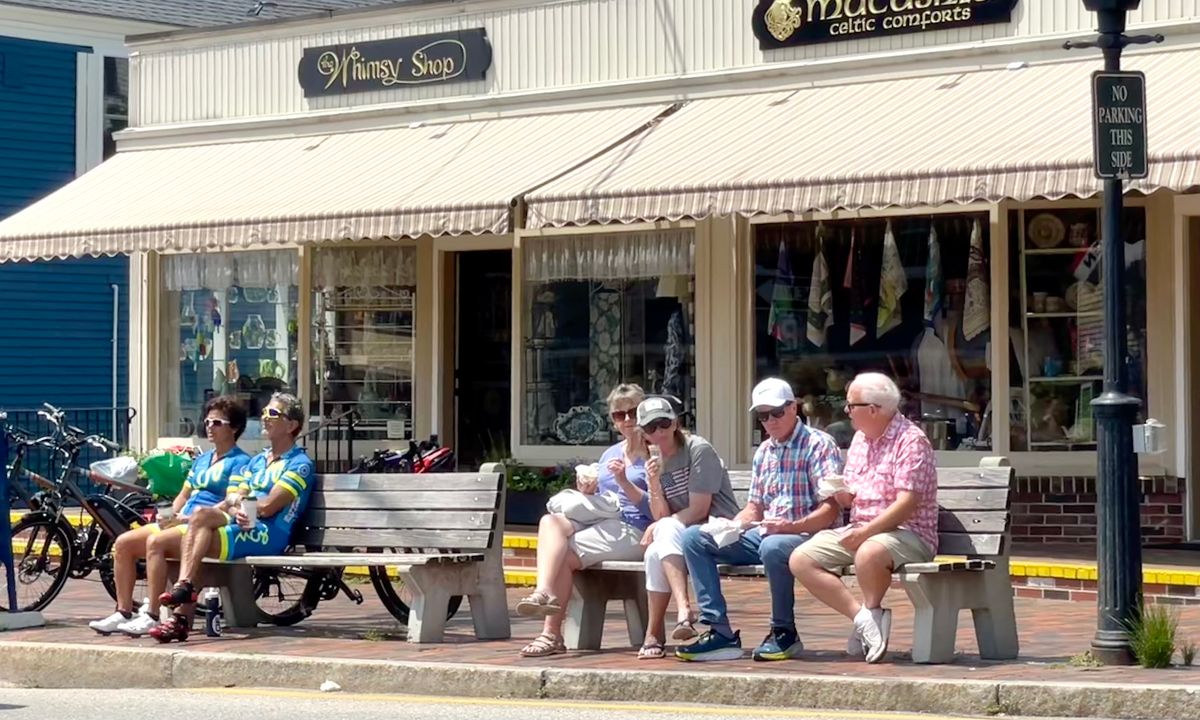
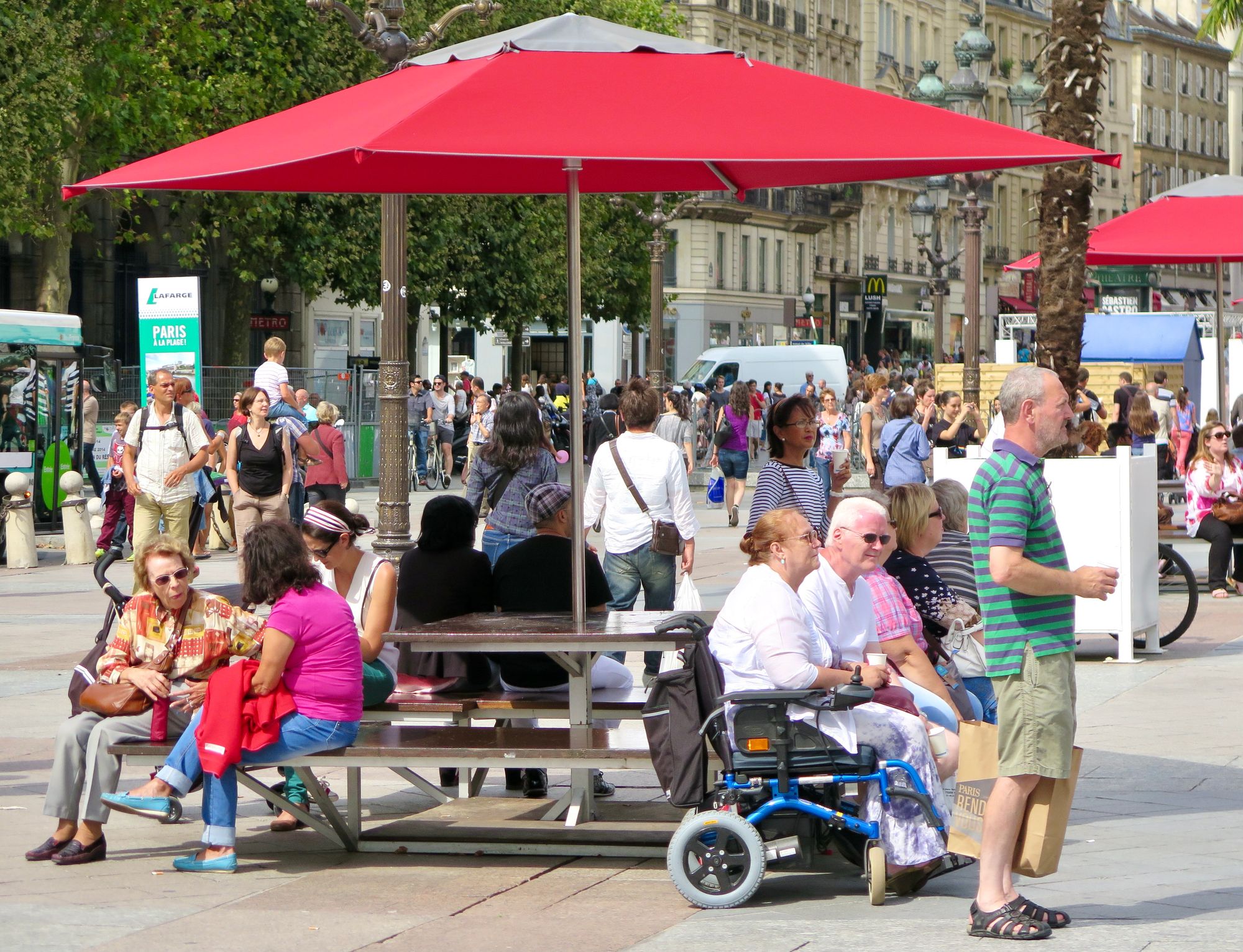
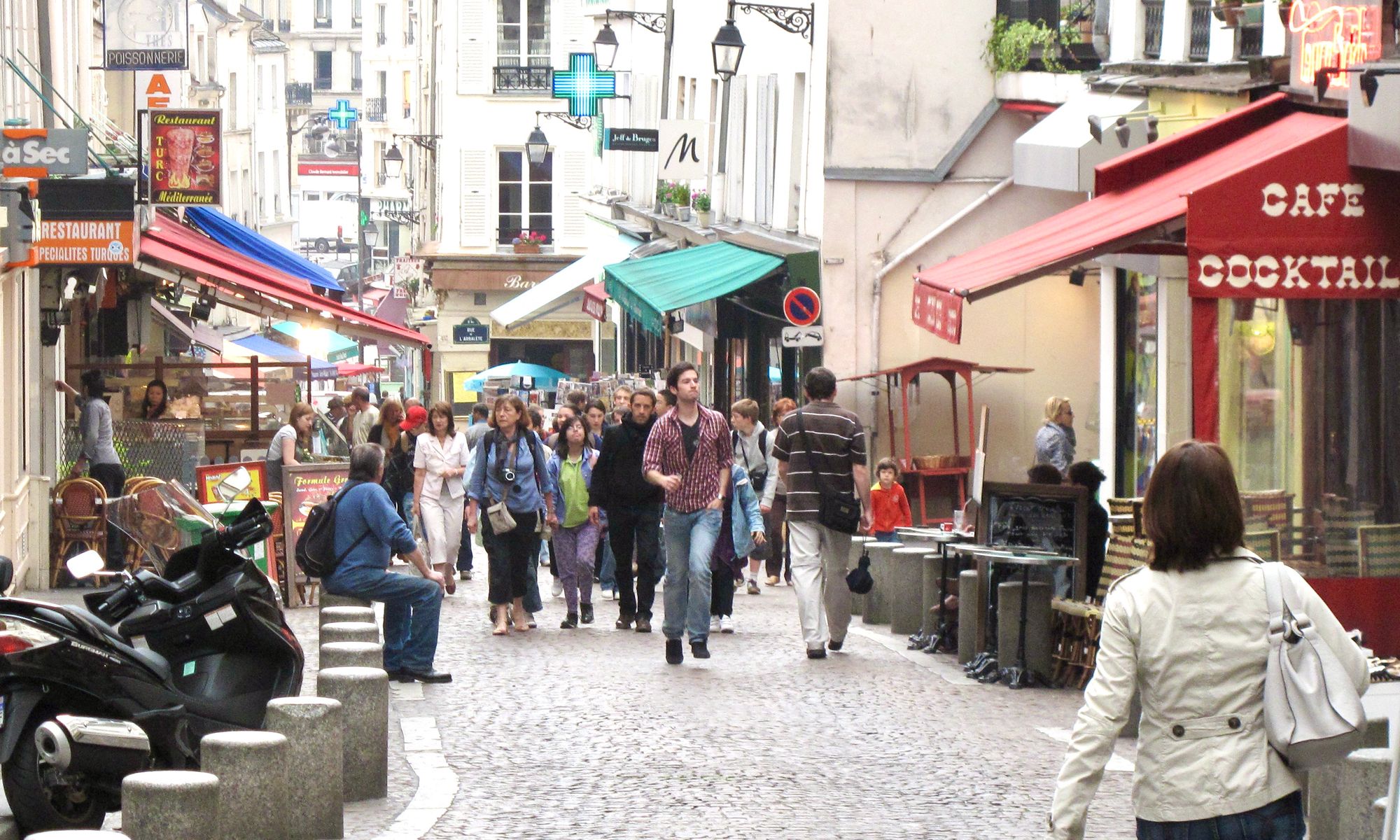
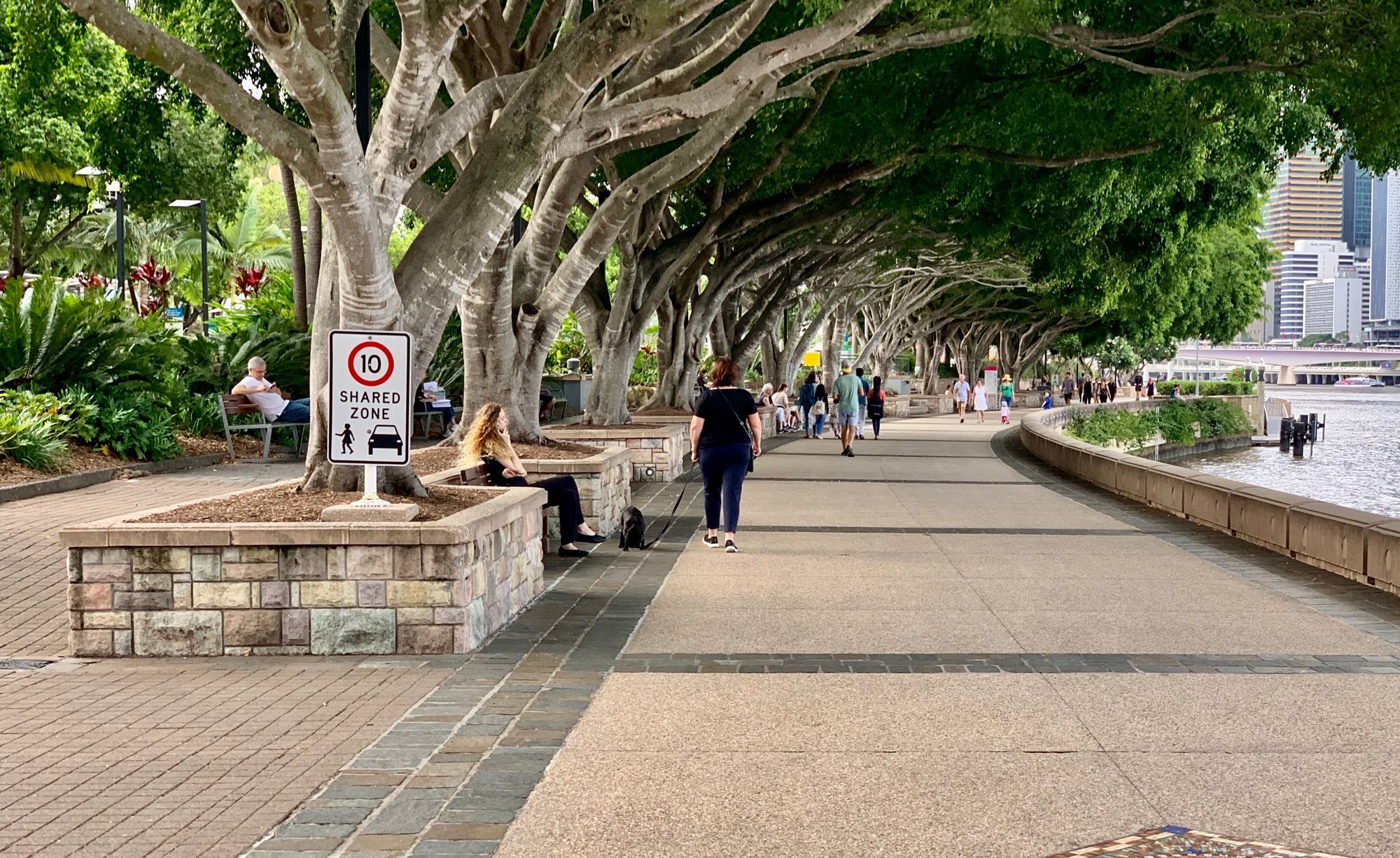
On The Placemaking Movement:
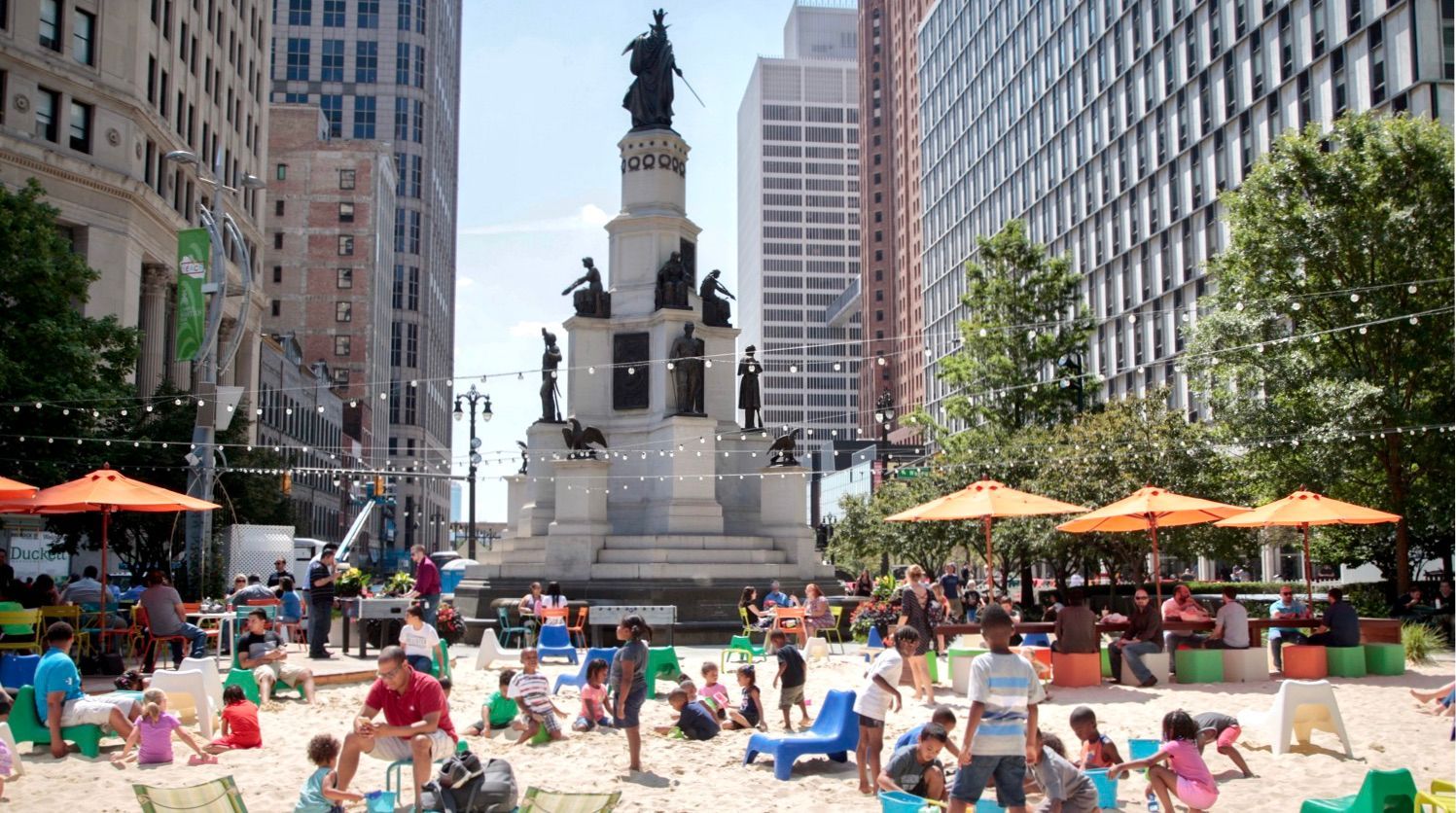
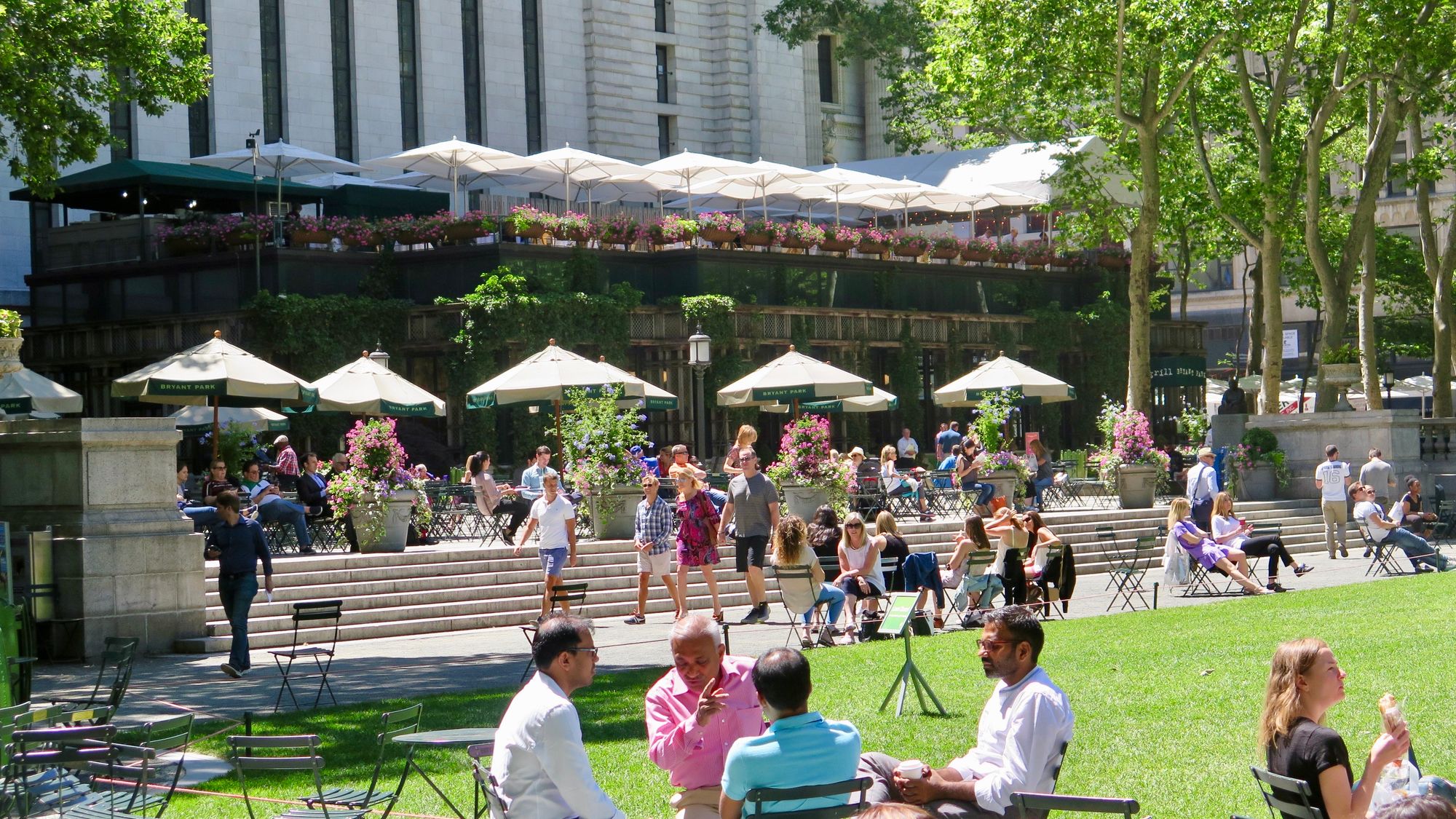
Who We Are
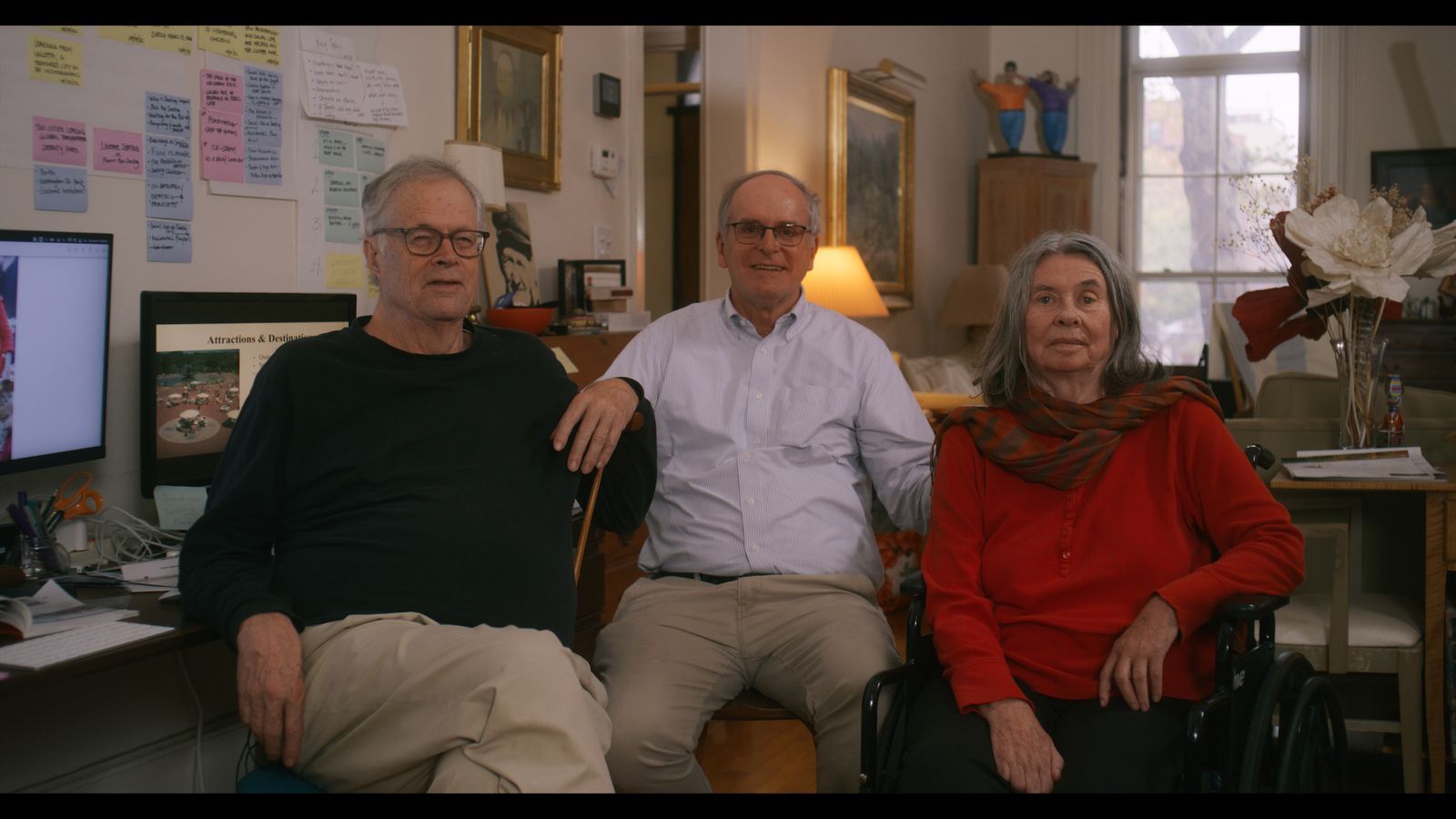
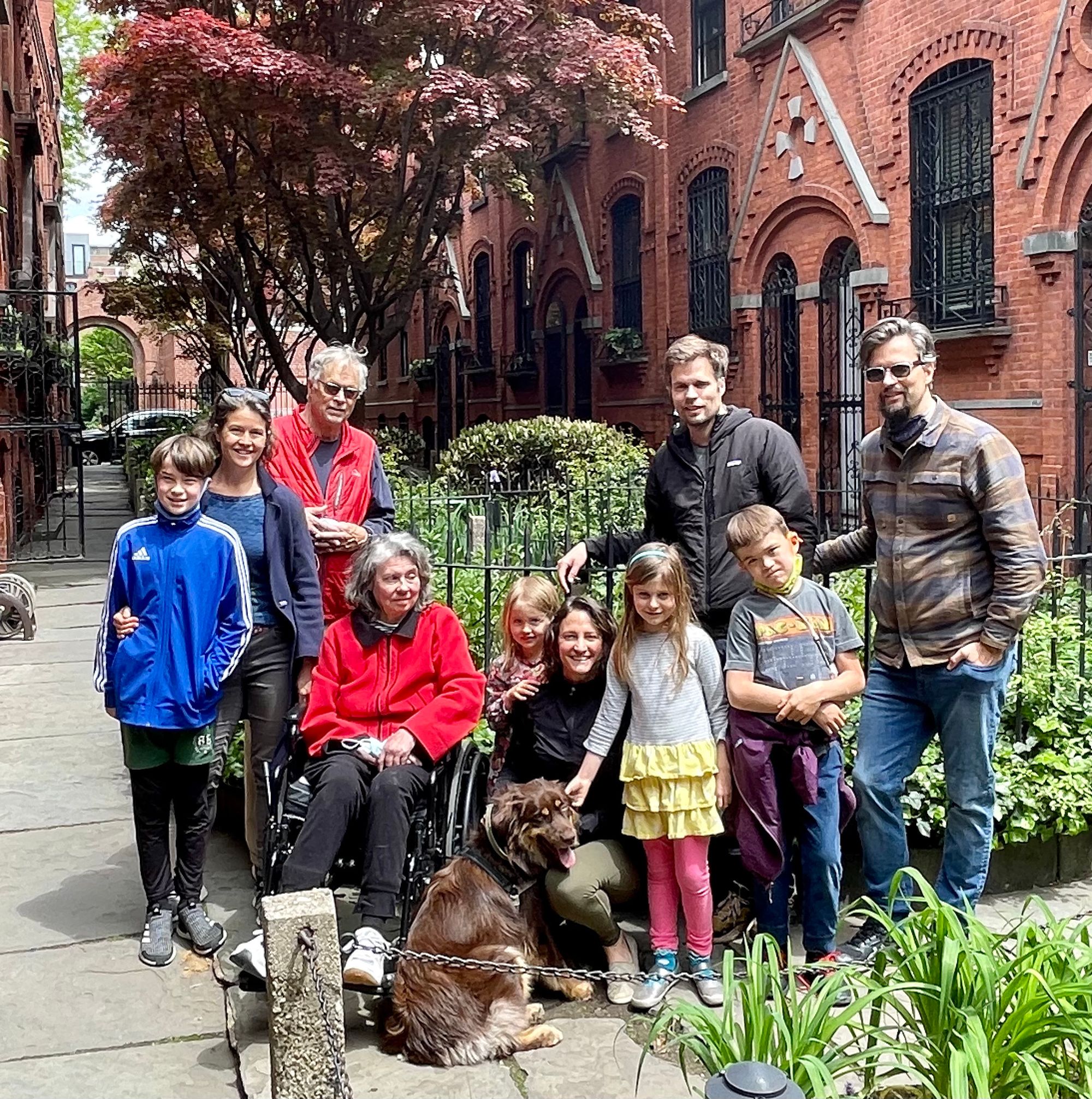
Our work is informed by living in Brooklyn
"There are more and more of us fighting for a different vision of the world—a world that takes care of our most precious resources: the air we breathe, the water we drink and the places we share." Mayor of Paris France




